Slingshot: Wearable Tech for Optimised Running
✨ Research, Product, UX
/
2019
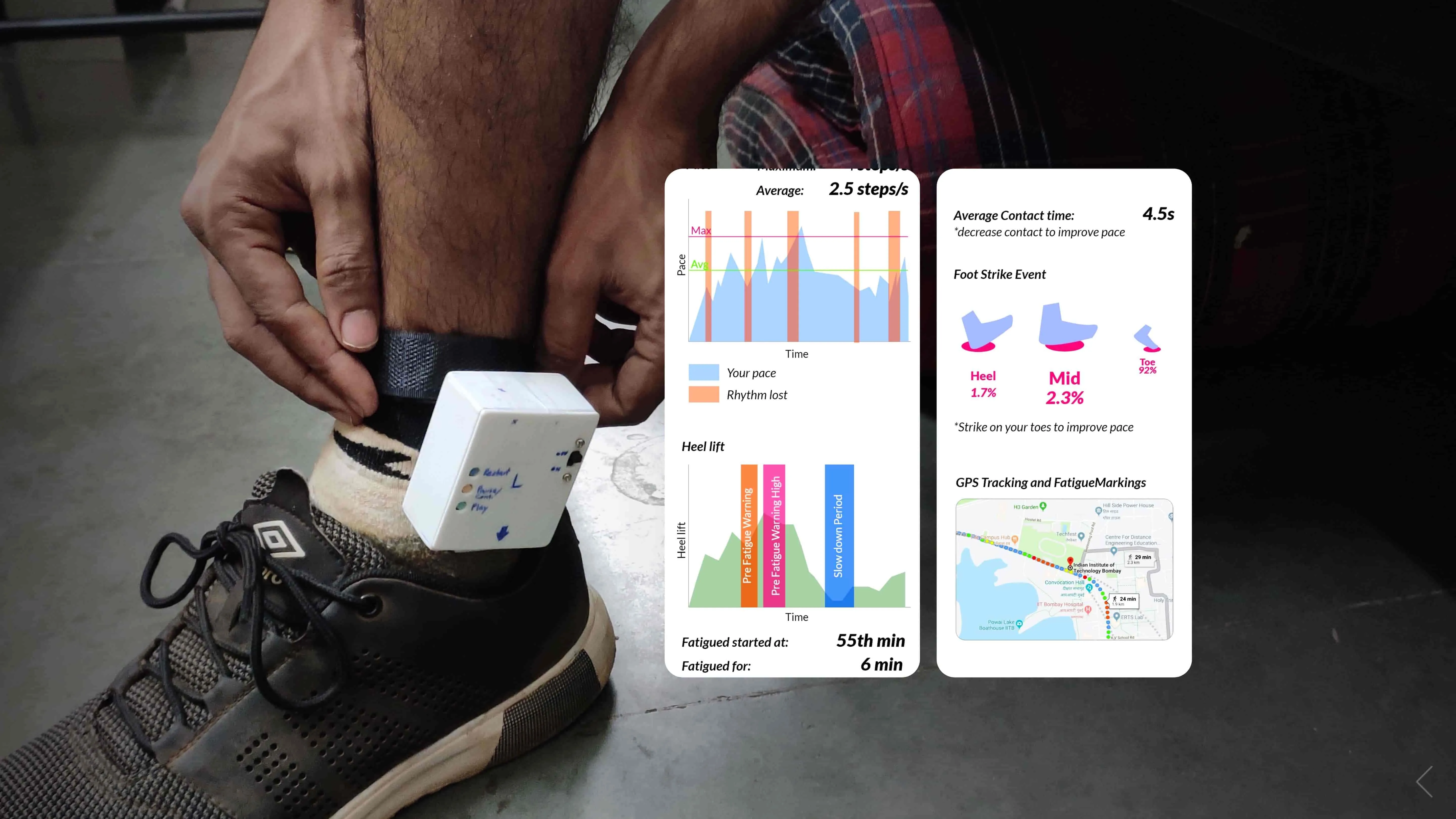
The rise of wearable fitness trackers like smartwatches and fitness bands has brought activity monitoring to the mainstream. However, while these devices track steps and sleep using Inertial Measurement Units (IMUs), they fall short in providing accurate, actionable insights for runners looking to improve performance and technique. Wrist-based tracking yields inaccurate gait data, as precise analysis requires foot-based measurement. Slingshot addresses this gap by being a low-cost, foot-worn wearable designed to leverage kinematic features (gait analysis) to help runners optimize their technique, improve performance, and receive fatigue alerts - features often missing in standard trackers. This project involved user research, ideation, prototyping, and evaluation to develop this specialized running tool.
My Role
Led User Research & Analysis to define problems, driving Ideation, Scenarios, Concept & UX Design, Prototyping, and User Testing.
The Team
1 Designer, 1 Professor
Timeline
Jan 2019 - Jun 2019
The Problem: Lack of Actionable Gait Data for Runners
Running carries a high risk of injury, often linked to improper technique or fatigue. While gait analysis is crucial for injury prevention and performance enhancement, traditional methods are lab-based and expensive. Current wearables present several issues:
-
Inaccurate Data: Wrist-worn devices provide inaccurate step counts and lack detailed gait parameters because they don't measure foot movement directly.
-
Missing Insights: Most fitness trackers focus on metrics like distance and pace, neglecting crucial running technique analysis (e.g., foot strike, pronation, contact time) needed for improvement and injury prevention
-
Lack of Fatigue Monitoring: Existing devices generally don't provide fatigue level alerts based on gait changes, which is critical for preventing overexertion injuries.
-
Smart Shoe Limitations: While smart shoes exist, they are often expensive and prone to damage, limiting their adoption.
-
App Inconvenience: Using phone apps requires carrying the phone, adding weight and potentially needing internet access.
There's a clear need for an affordable, convenient, foot-mounted device that accurately measures key gait parameters and provides runners with actionable feedback on performance and fatigue.
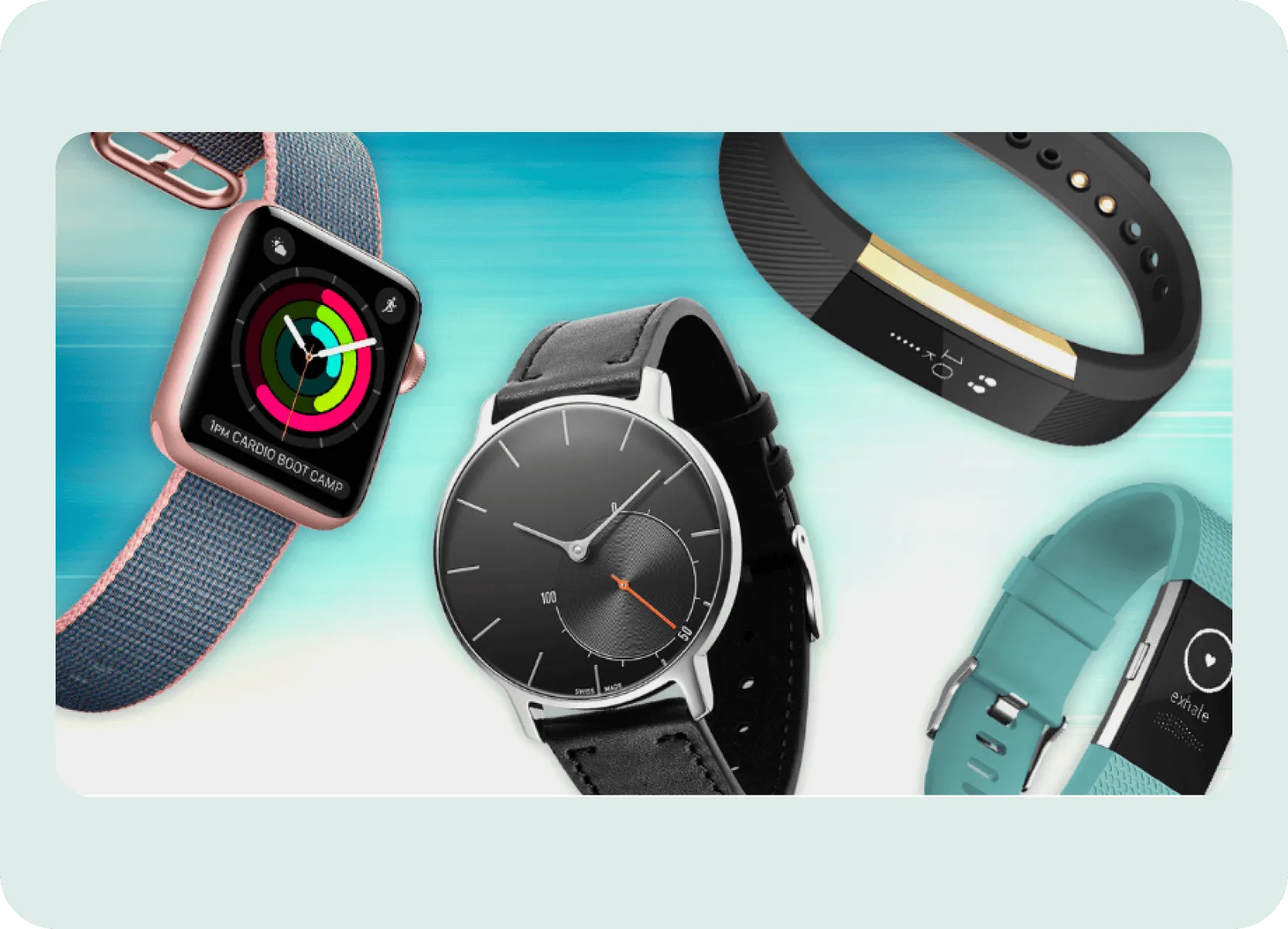
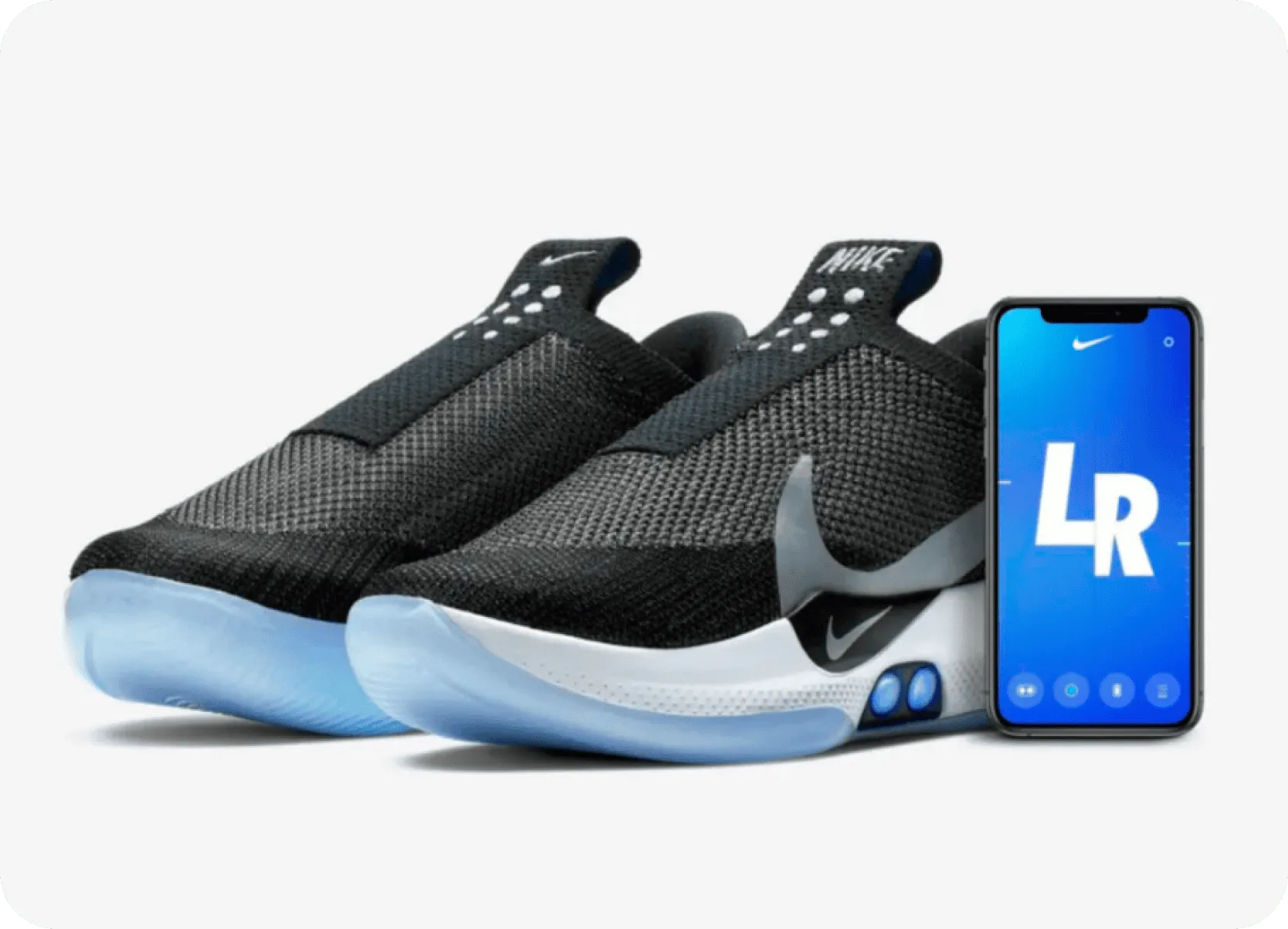
Research & Discovery
Our research process involved understanding the domain and validating initial concepts:
1. Literature Review
Explored existing research on running biomechanics, gait analysis importance, injury causes (technique, fatigue), and current gait capture methods (optical, EMG, IMUs). IMUs emerged as a reliable, low-cost, mobile solution for gait monitoring, especially when foot- or shank-mounted.
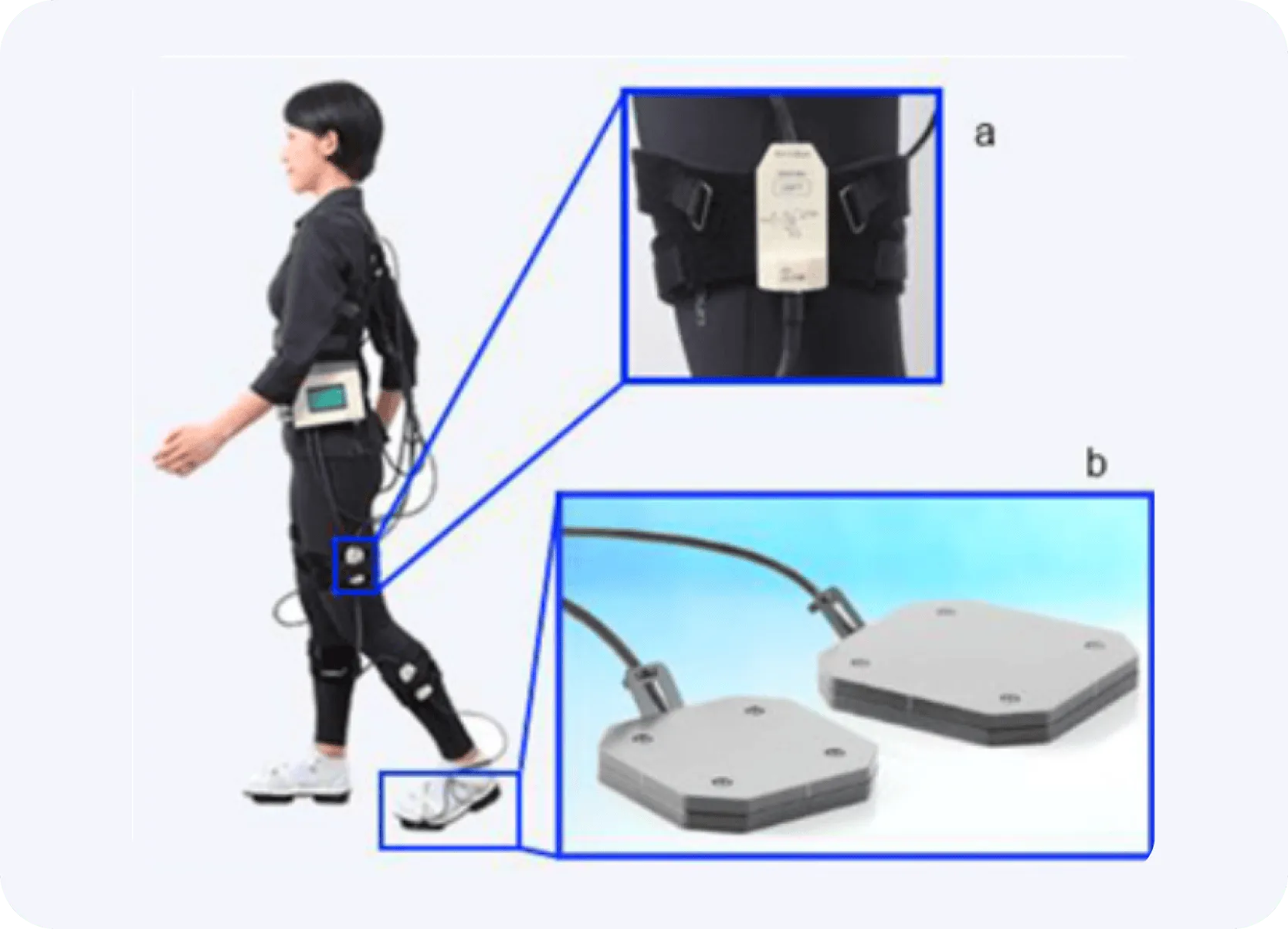
2. Secondary Research (Market Analysis)
Analyzed existing fitness bands, smart shoes (Nike Adapt), and fitness apps (Nike Run Club). Identified common features but also confirmed limitations in accuracy, lack of detailed gait analysis, absence of fatigue alerts, and usability issues
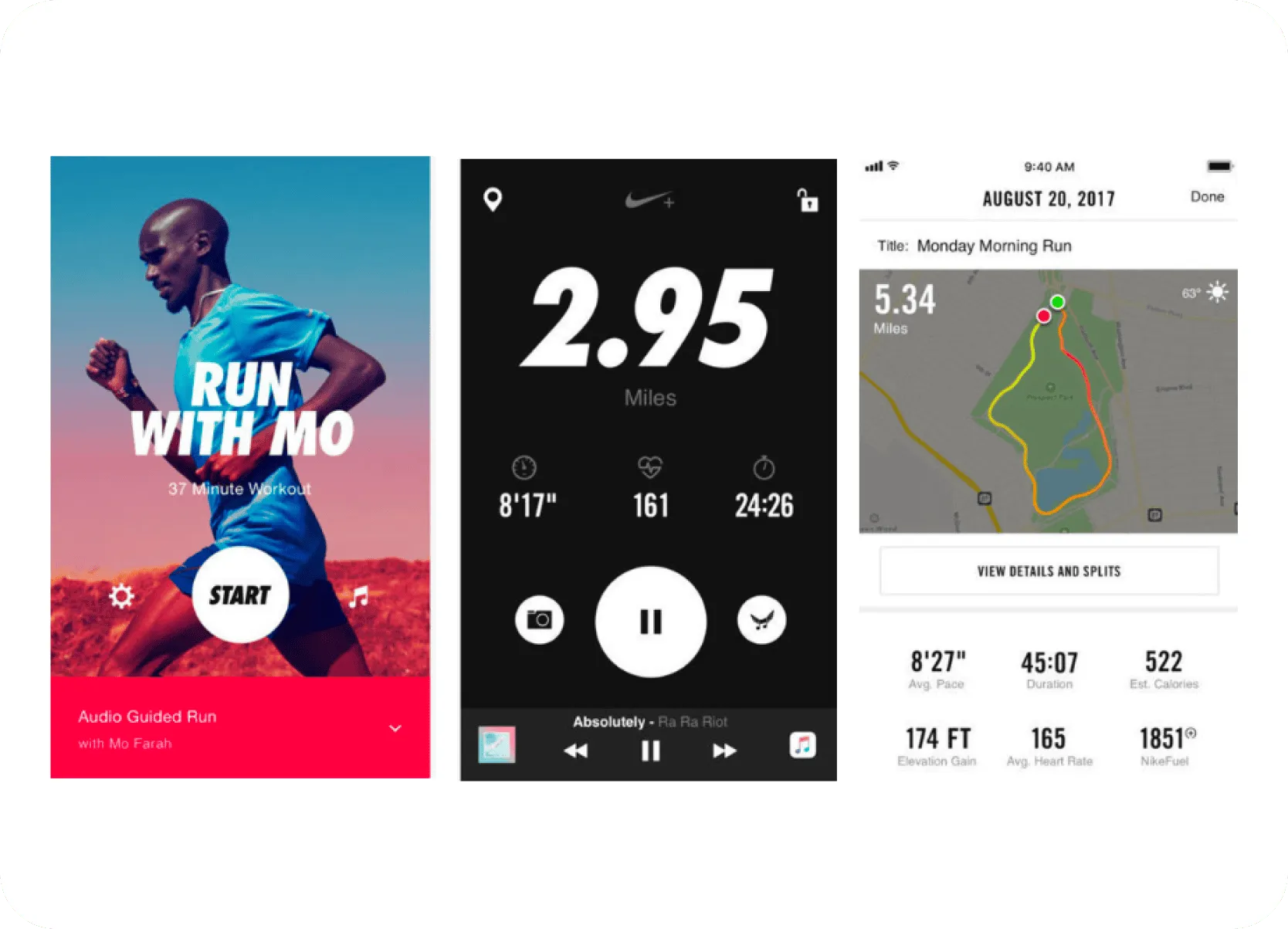
3. Primary Research (Initial Prototype & Feedback)
Developed a low-cost prototype using IMUs and piezoelectric sensors on the foot and shank to capture gait data during walking. Visualized data using Tableau. Received feedback from doctors who highlighted the potential for a low-cost gait analysis tool in sports, physiotherapy, and patient education, recommending a focus on the sports market and improved accuracy/visualization. User testing showed footwear affects gait and users found the data informative. This phase confirmed the viability of an IMU-based approach and led to refining the concept for runners, incorporating technique analysis and fatigue alerts.

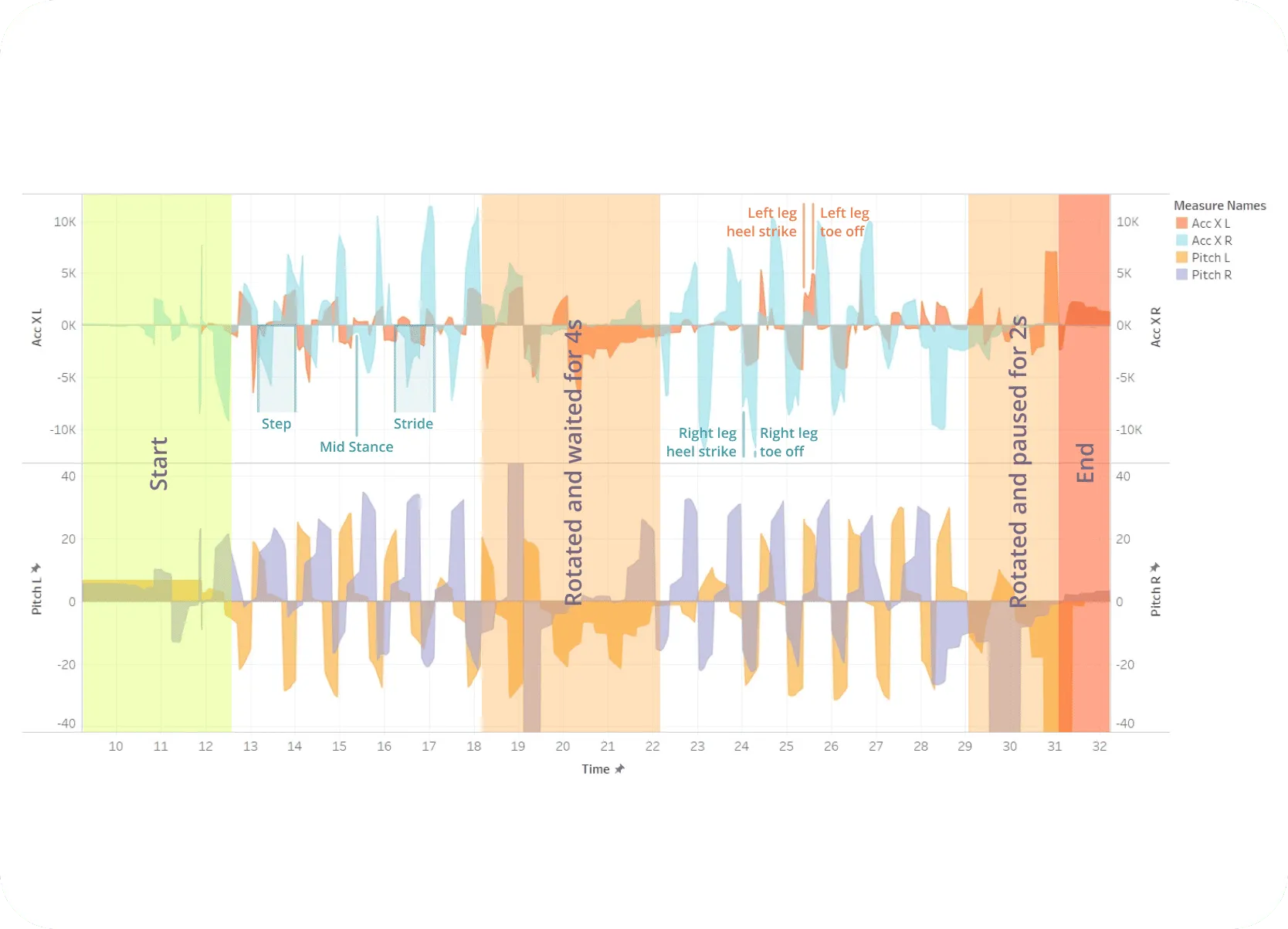
Defining the Opportunity & Goals
The research confirmed a gap in the market: runners, especially those training seriously, need more than basic activity tracking. They require accurate, foot-based gait analysis to understand technique, prevent injury through fatigue monitoring, and ultimately improve performance. Existing solutions are either inaccurate (wrist-bands), expensive/impractical (smart shoes, labs), or lack necessary features.
Goals:
-
Develop a low-cost, foot-mounted wearable using IMUs to accurately capture key running gait parameters.
-
Analyze gait data to provide feedback on running performance and fatigue levels.
-
Running rhythem
-
Incorporate Fartlek training principles and provide real-time feedback (e.g., vibration) to assist technique.
-
Visualize data effectively for user understanding.
-
Target joggers and running athletes training for performance improvement or marathons
Unique Proposed Features: Measurement and feedback based on Contact Time, Step Rate, Stride Length, Footstrike Type, Heel Lift, Max Pronation Velocity, Pronation Excursion, Stance Excursion, and fatigue alerts.
Ideation & Concept Development
Mind Mapping
We explored several concepts using mind mapping around foot actions, gestures, and running comfort.

1. E-textile Smart Socks
Washable socks with integrated pressure sensors (Velostat), flexible PCB, NFC, and internal storage.
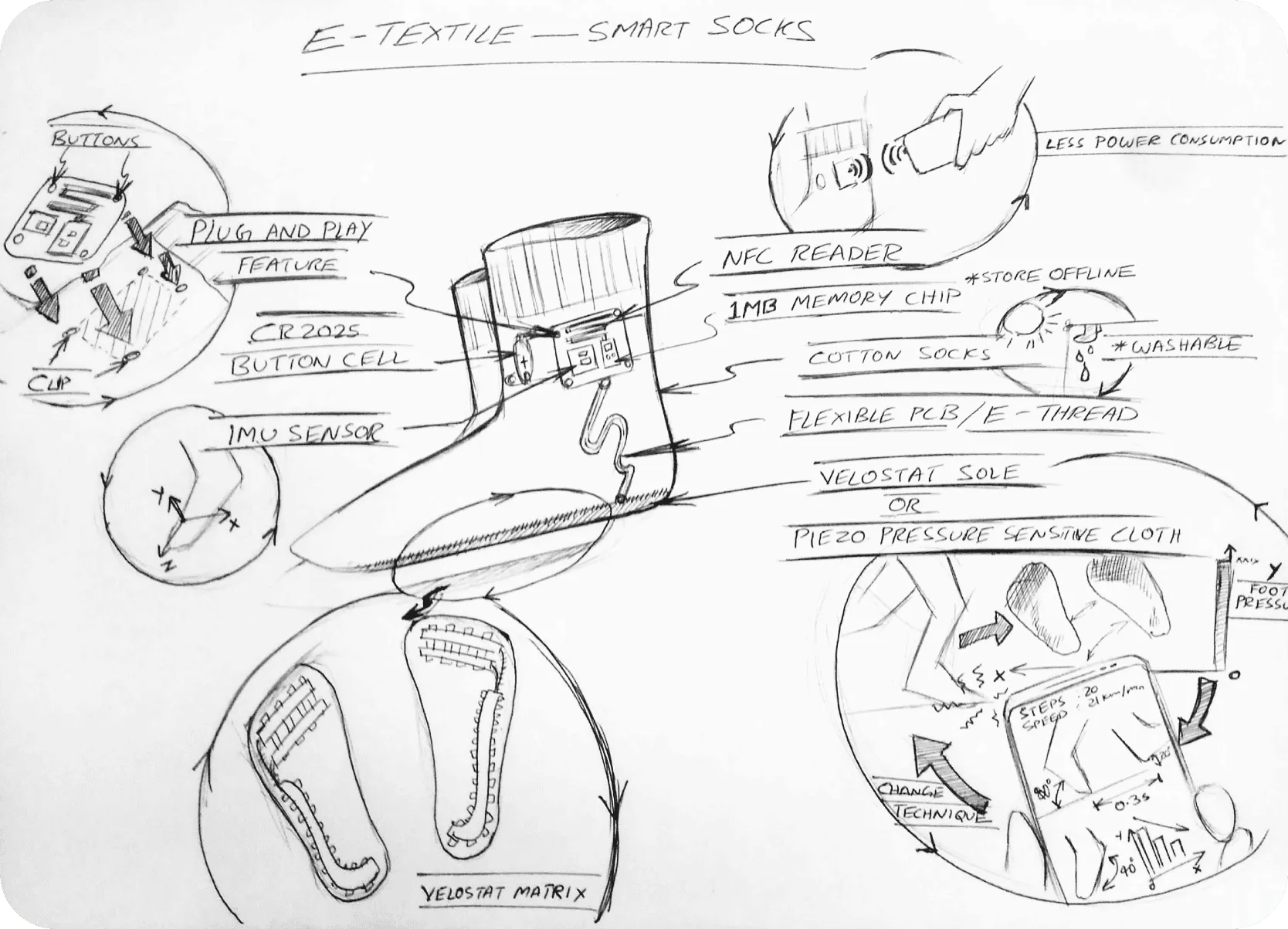
2. Kinematic Modules
Multiple BLE-connected modules for versatile body placement, live data streaming, USB charging, in a polycarbonate casing.
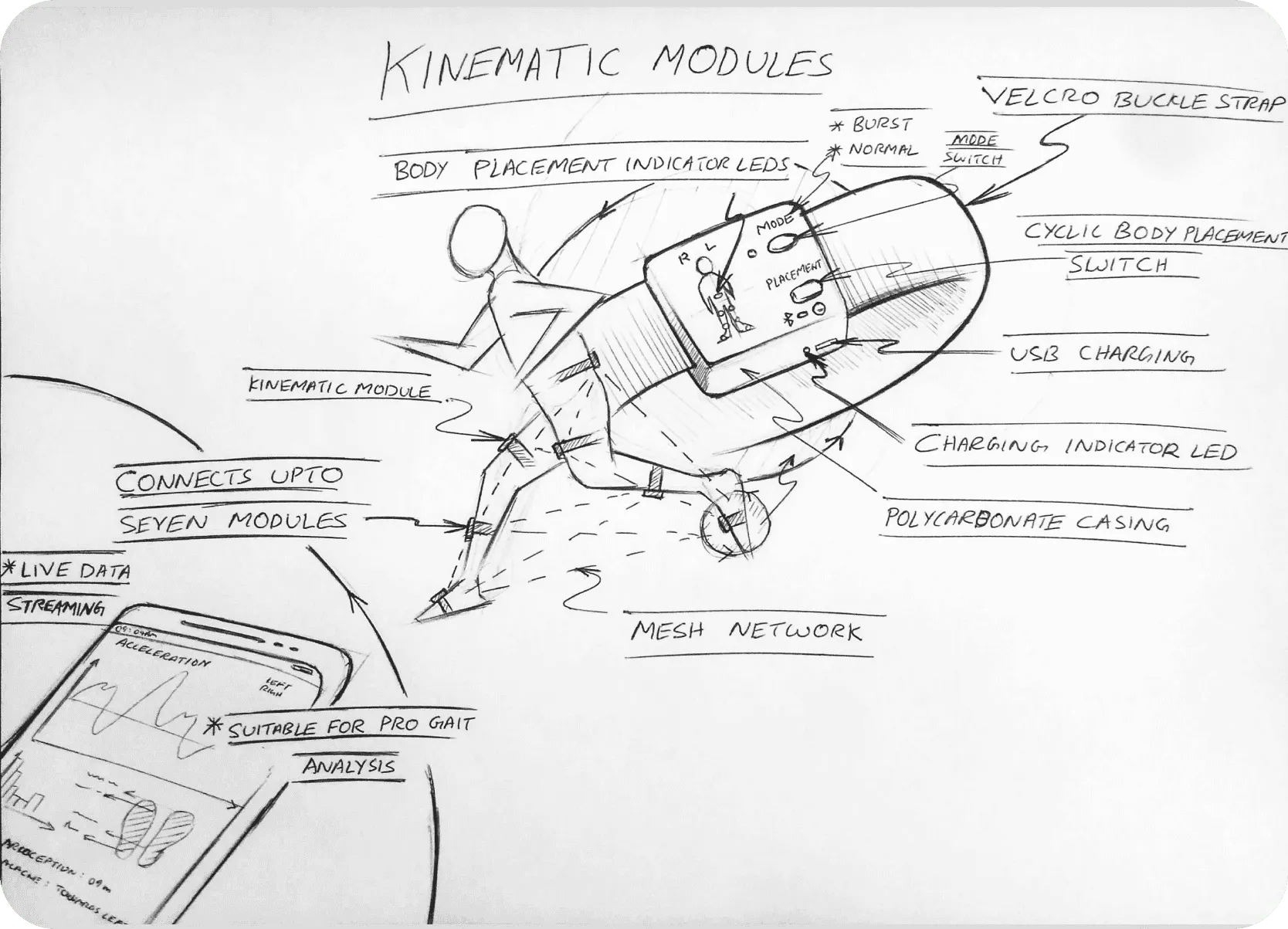
3. Lace Slip-In Sensor Module (Chosen Concept)
A module attaching to shoe laces featuring BLE, GPS tracking, polycarbonate casing, gesture control, SD card storage, haptic feedback, and technique assistance.

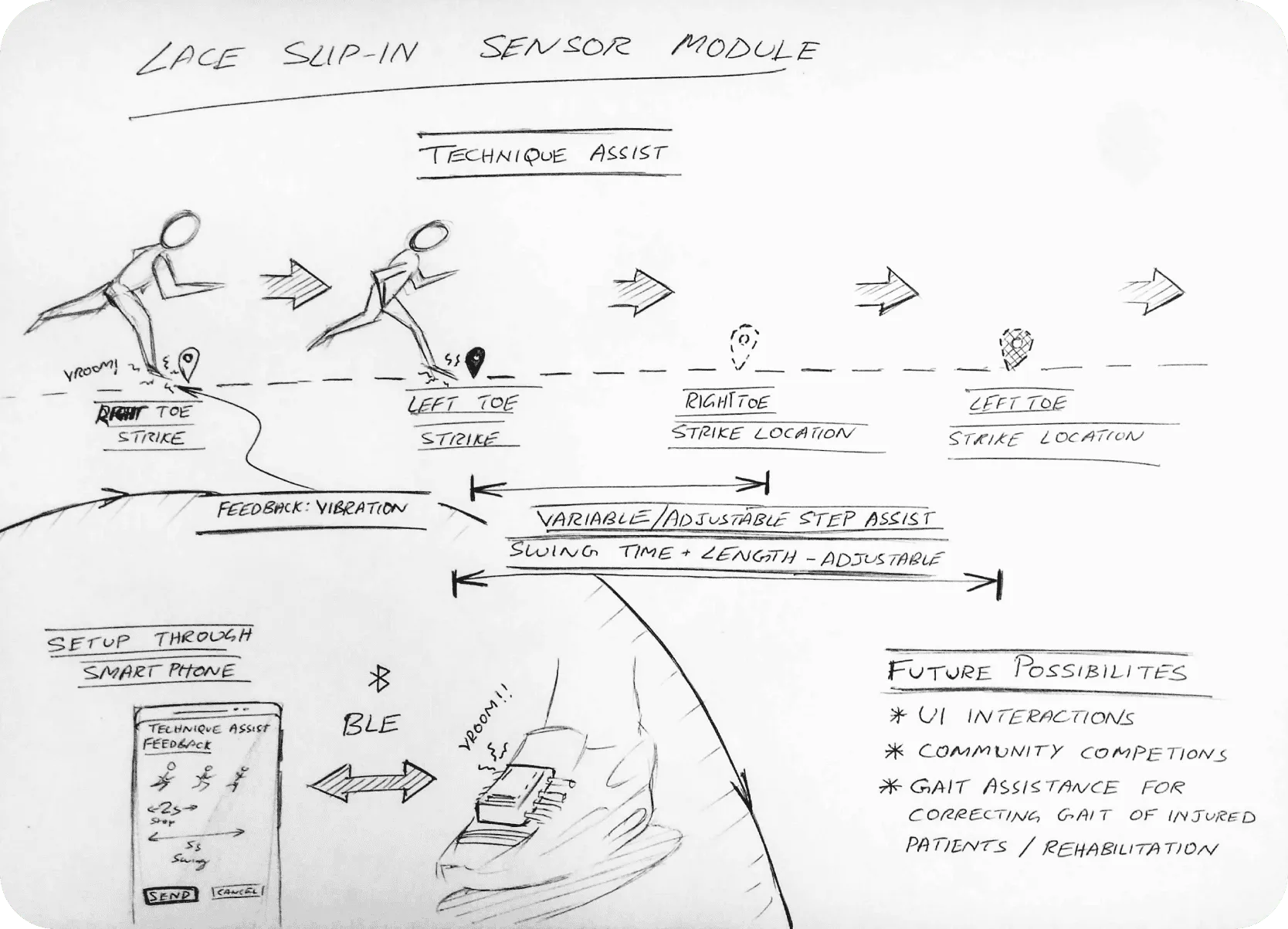
The Lace Slip-In module was selected due to its secure attachment, ability to house necessary components like GPS, dual-module capability for detailed analysis, offline/live data streaming, and specific relevance for running athletes.
Future possibilities included enhanced UI, gait correction features, and community sharing.
Slingshot: Design Narrative
Slingshot: Need and Fartlek Integration
Slingshot addresses the need for improved running technique and performance, particularly within Fartlek training. Developed in 1937 by Swedish coach Gösta Holmér, Fartlek ("speed play") is a continuous training method involving varied periods of fast and slow running.
While Fartlek offers numerous benefits, including adaptability, endurance and speed enhancement, and improved race tactics, it can be challenging to track detailed metrics and prevent injuries. Slingshot solves this by providing crucial gait parameters like contact time, foot strike events, and pre-fatigue levels.
Moreover, Slingshot uses vibration haptics to guide foot placement and rhythm, creating a "gamified" experience that motivates athletes to maintain pace and improve performance during Fartlek workouts. This demonstrates wearable technology's potential to target and improve nuanced sports technique.
Product Story




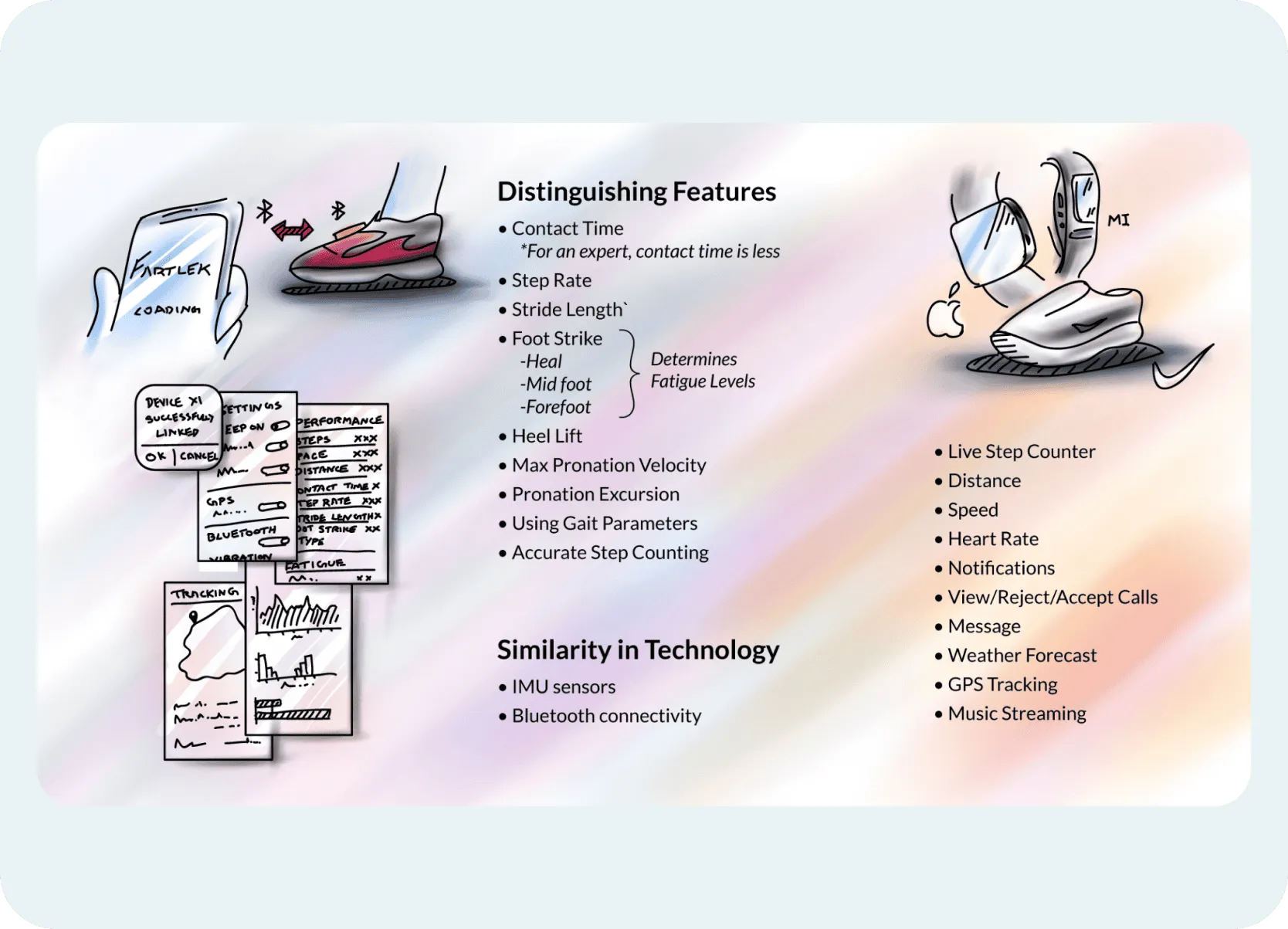
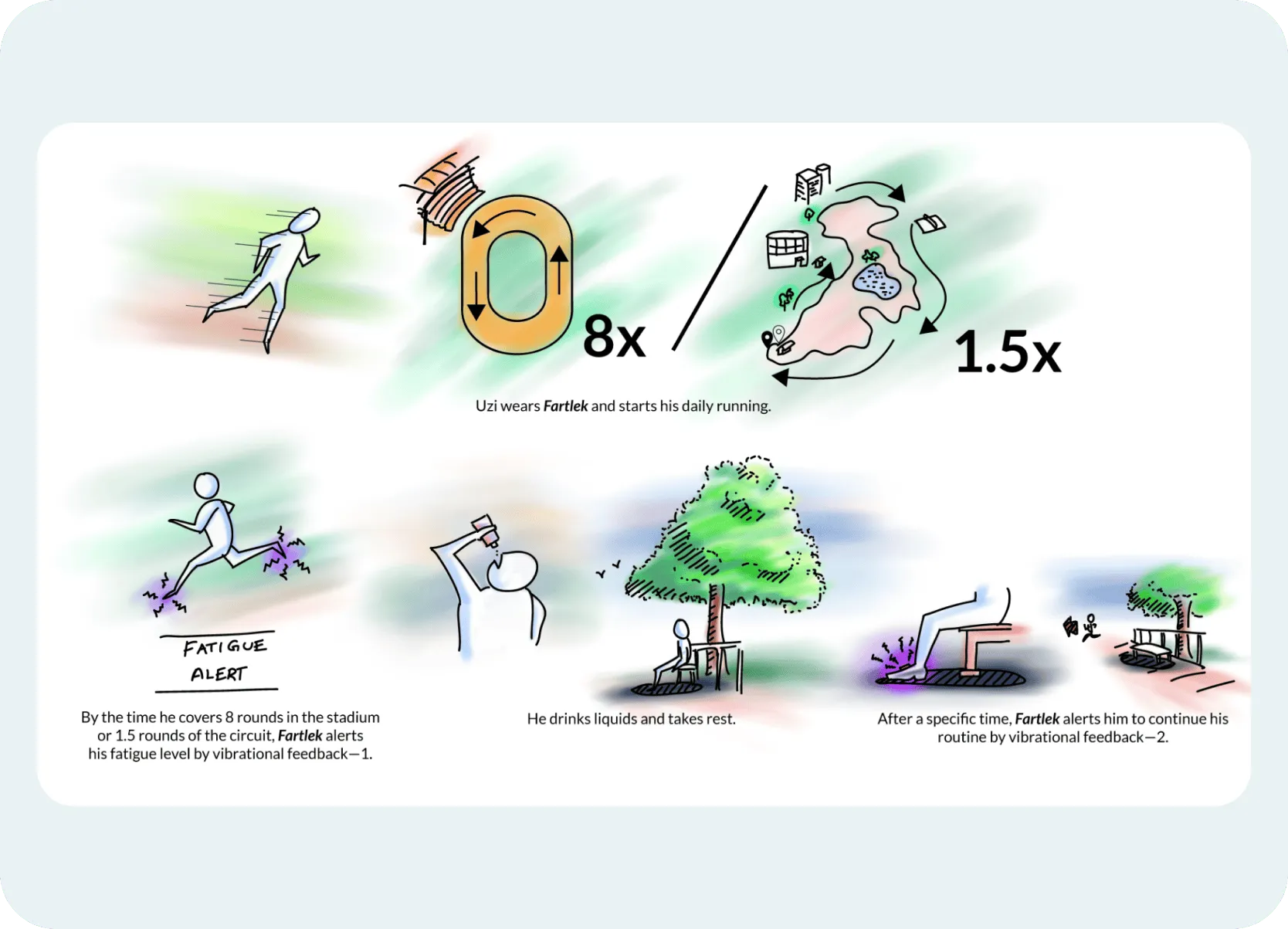
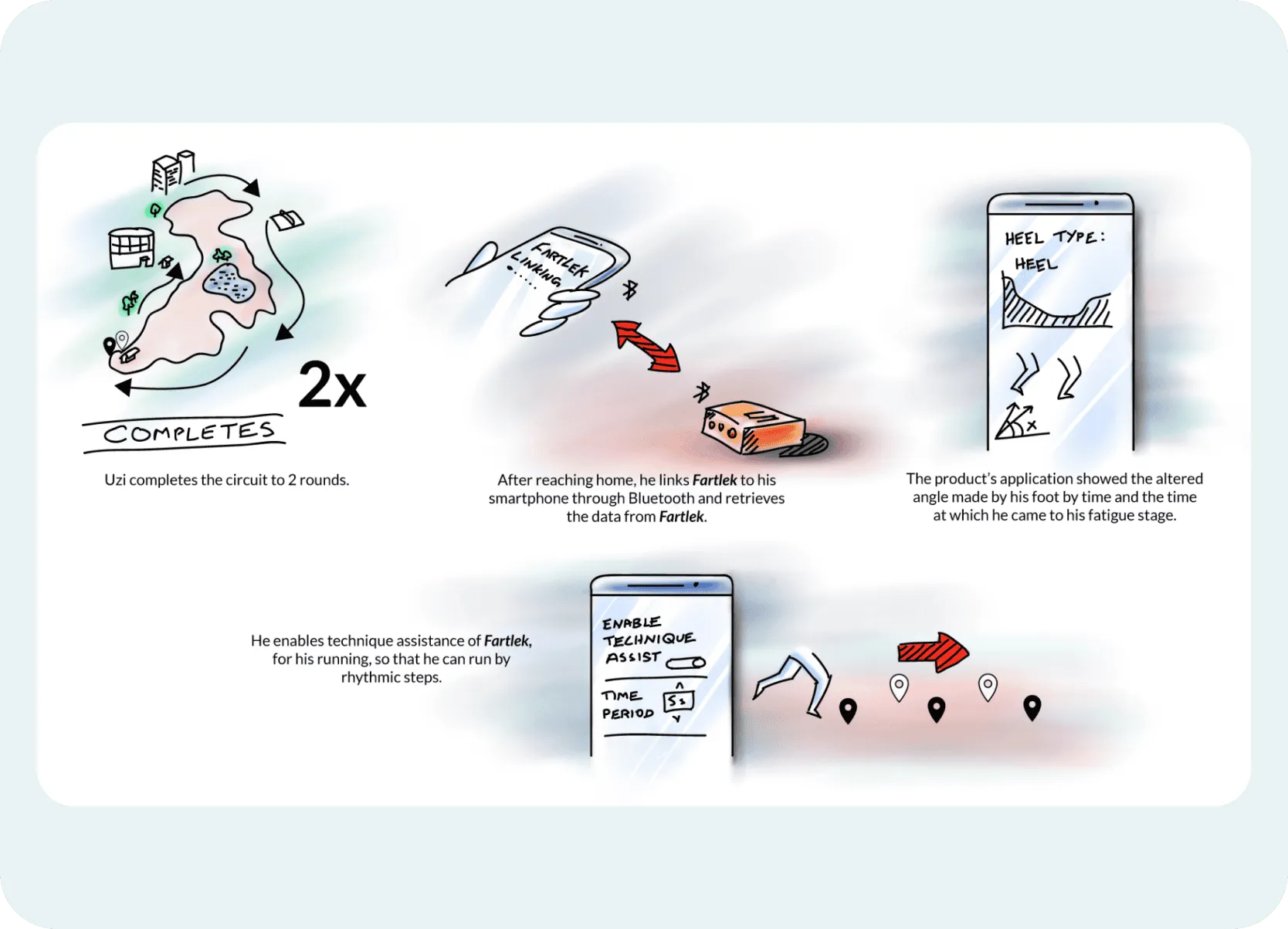

Branding
The Slingshot logo visually communicates the product's purpose: enhancing running performance. Its dynamic design, inspired by a runner's sprint pose, symbolizes forward momentum and improvement. The vibrant pink color and subtle gradient are attention-grabbing and energetic. The logo's shape—sharp angles and fluid curves—represents speed and agility, while the arrow-like form emphasizes forward motion. Designed for versatility, its clean simplicity ensures it's memorable and effective across media. The Slingshot logo embodies the brand's focus on performance and innovation.

Design Refinement & Prototyping
The chosen concept underwent further refinement:
Placement & Attachment
Explored various placements (through lace, under lace, ankle, over eyelets) and locking mechanisms (single/double rod through laces, lacing through product, clipping over eyelets). Settled on a lace slip-in design for stability. Renderings visualized these options.
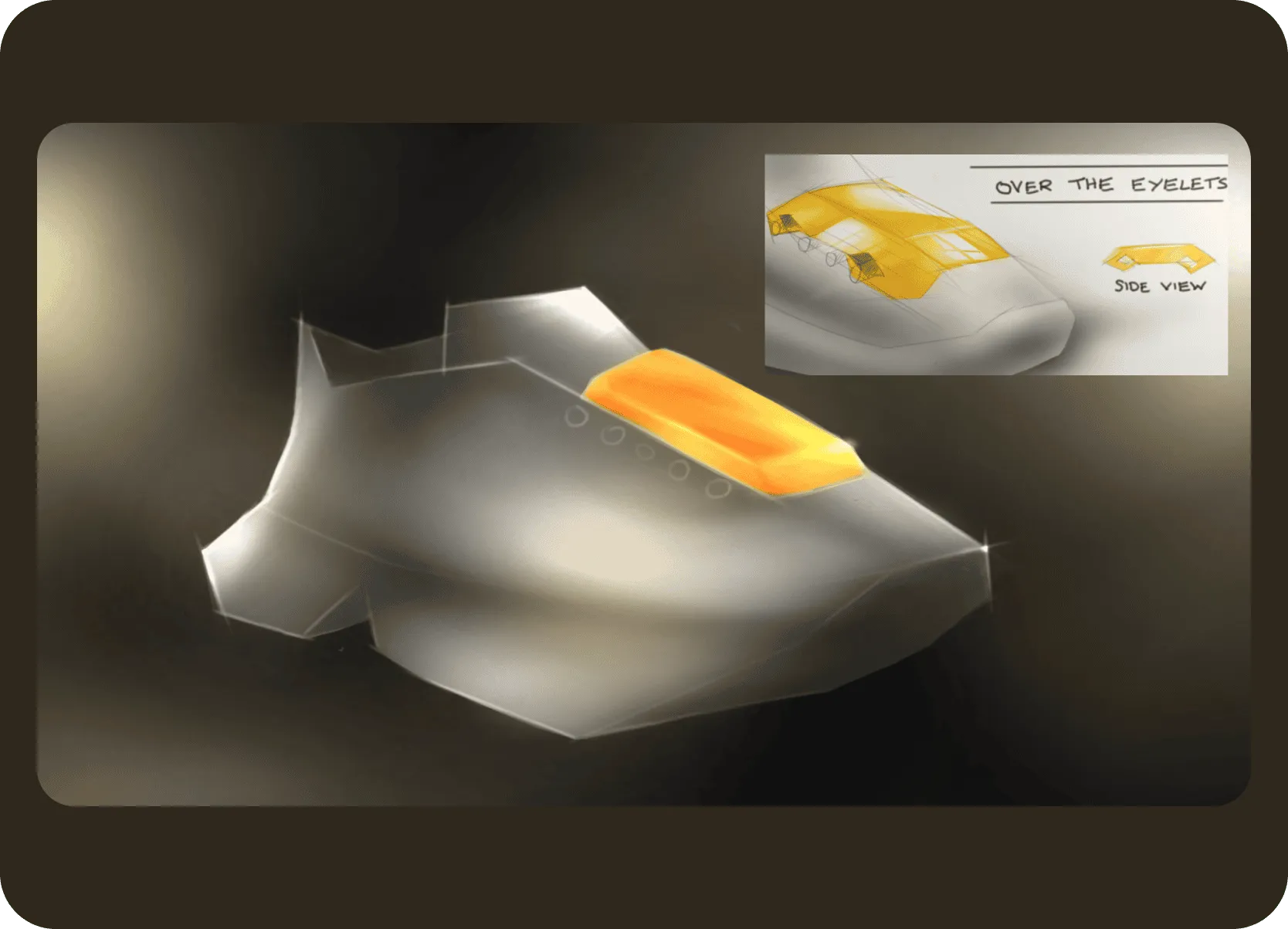
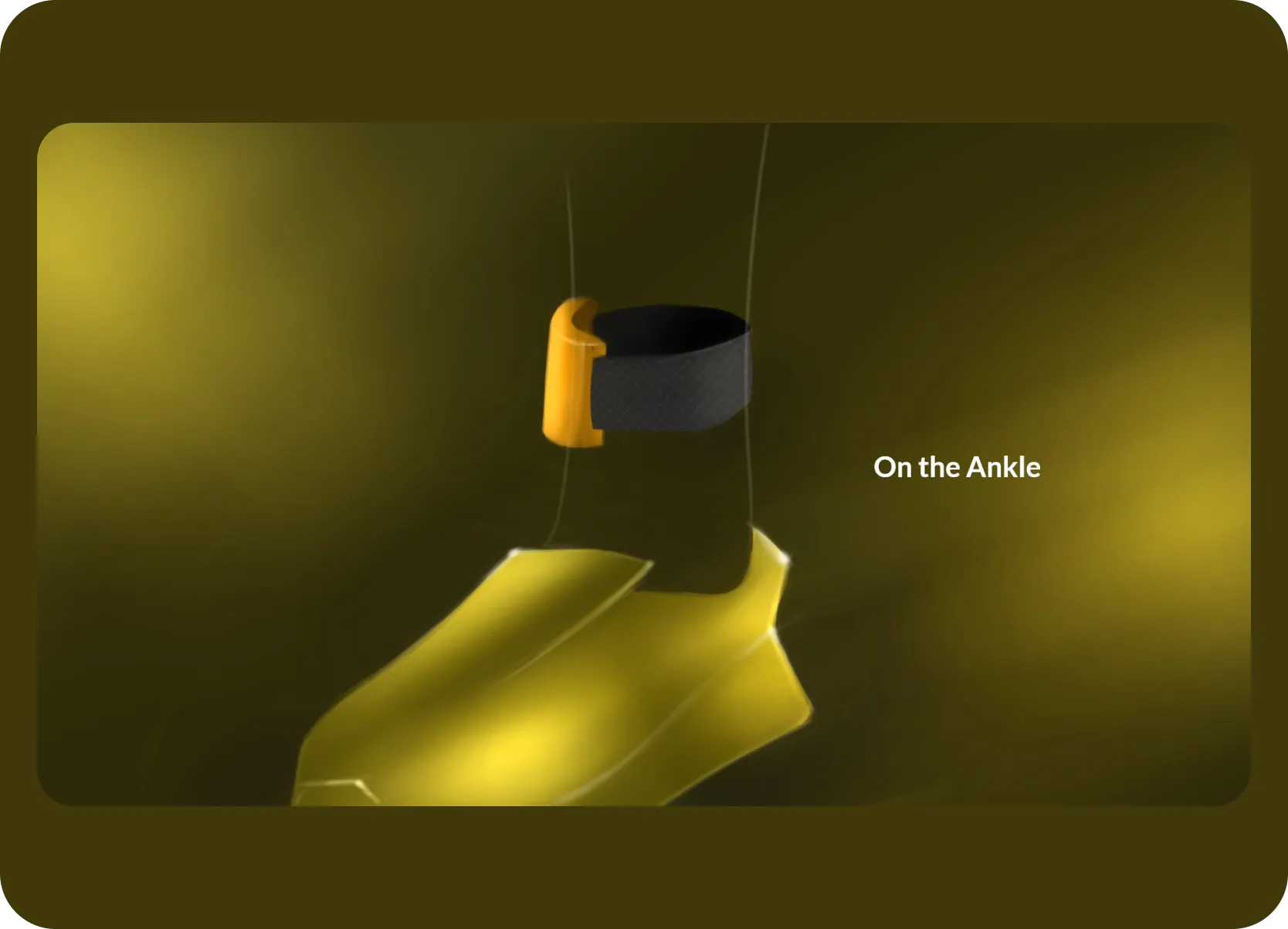
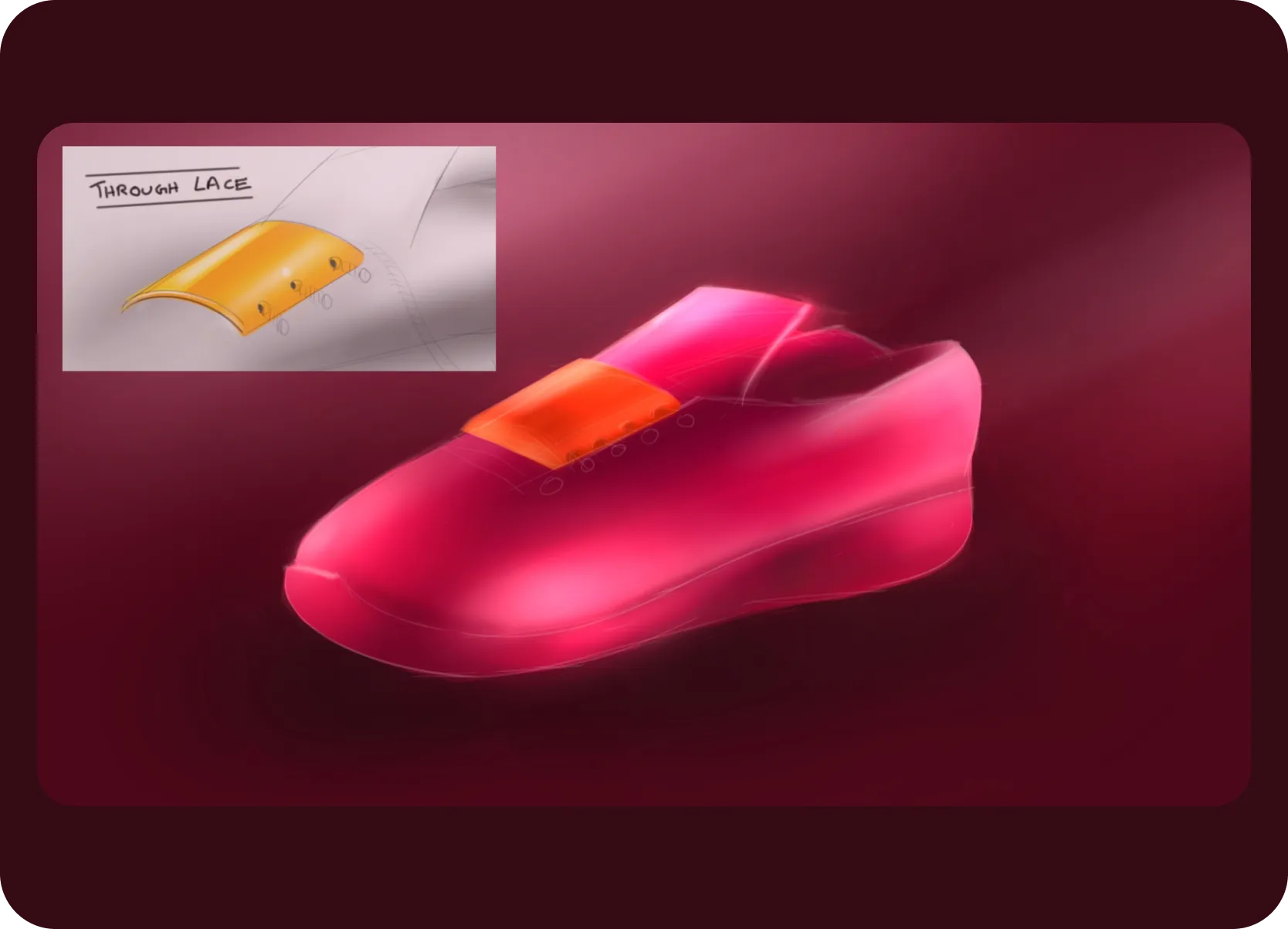
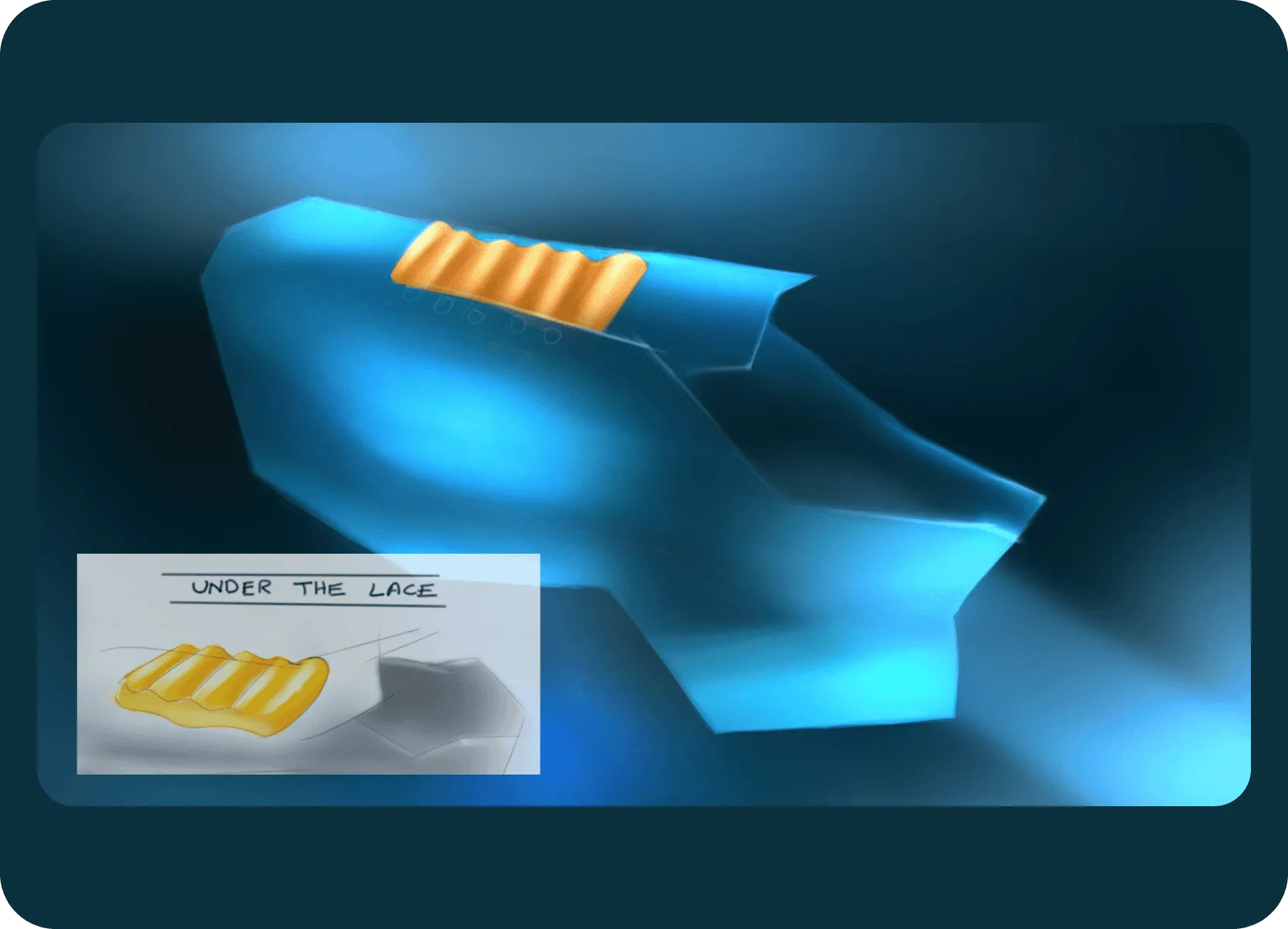
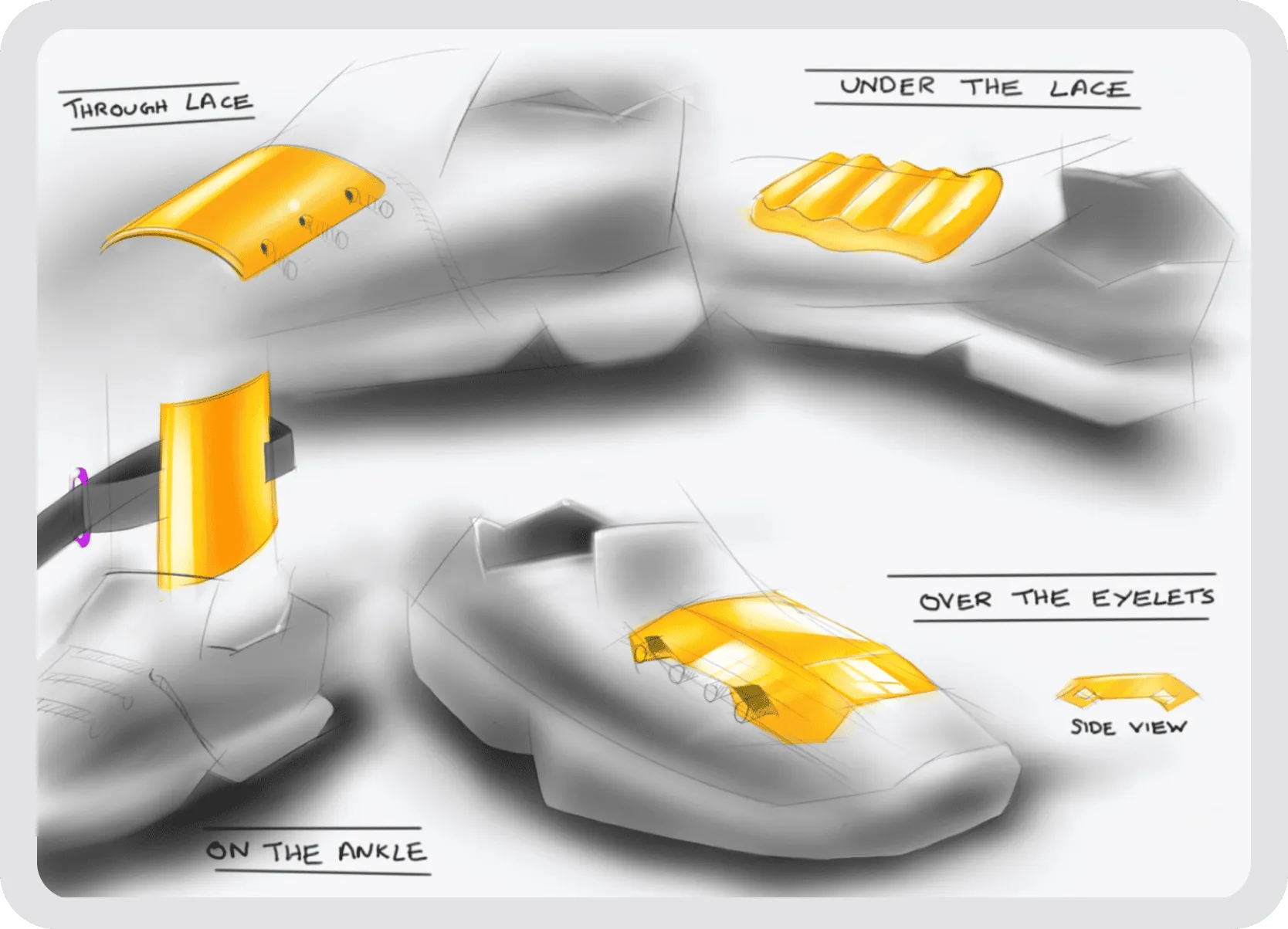
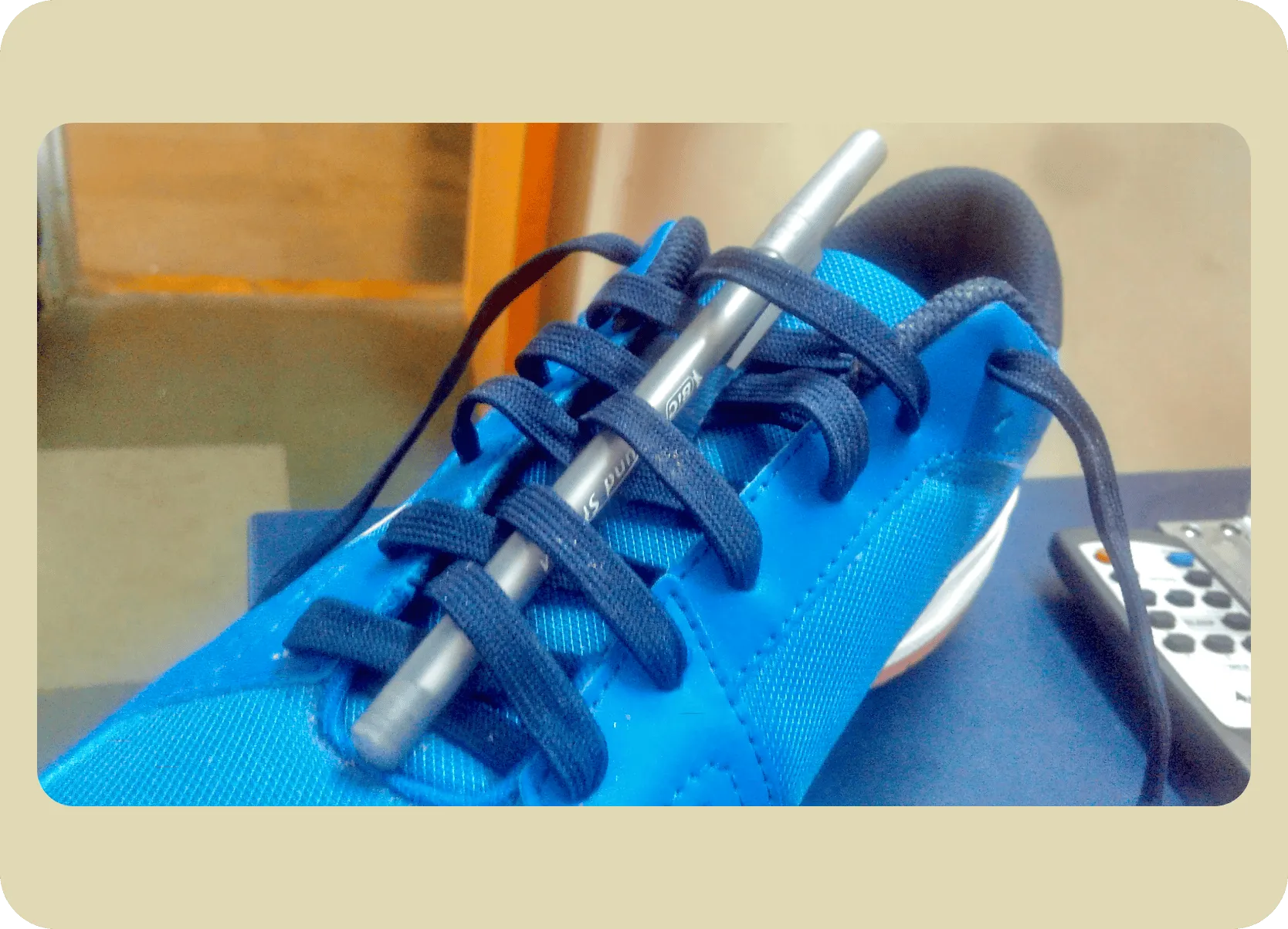
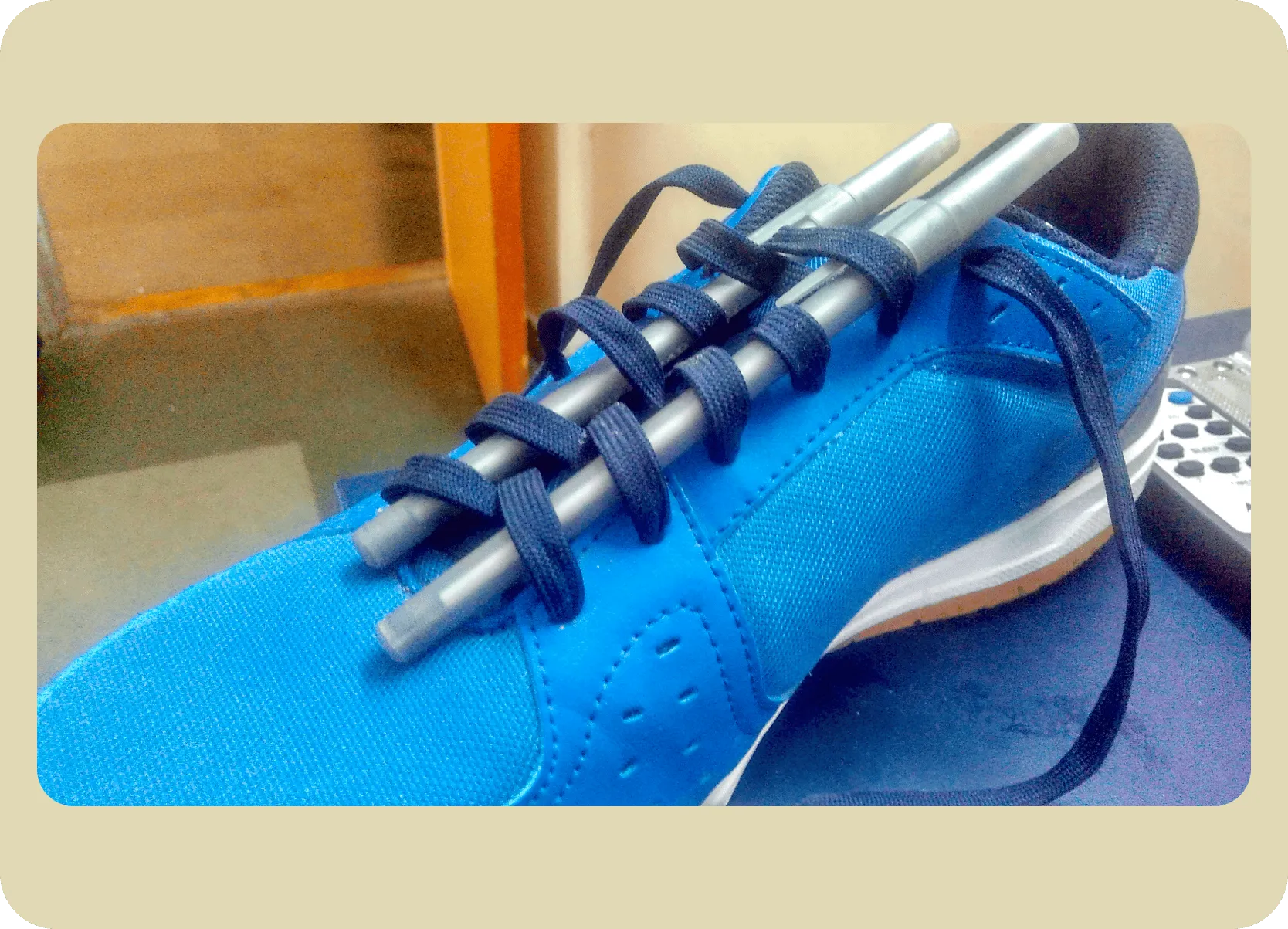
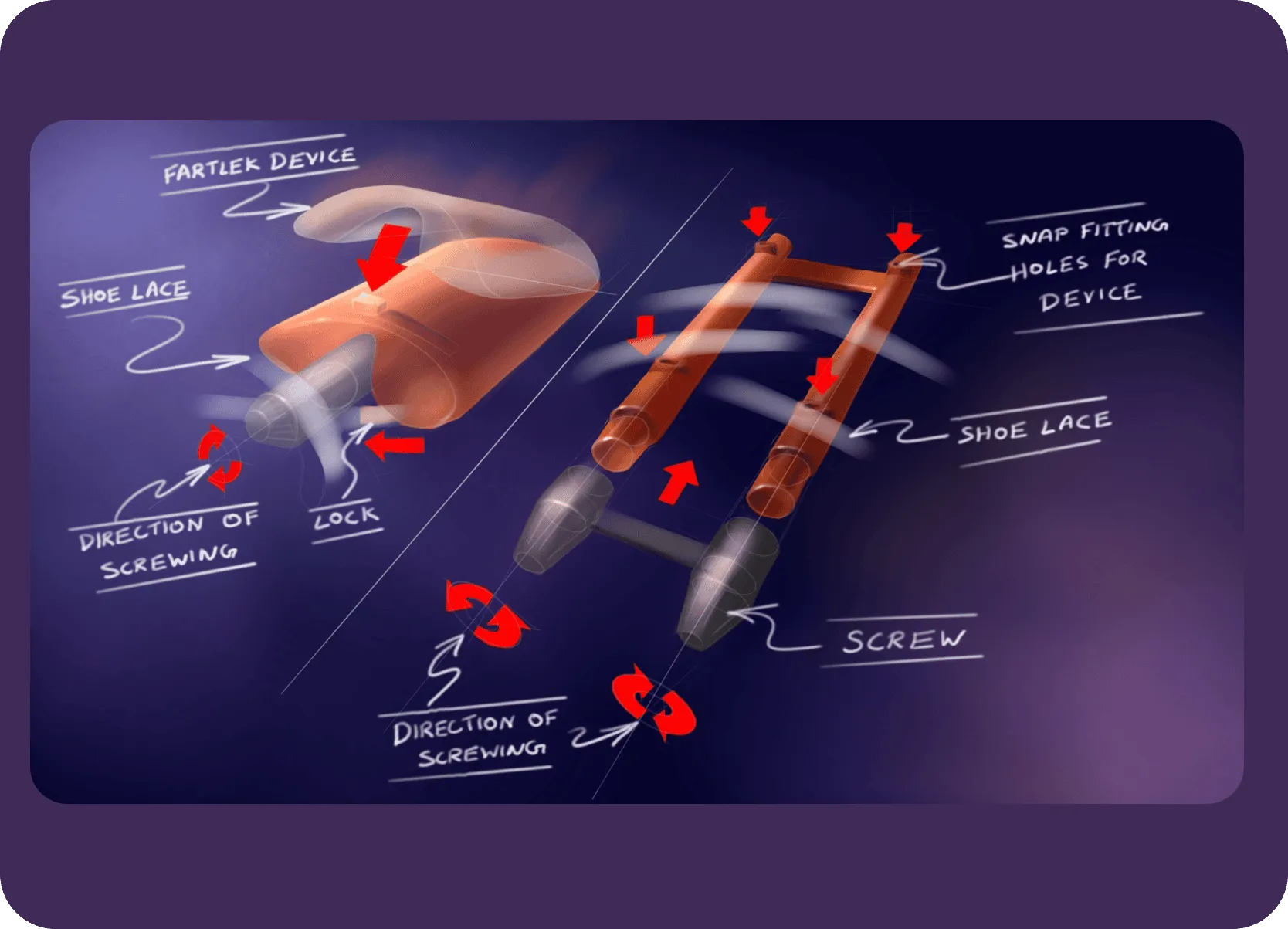
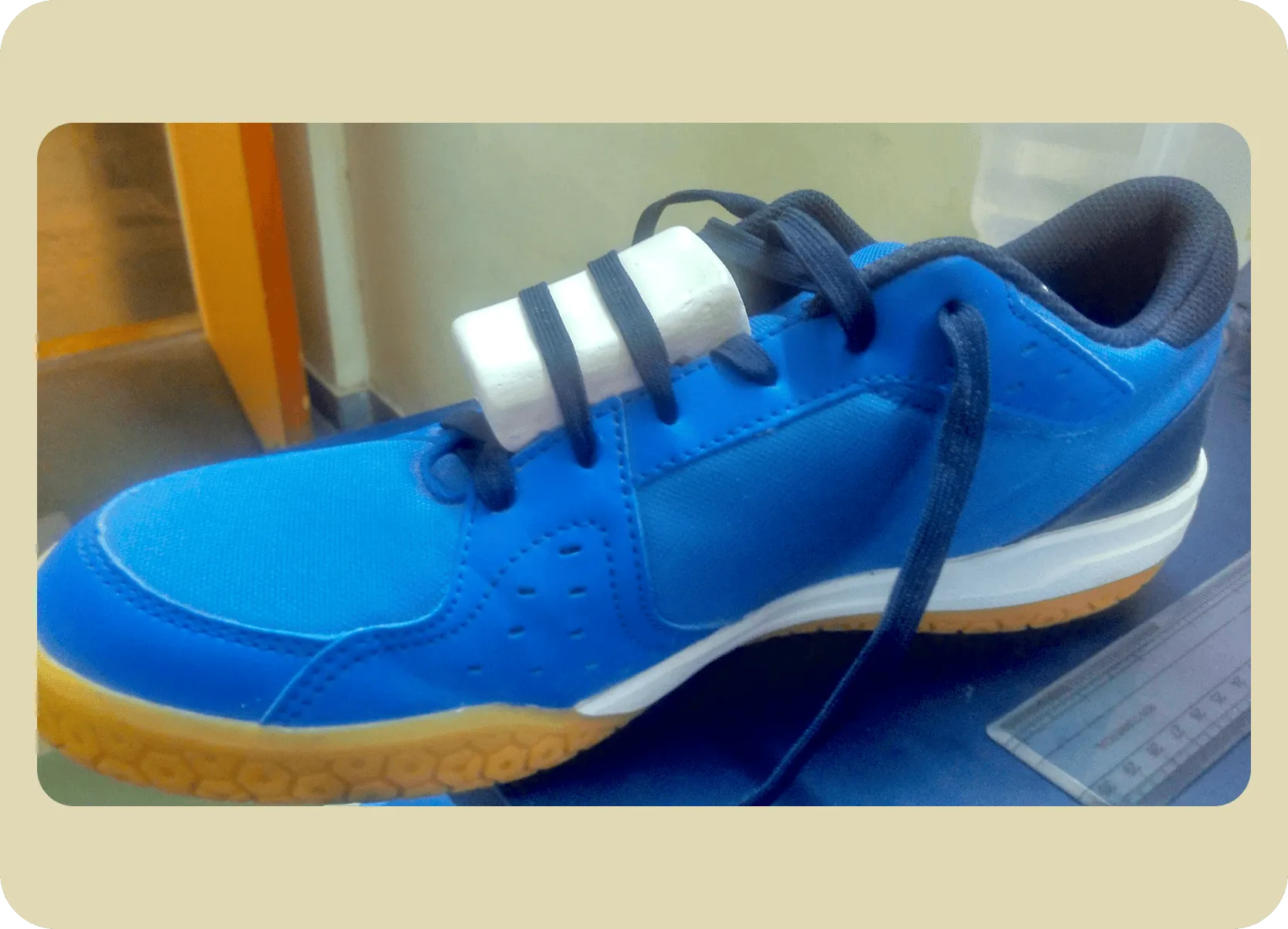
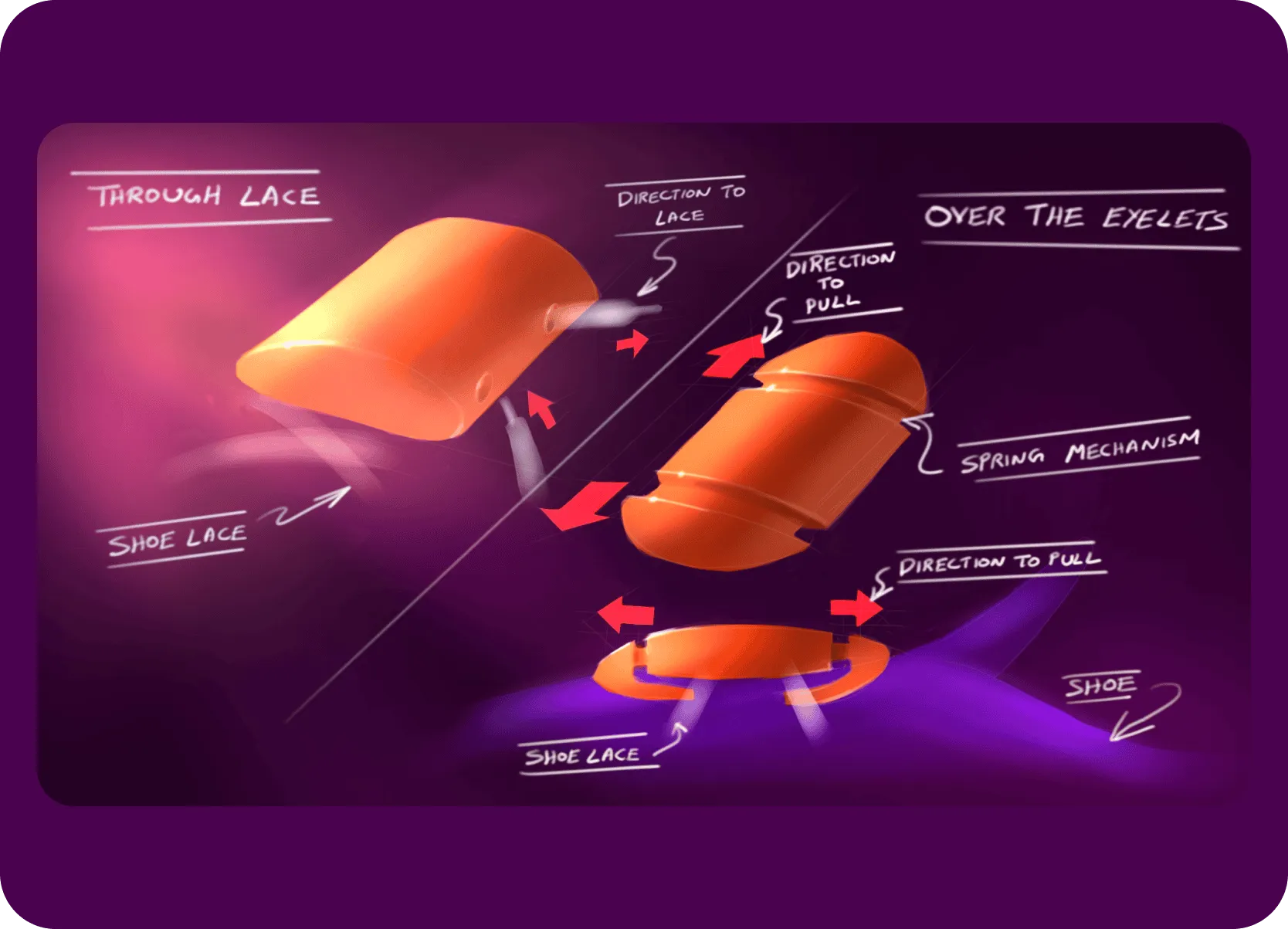
Form Exploration
Sketched multiple physical forms for the module, considering attachment method and aesthetics. Defined overall size relative to a shoe.
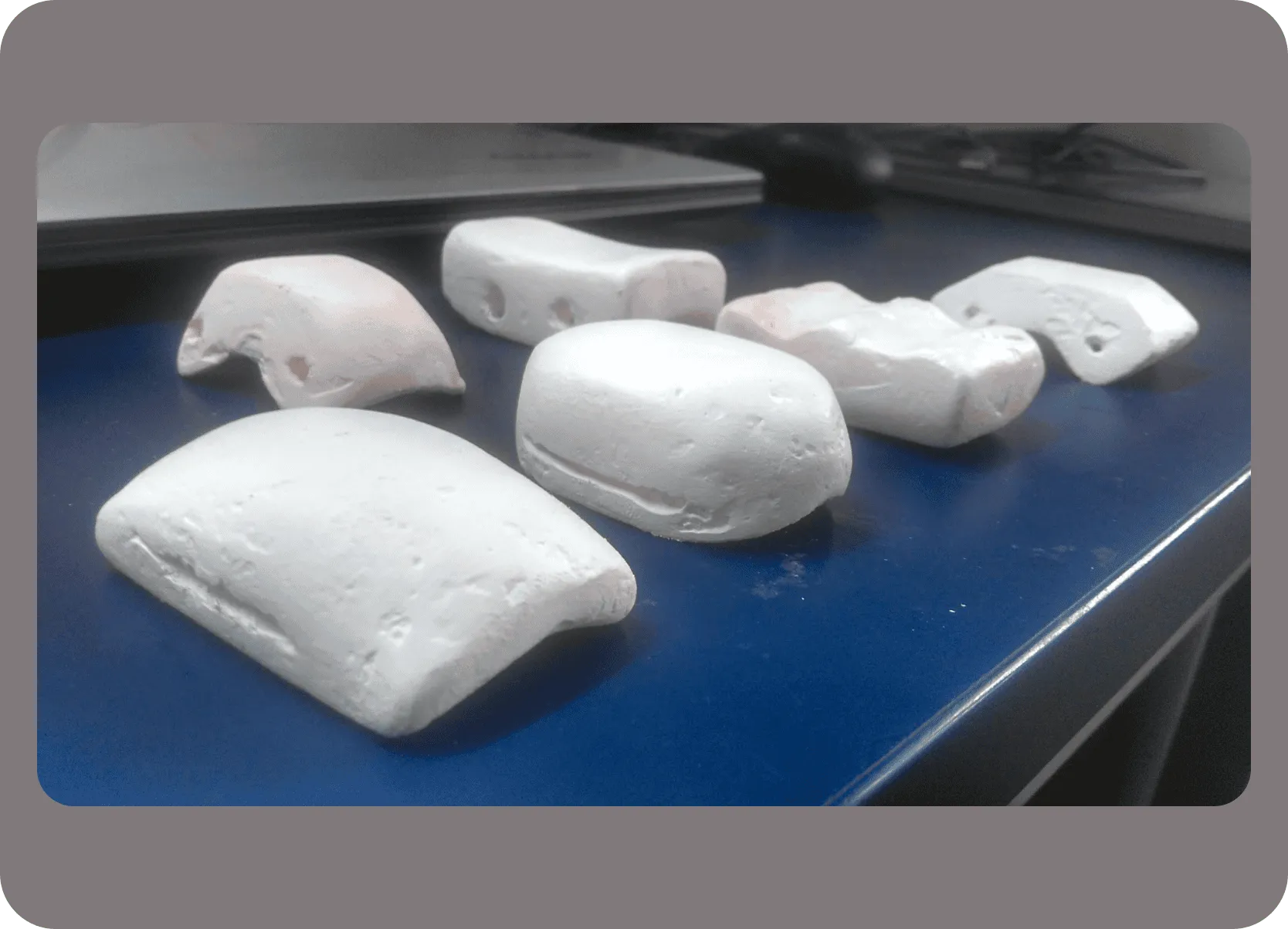

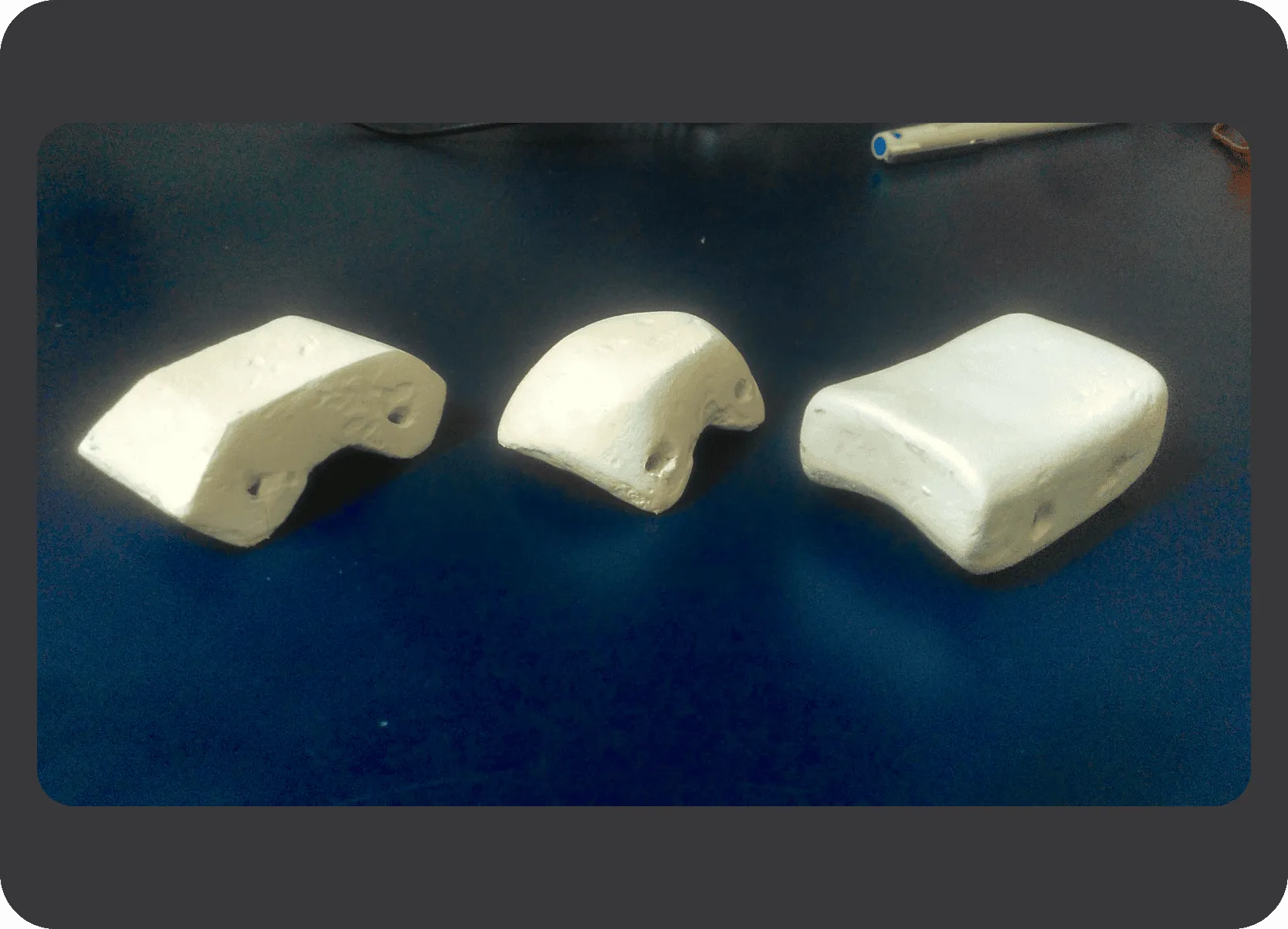
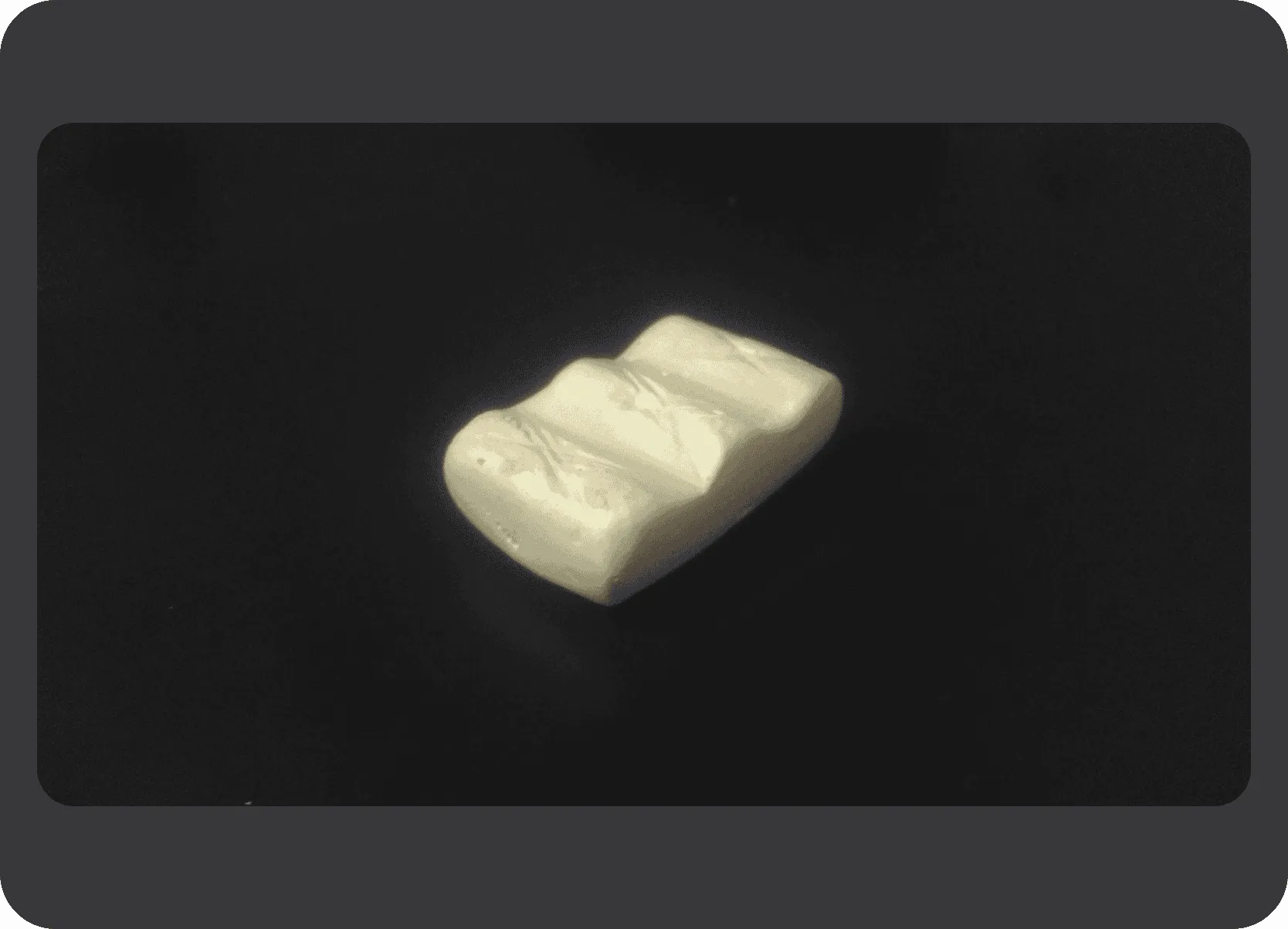
Component Integration
Detailed the proposed components (LDPA cover, GPS, BLE, Micro SD, Microcontroller, Switches, PCB) within the compact form.
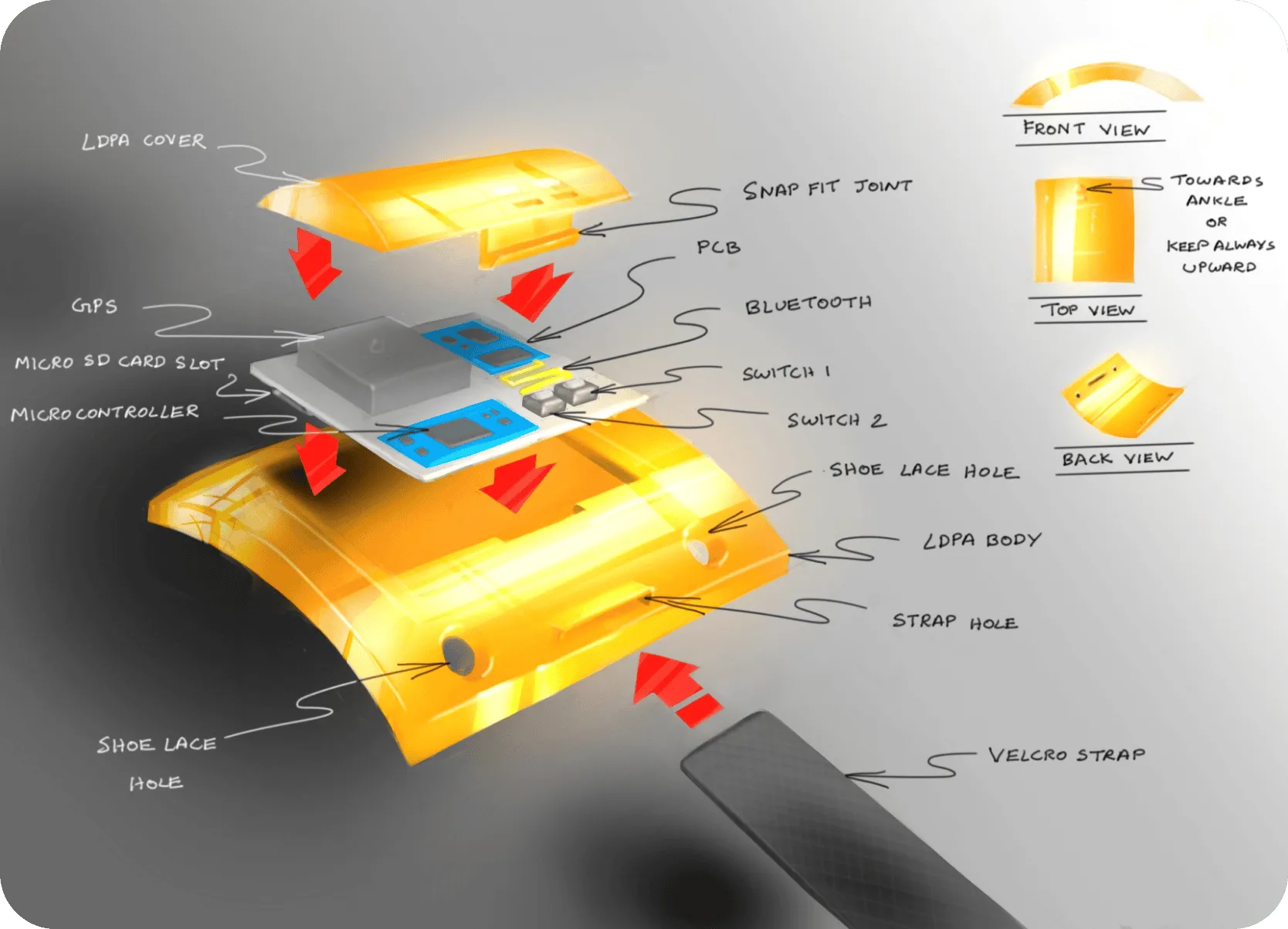
App Wireframes
Developed high-fidelity wireframes for the companion mobile application. These wireframes also guided the development of the website focused on data visualization and displaying basic running metrics.


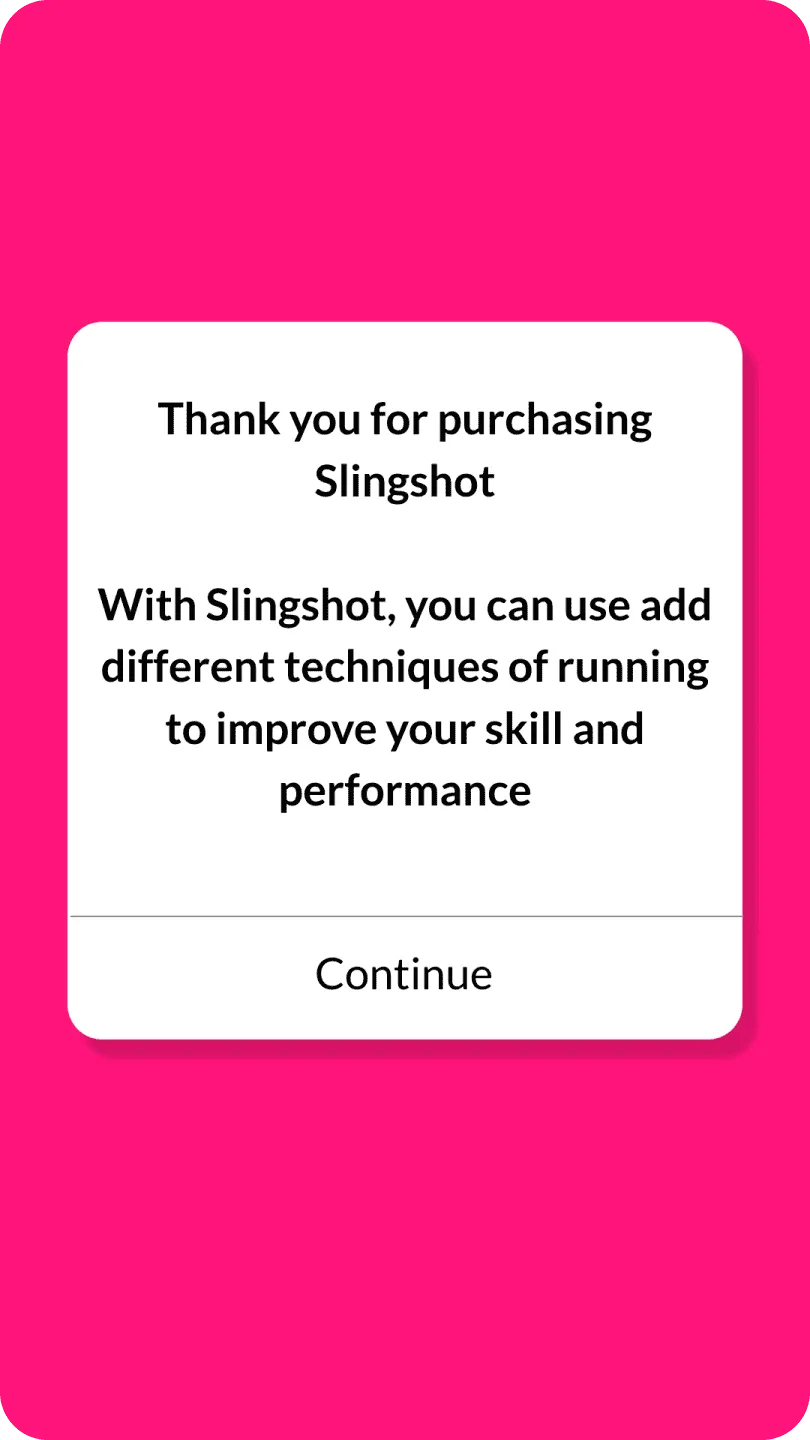
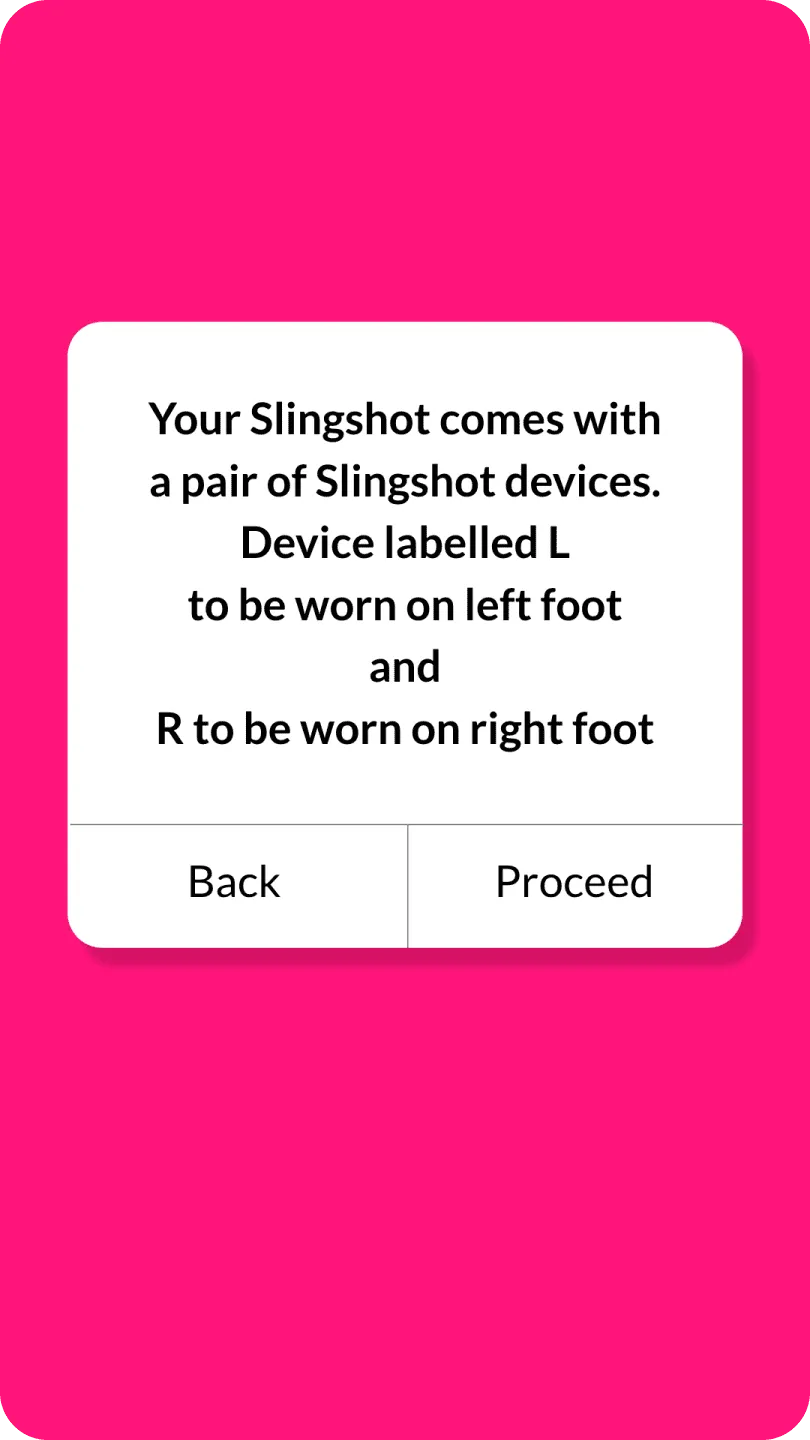
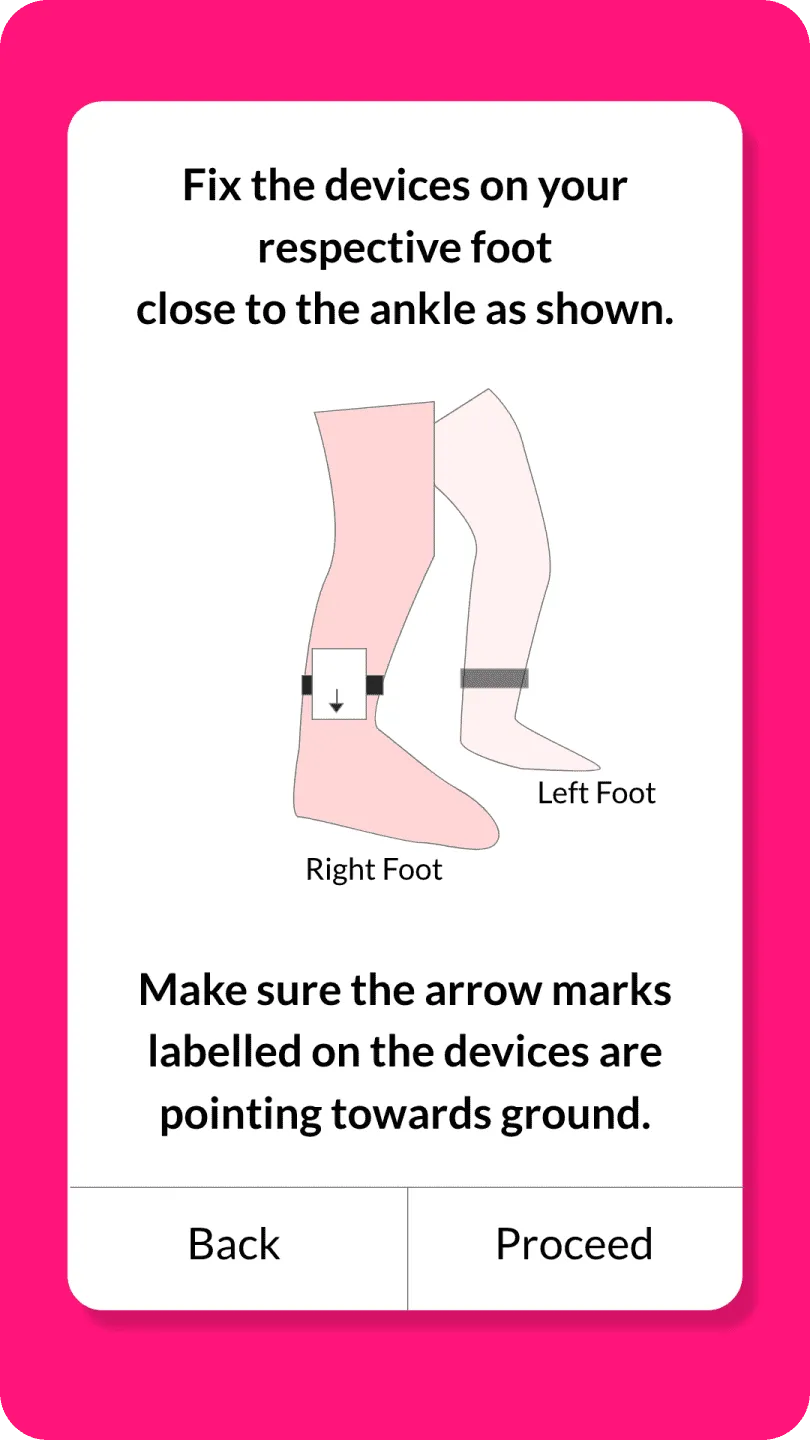
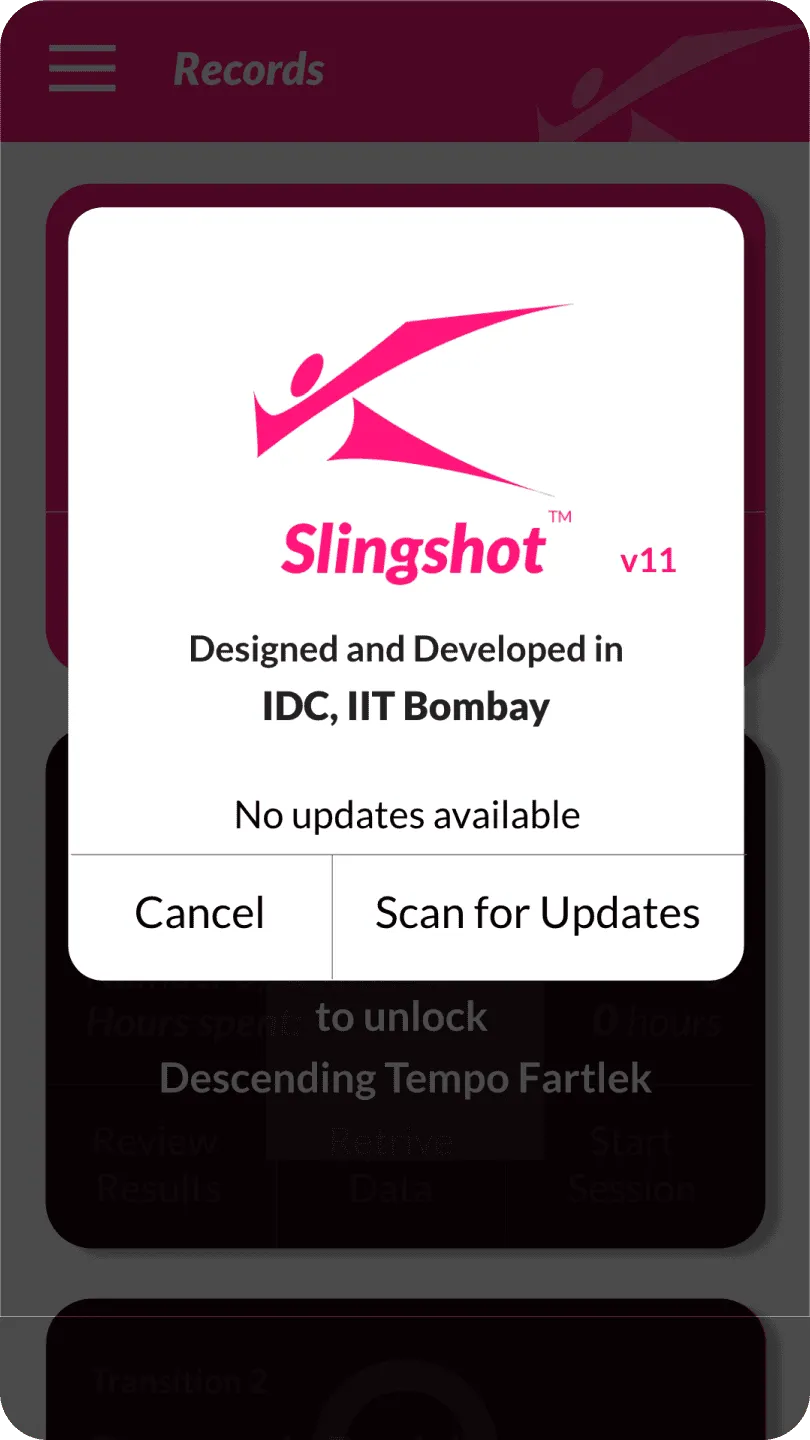
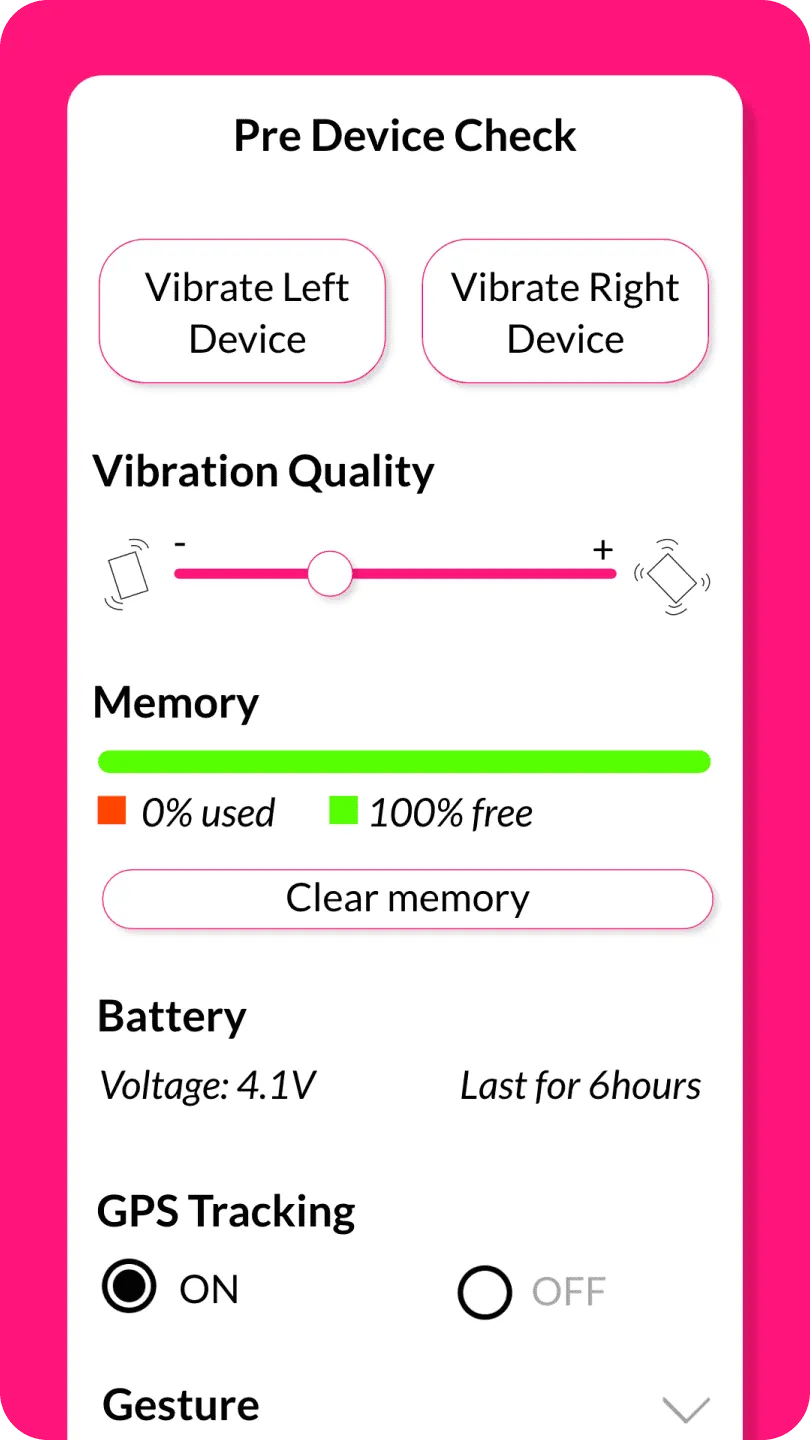

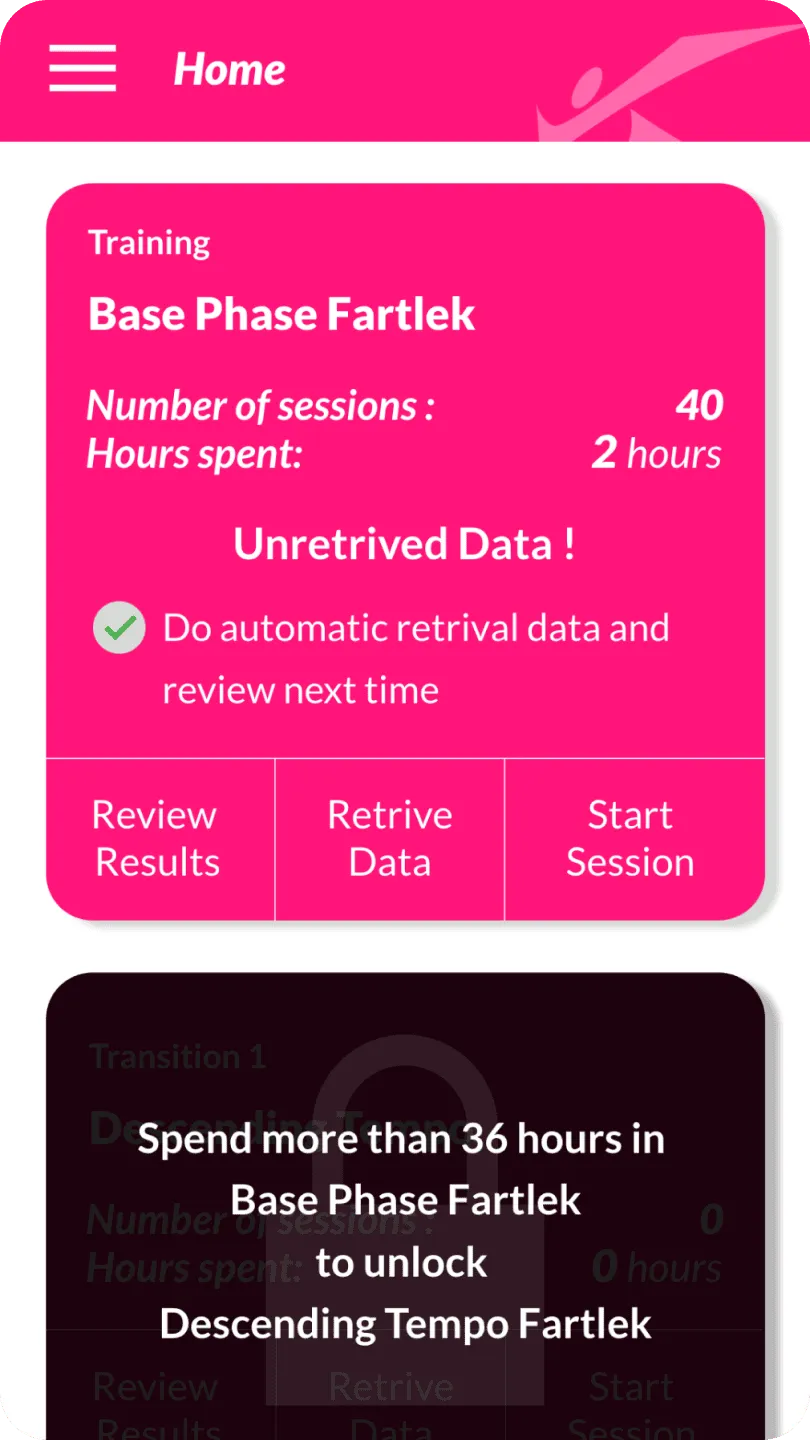
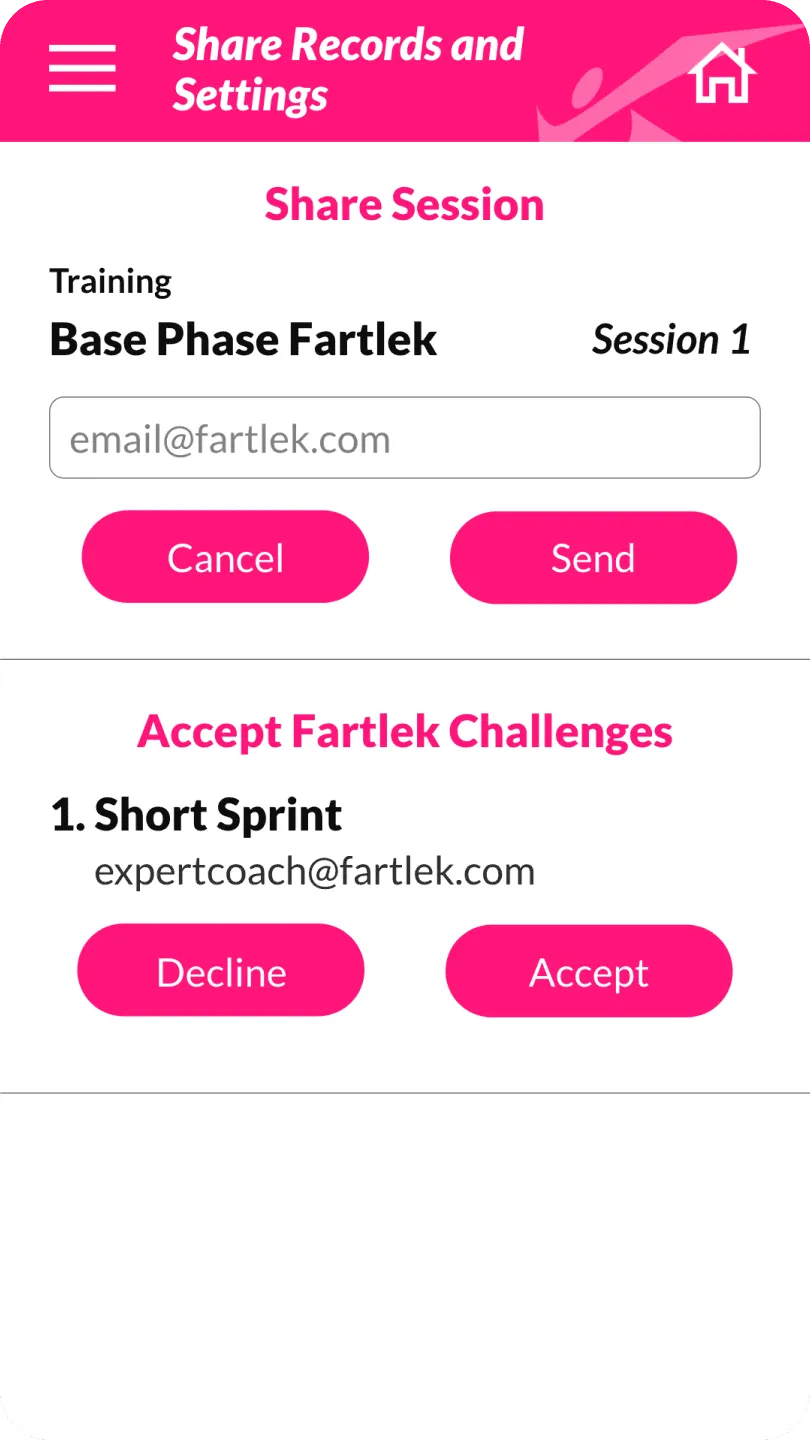
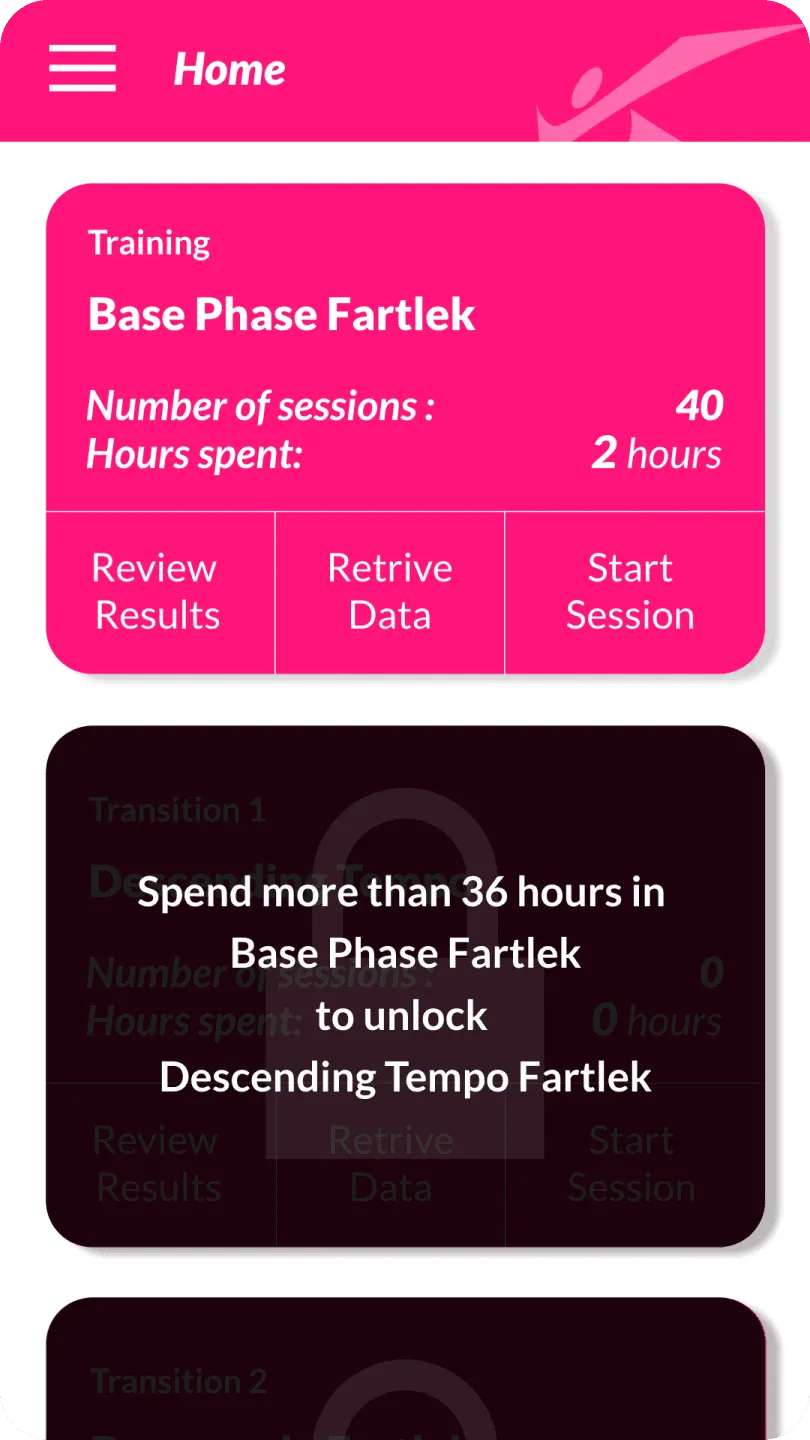
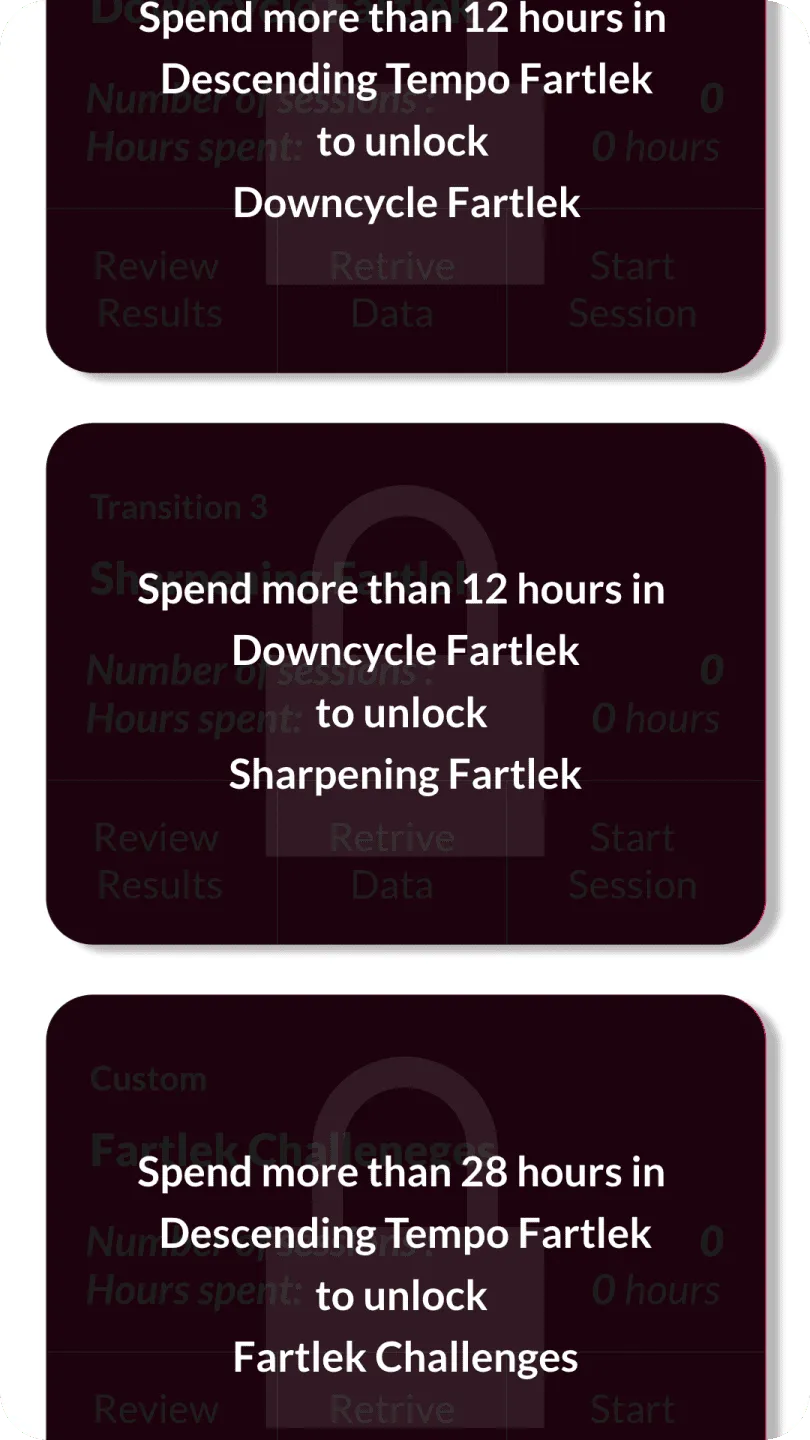
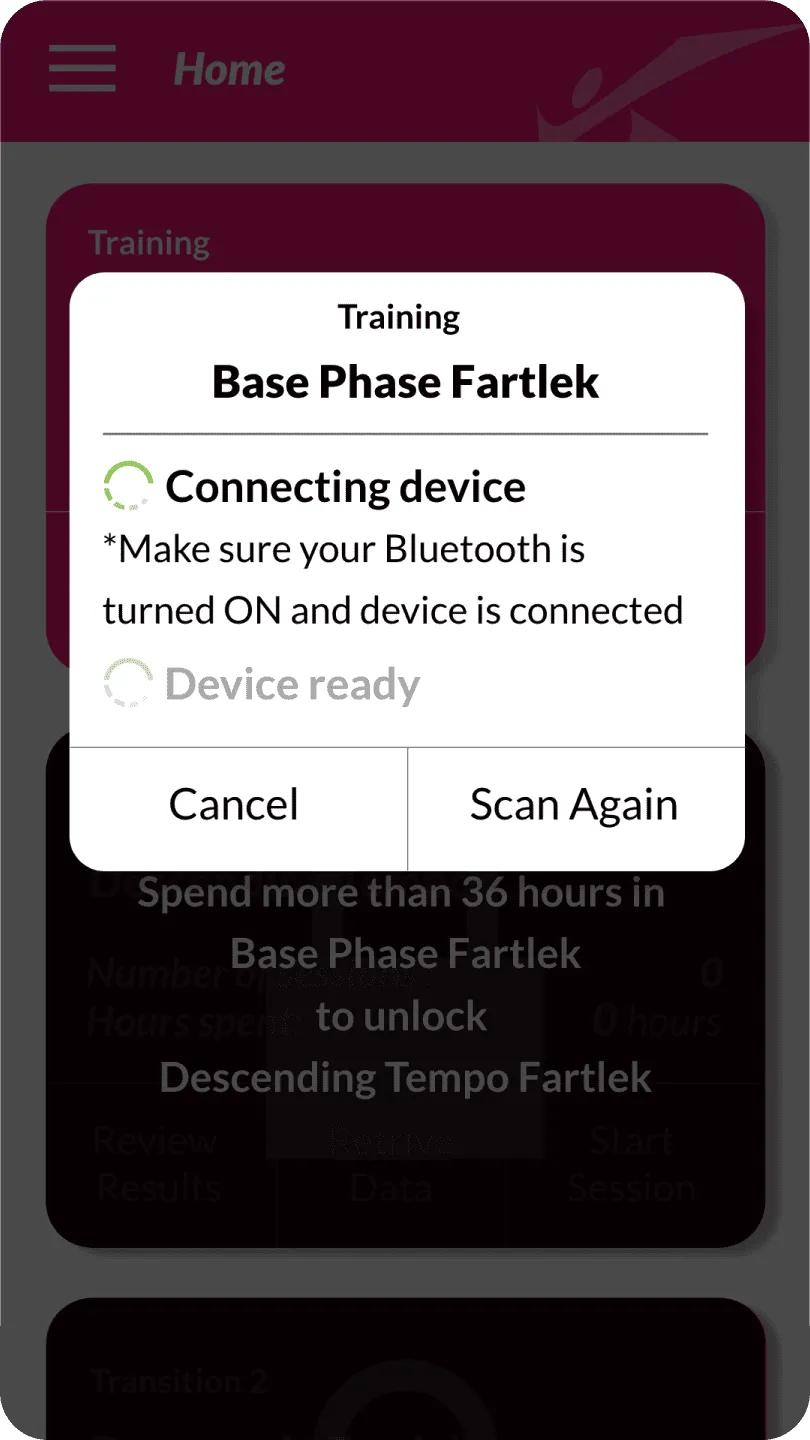
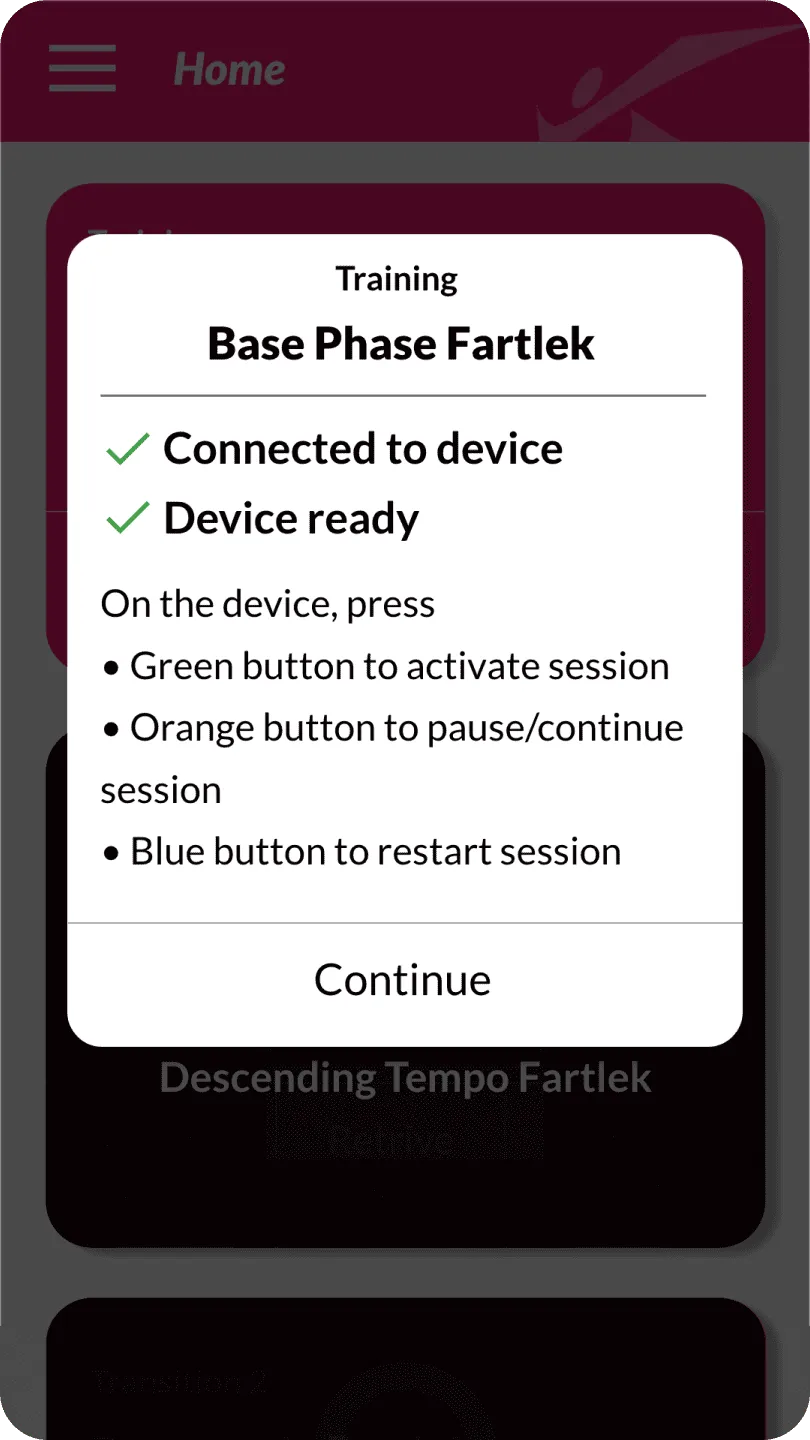
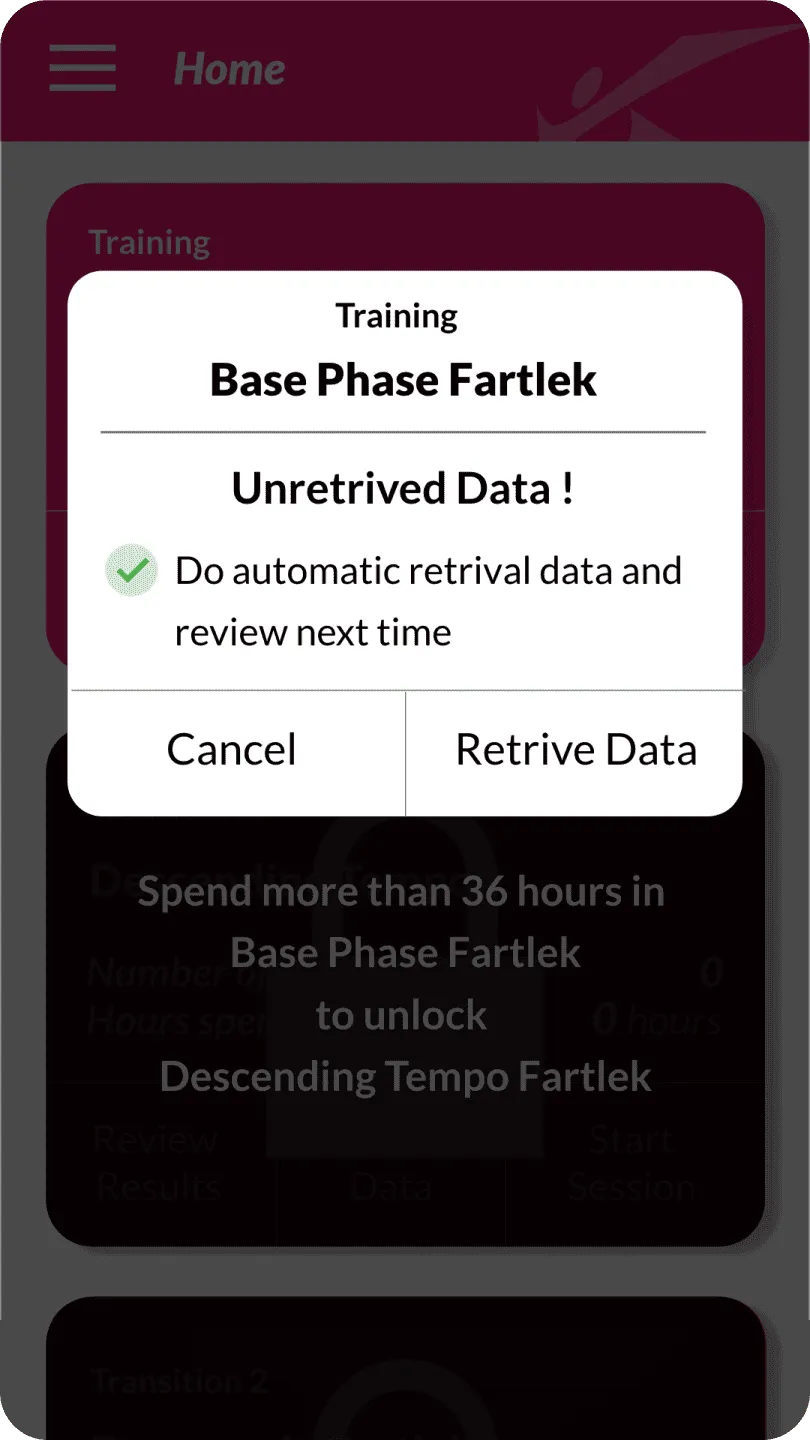
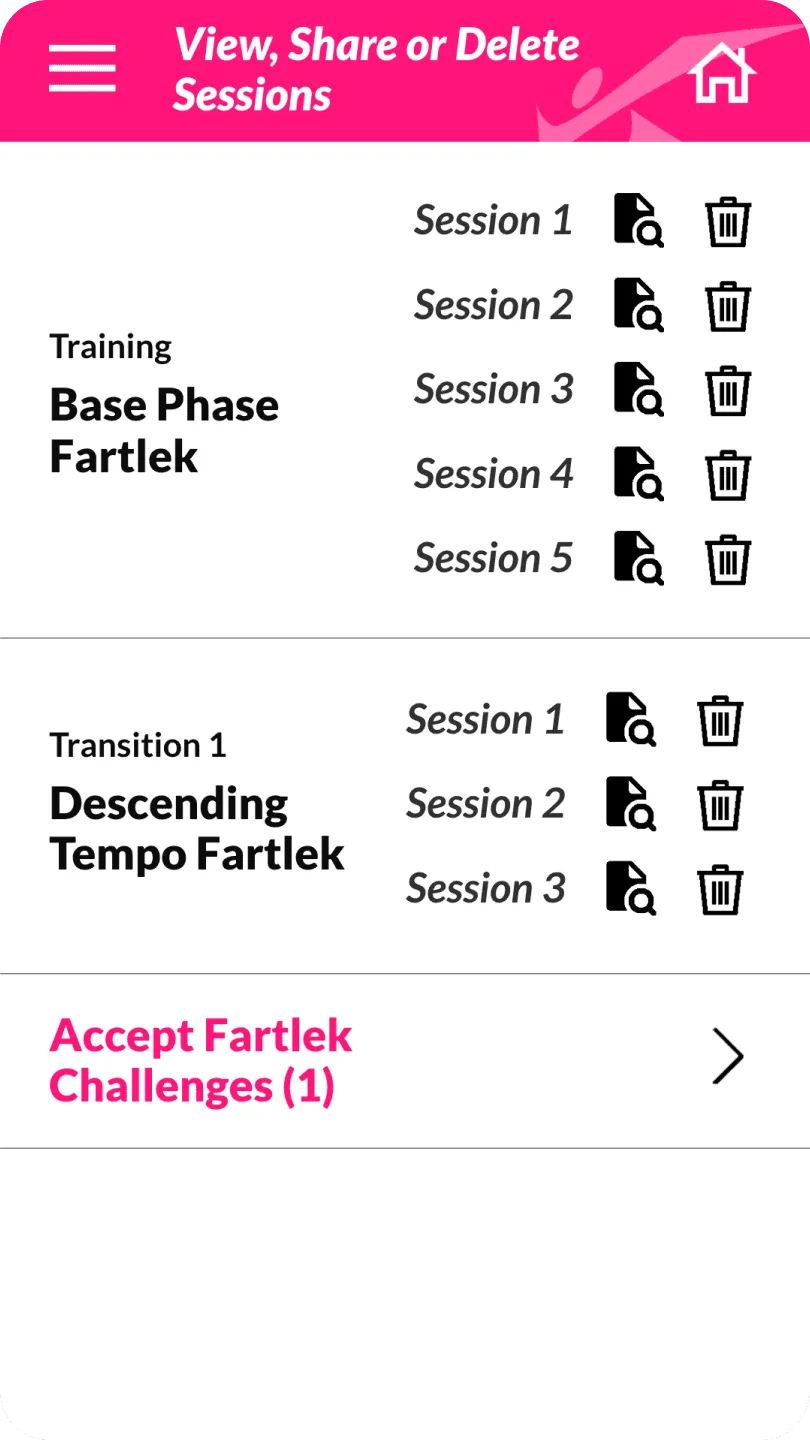
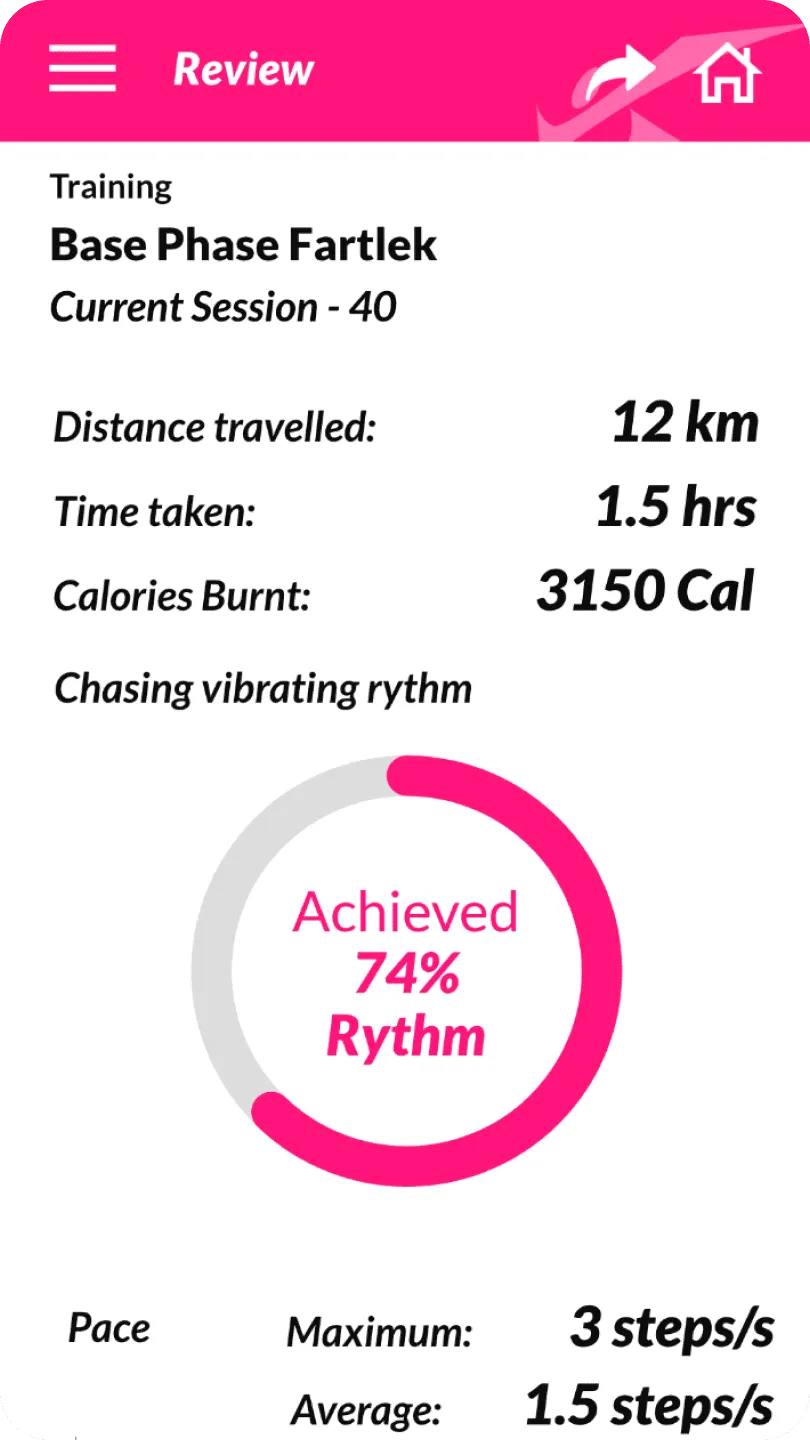
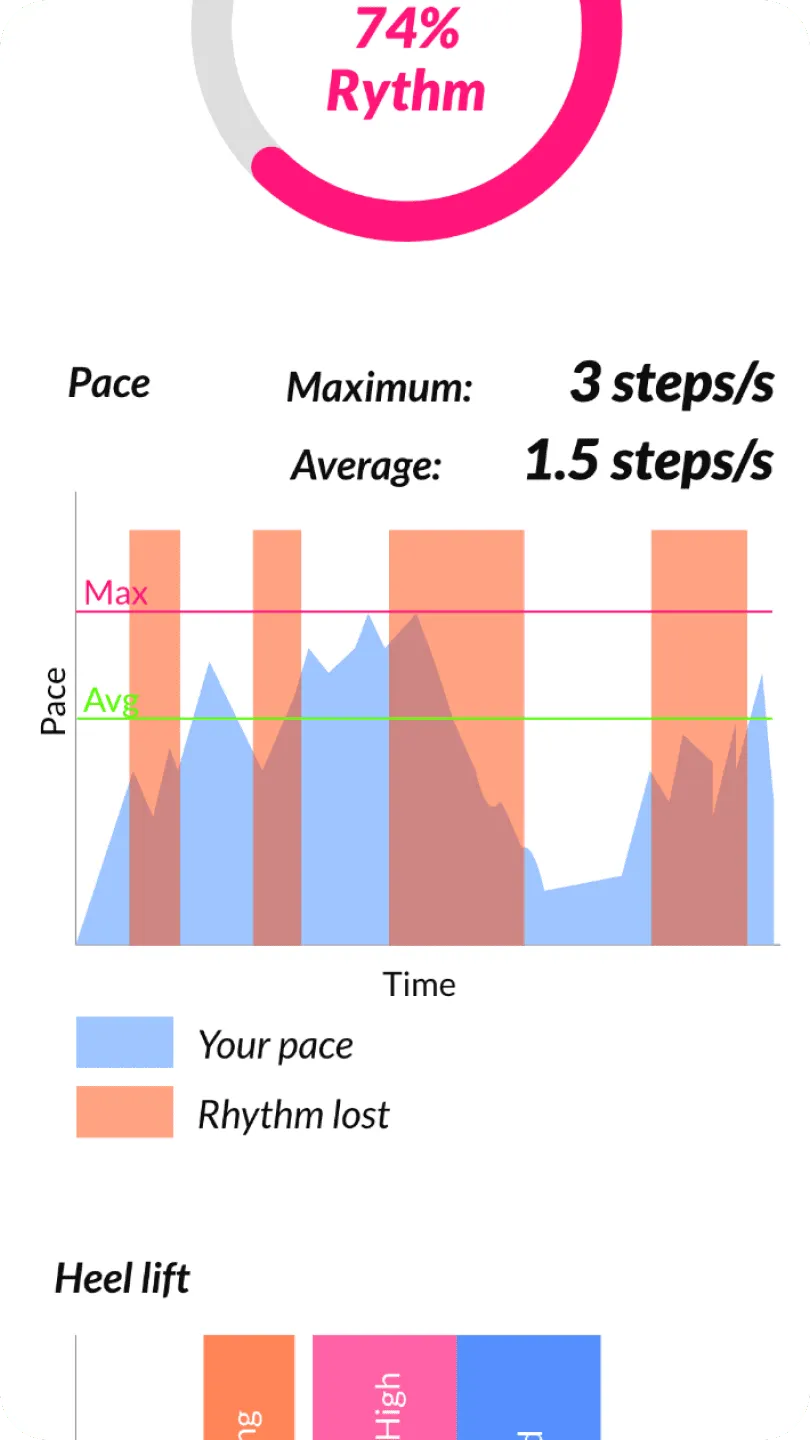
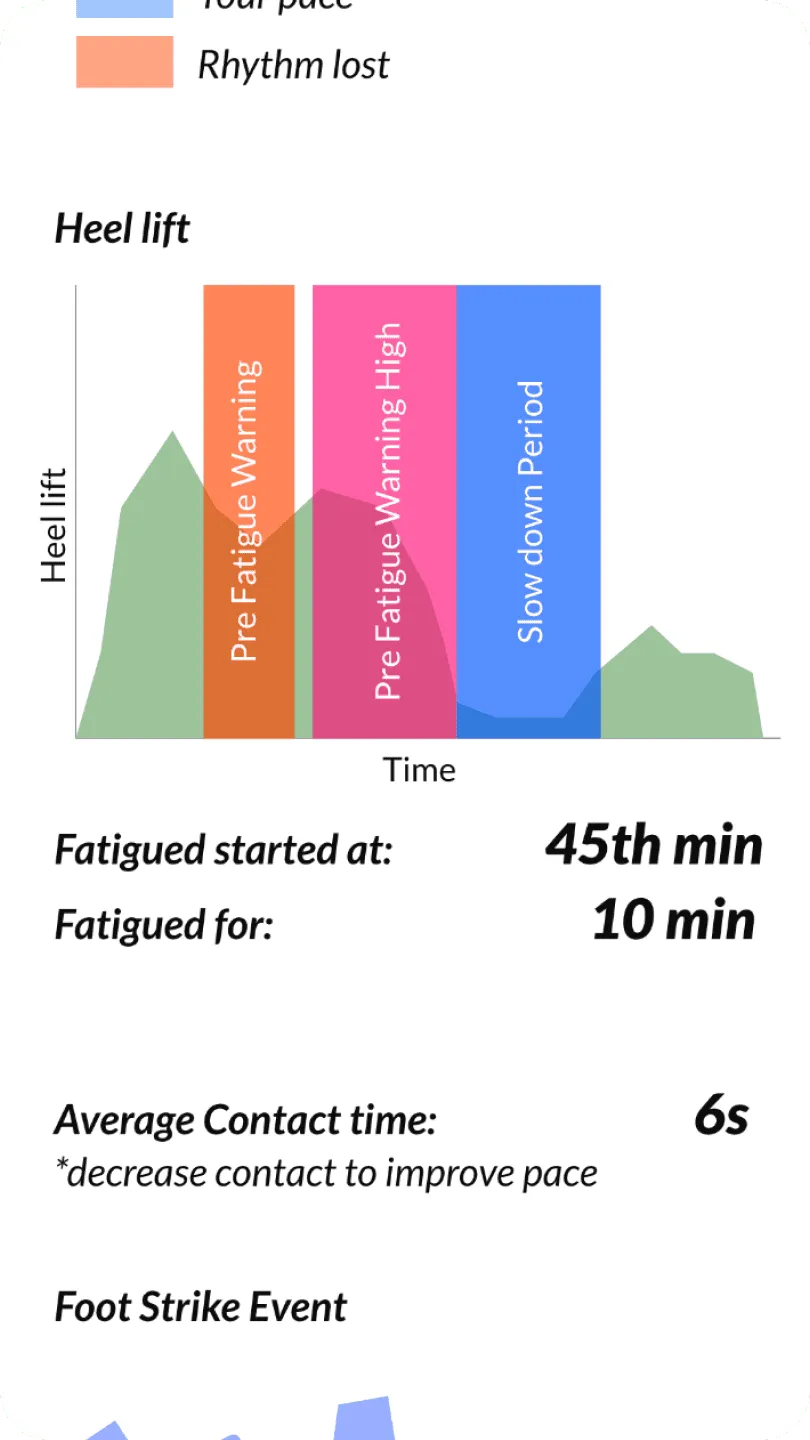


Prototype Development
Built the working prototype, also considering its weight, but encountered challenges fitting components into the desired small form factor. The prototype used Styrene casing, BLE 2.0, GPS, SD card, and LiPo battery.
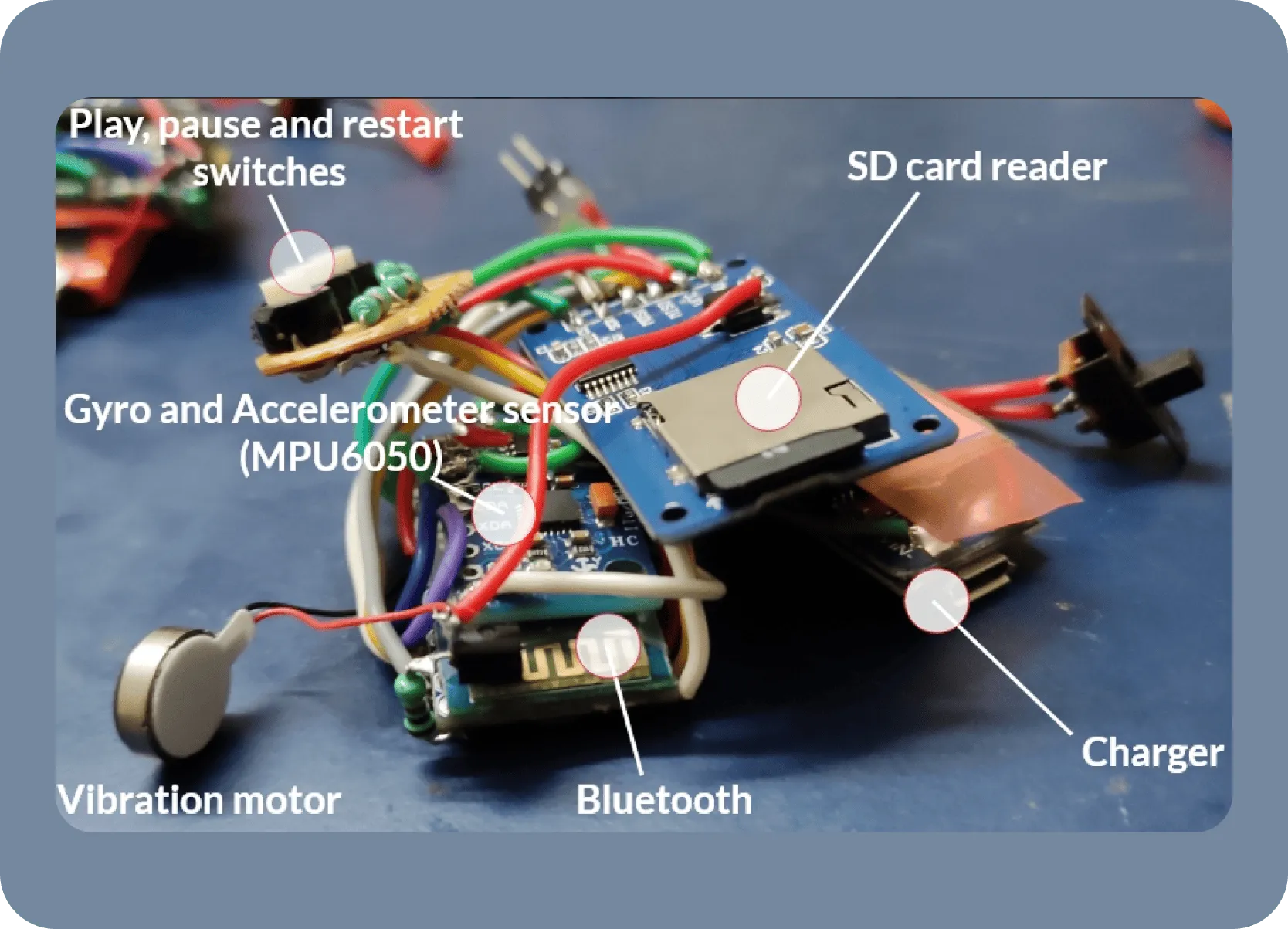
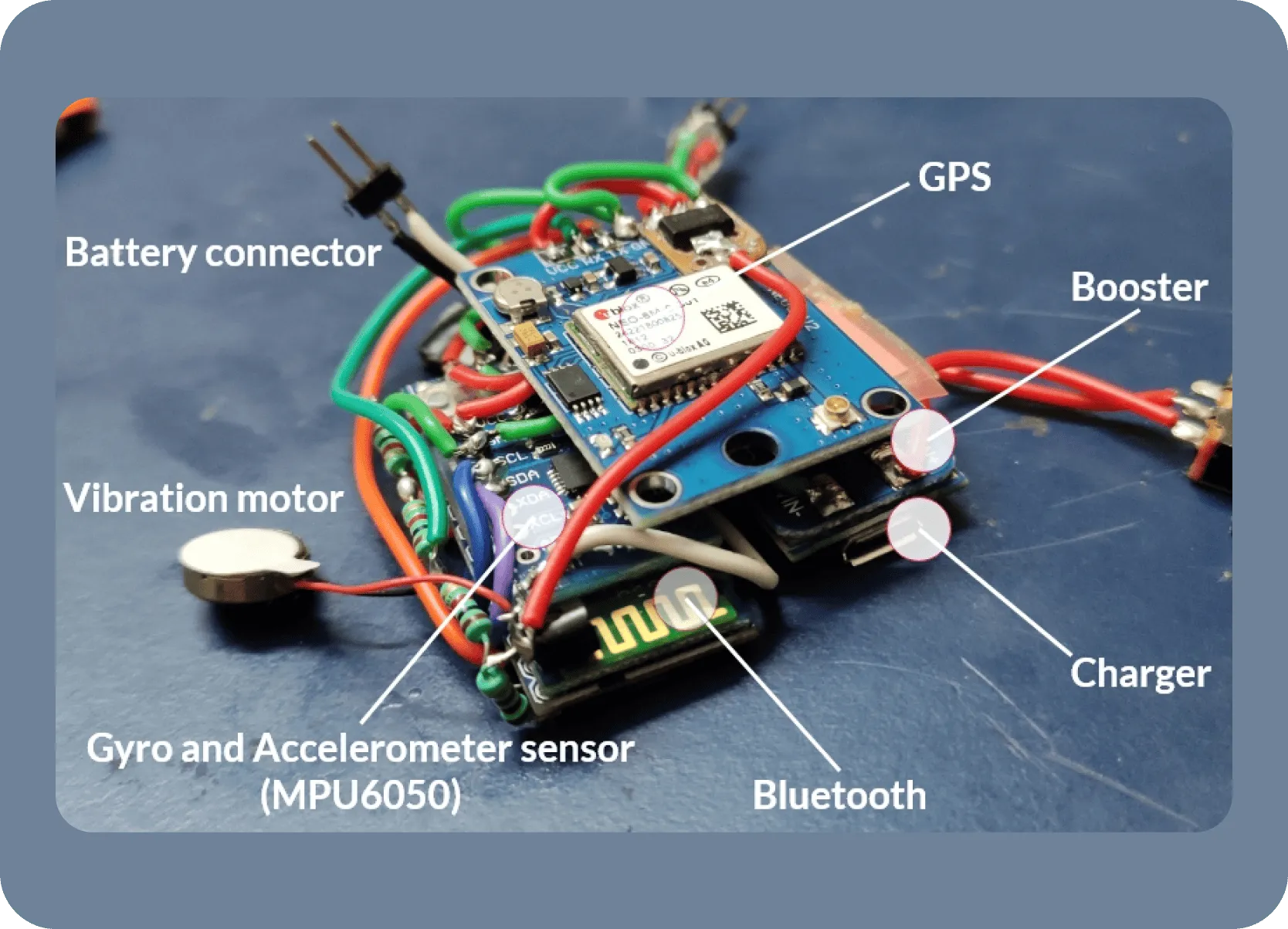
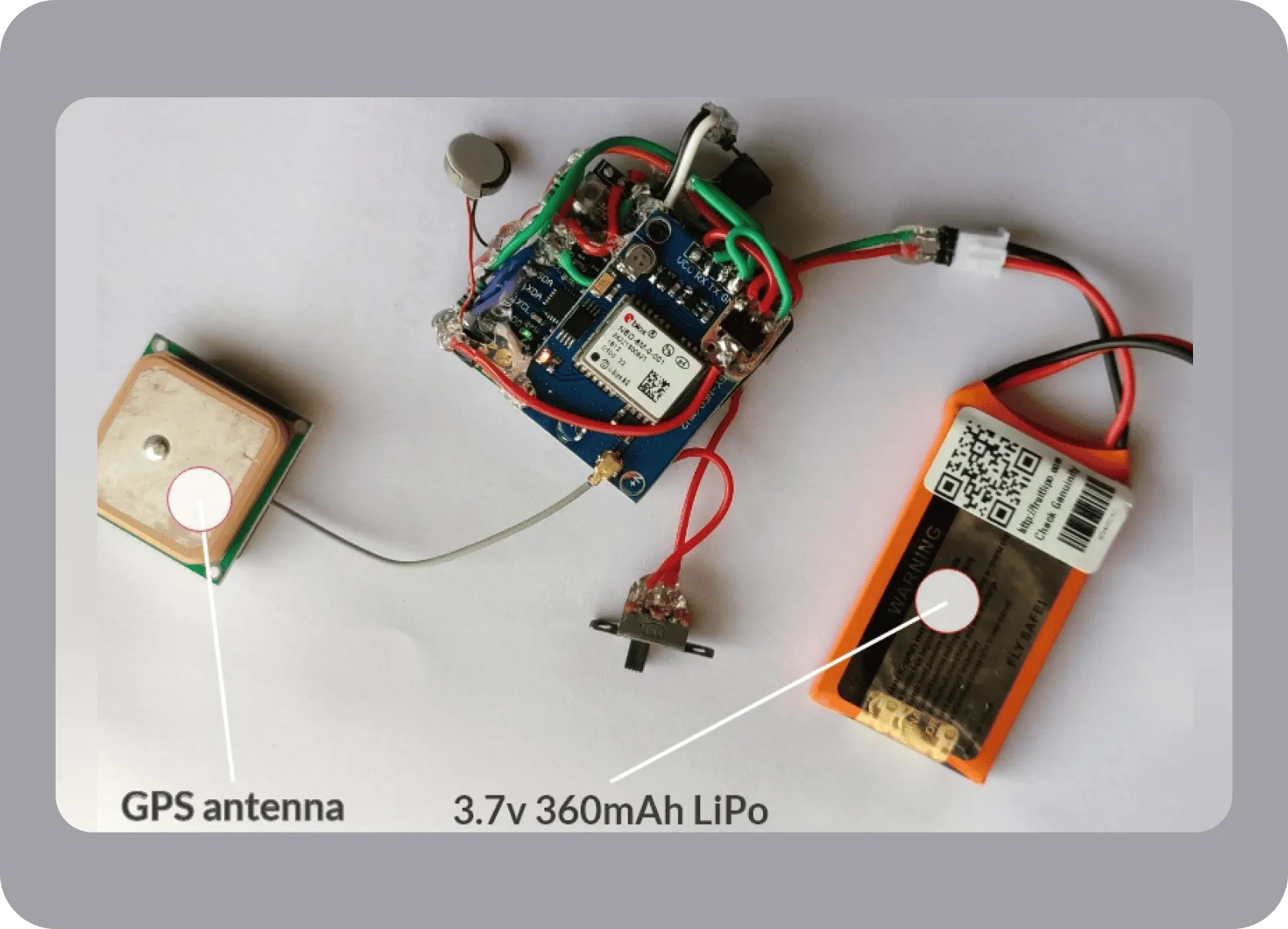
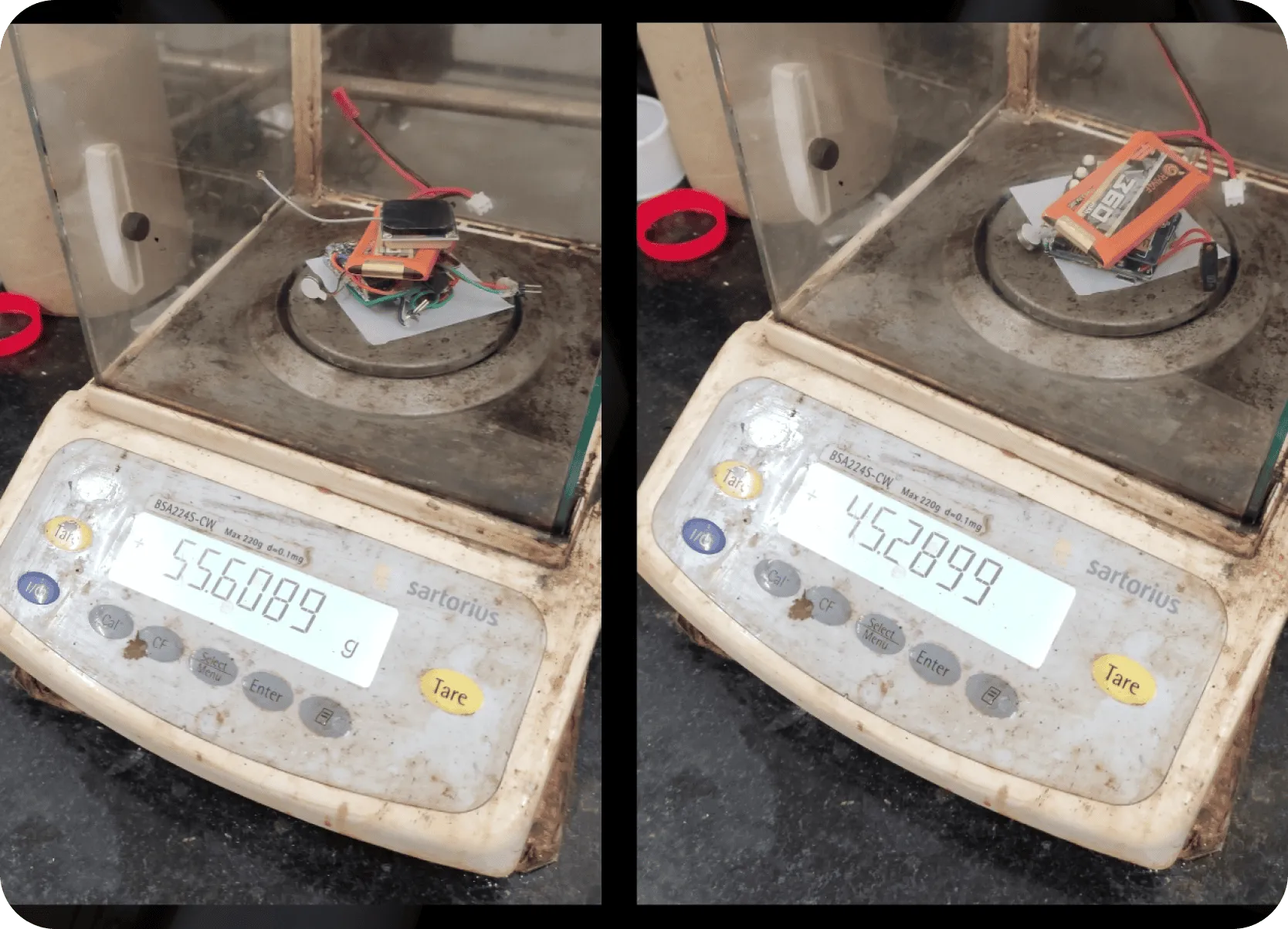
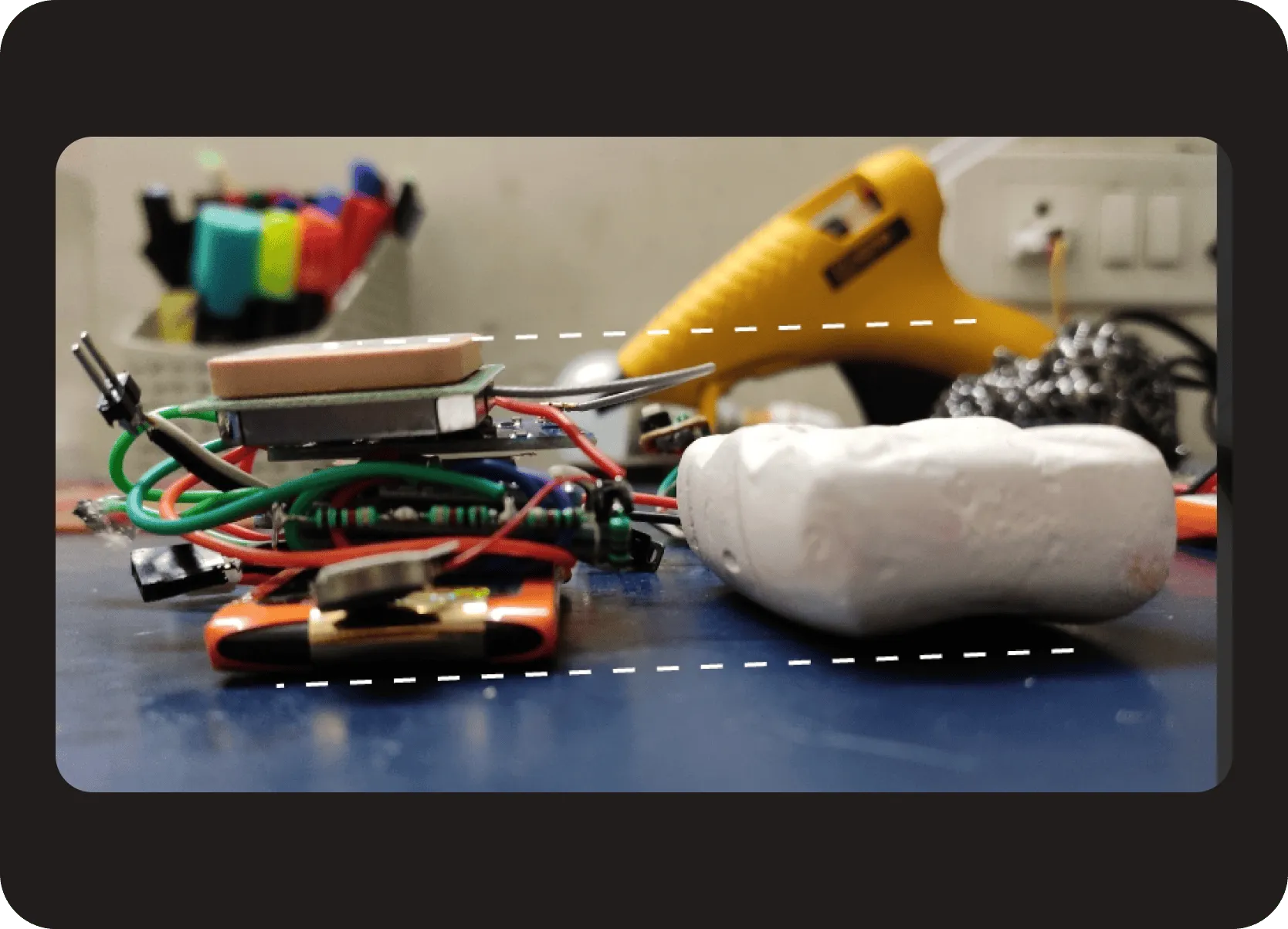
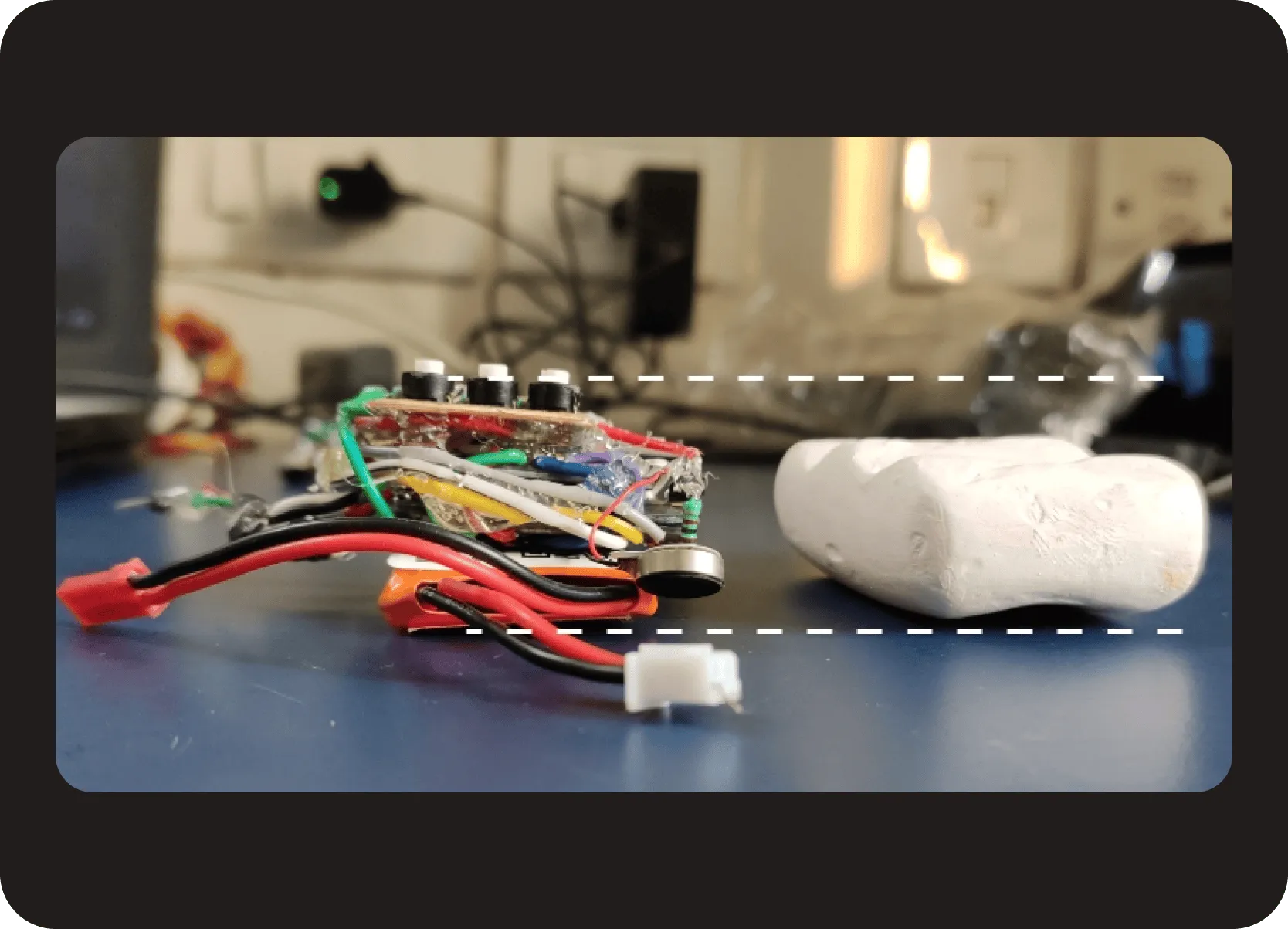
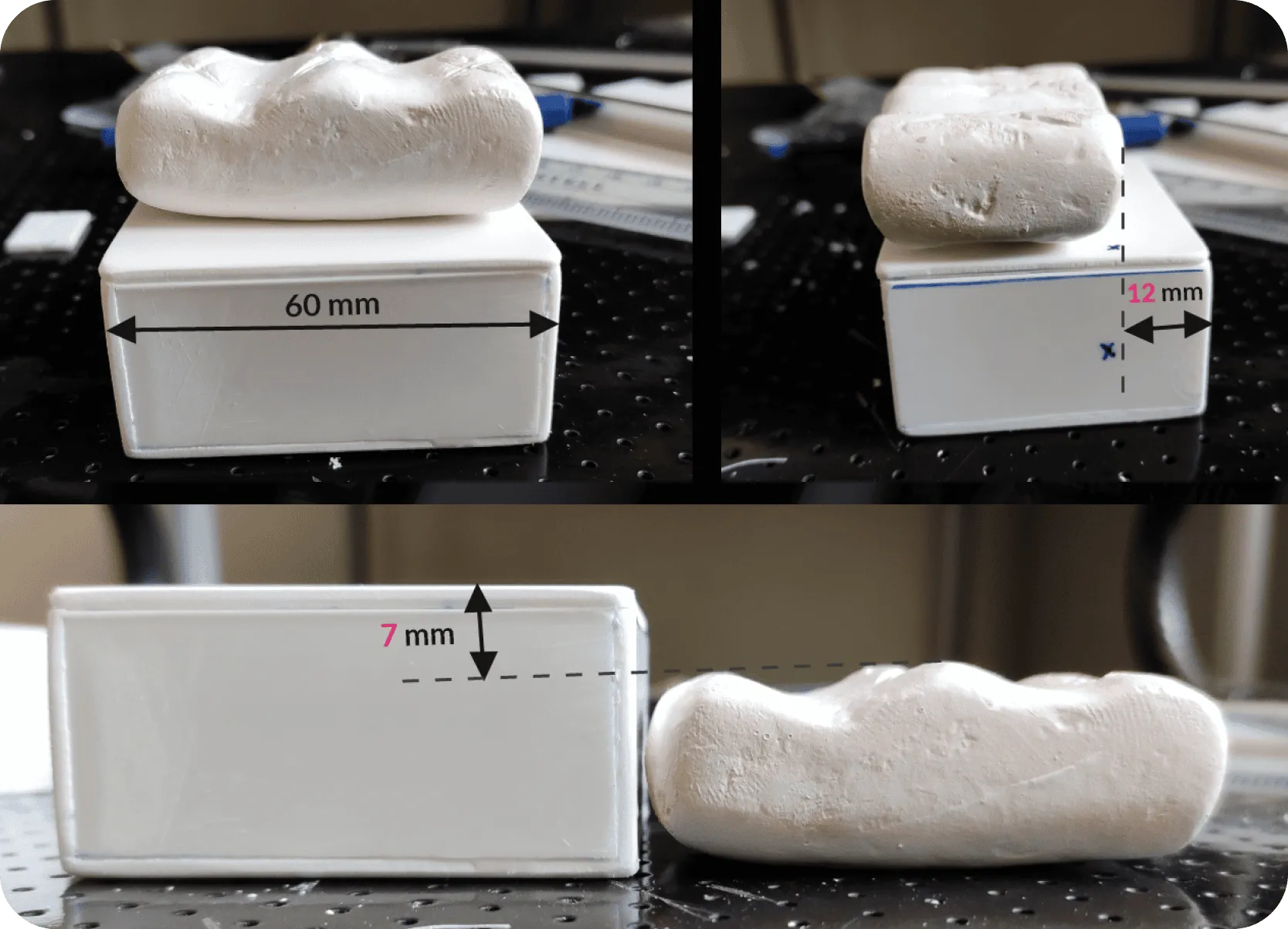
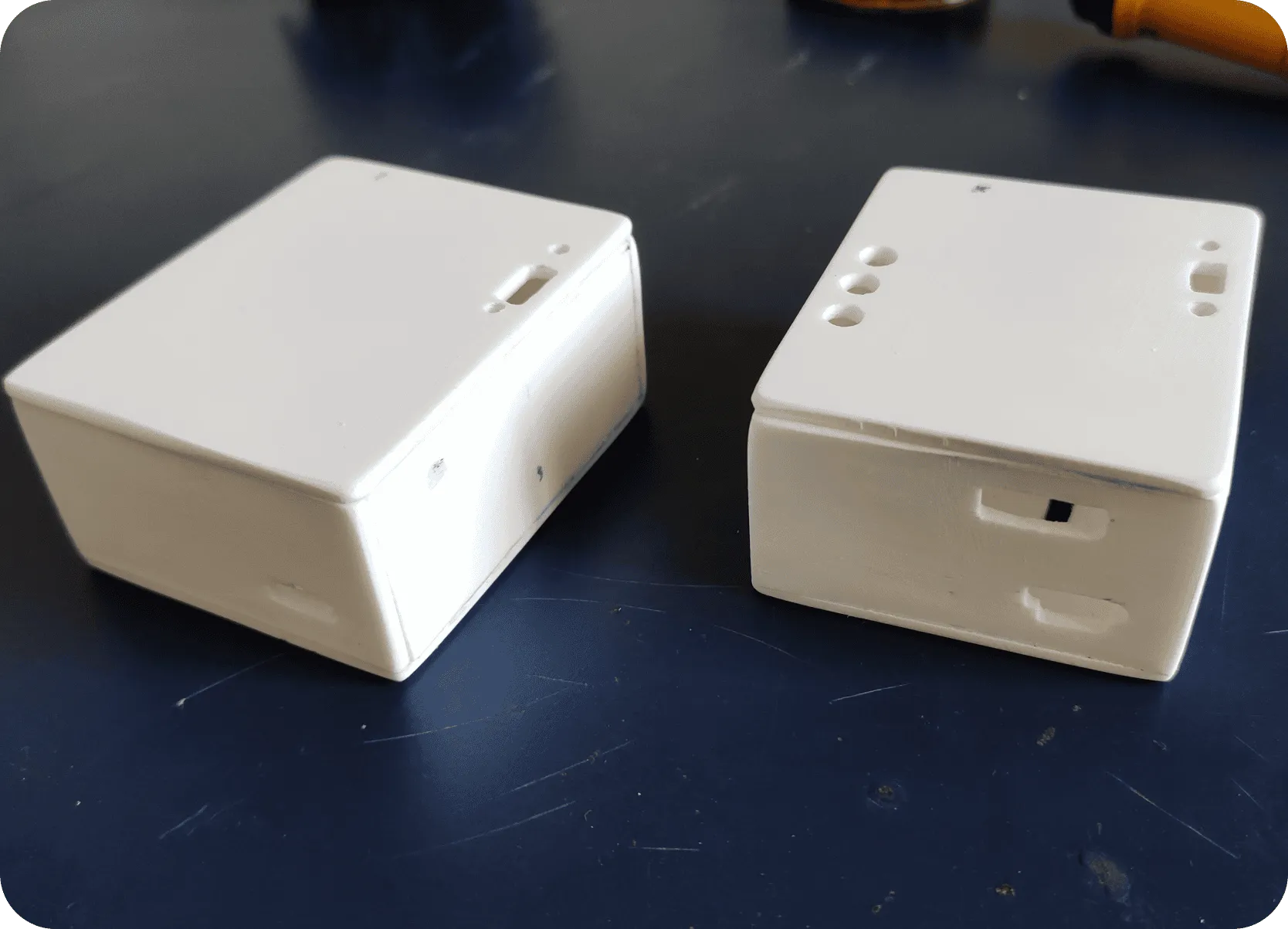
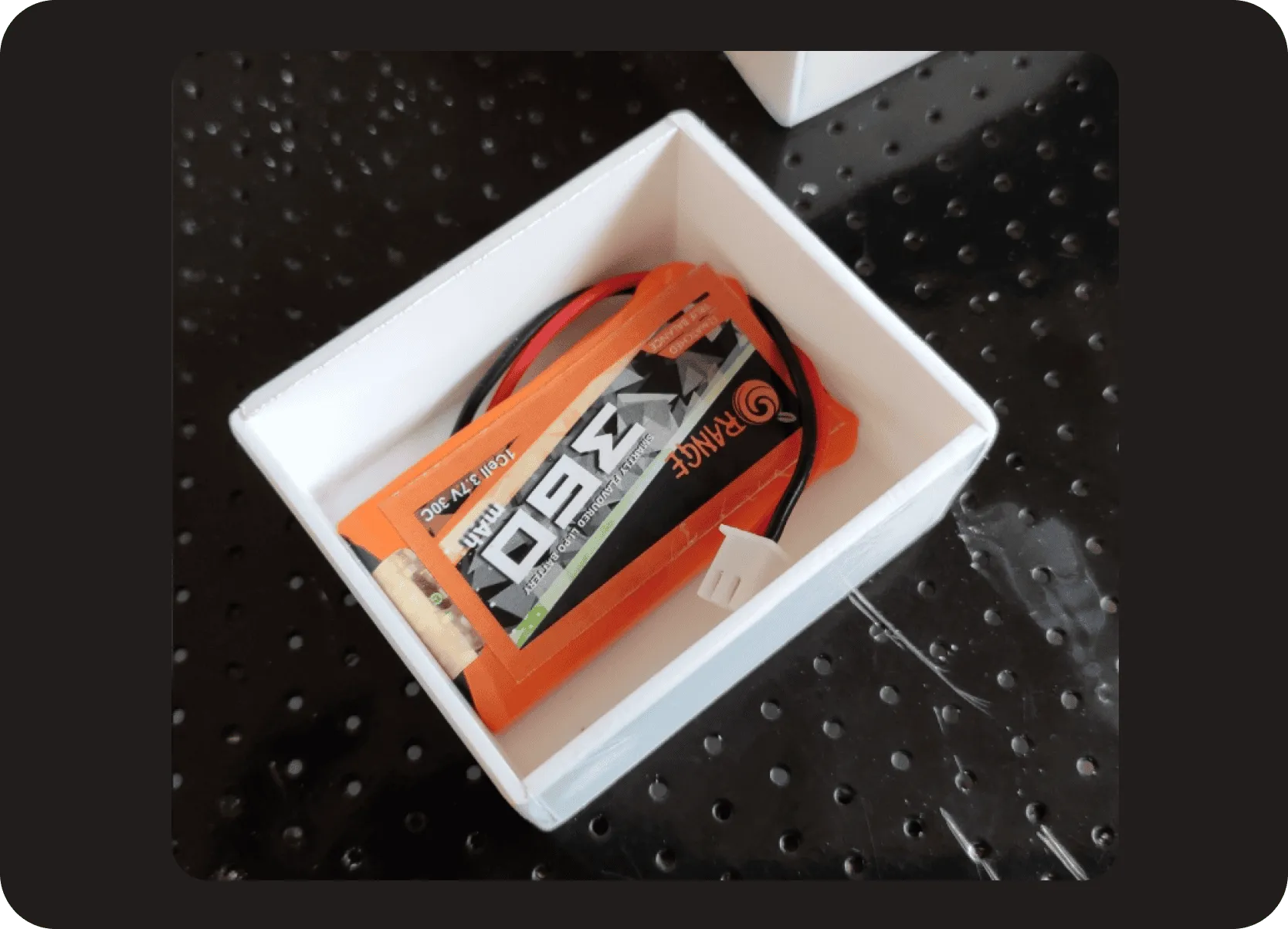
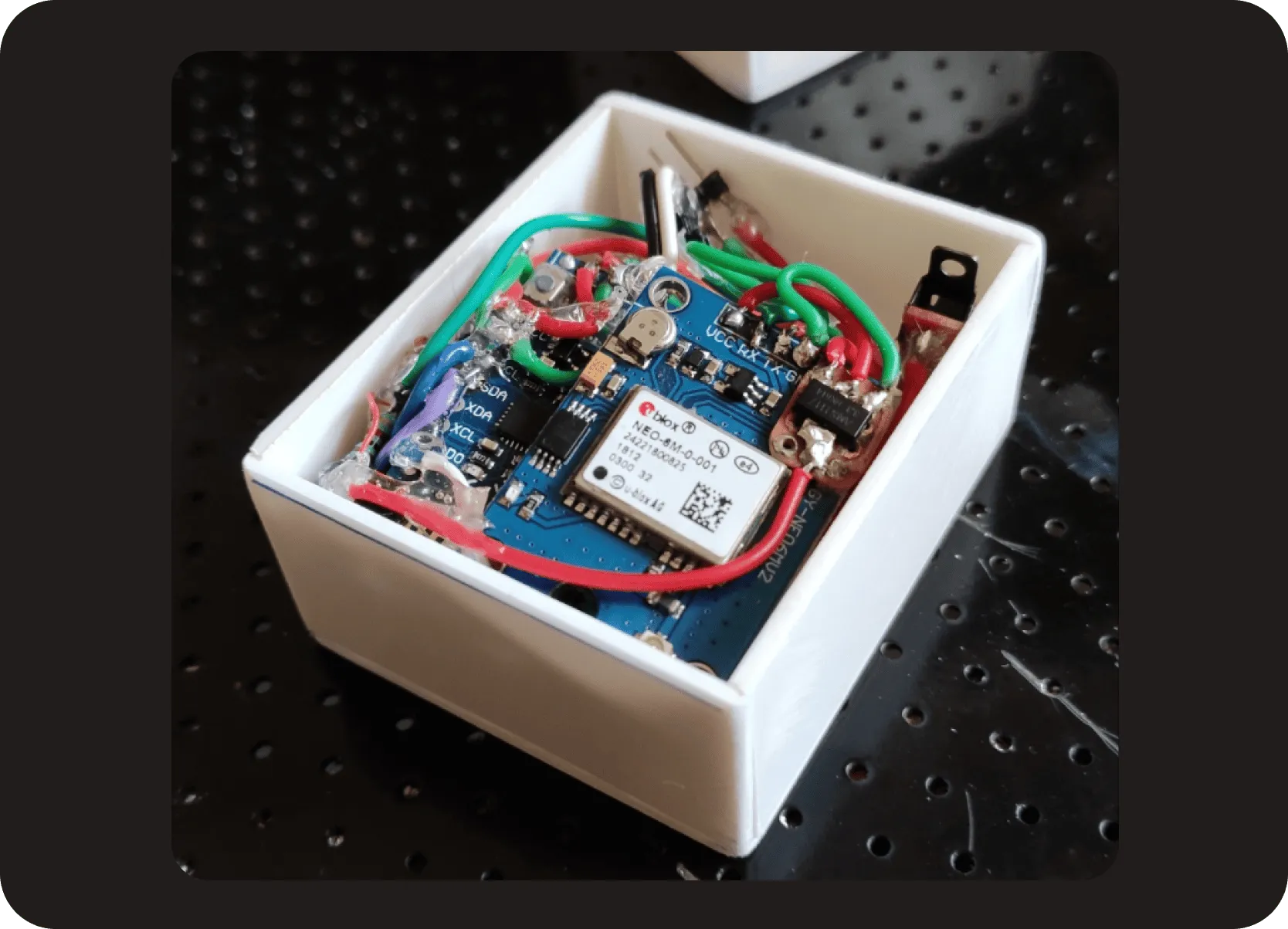
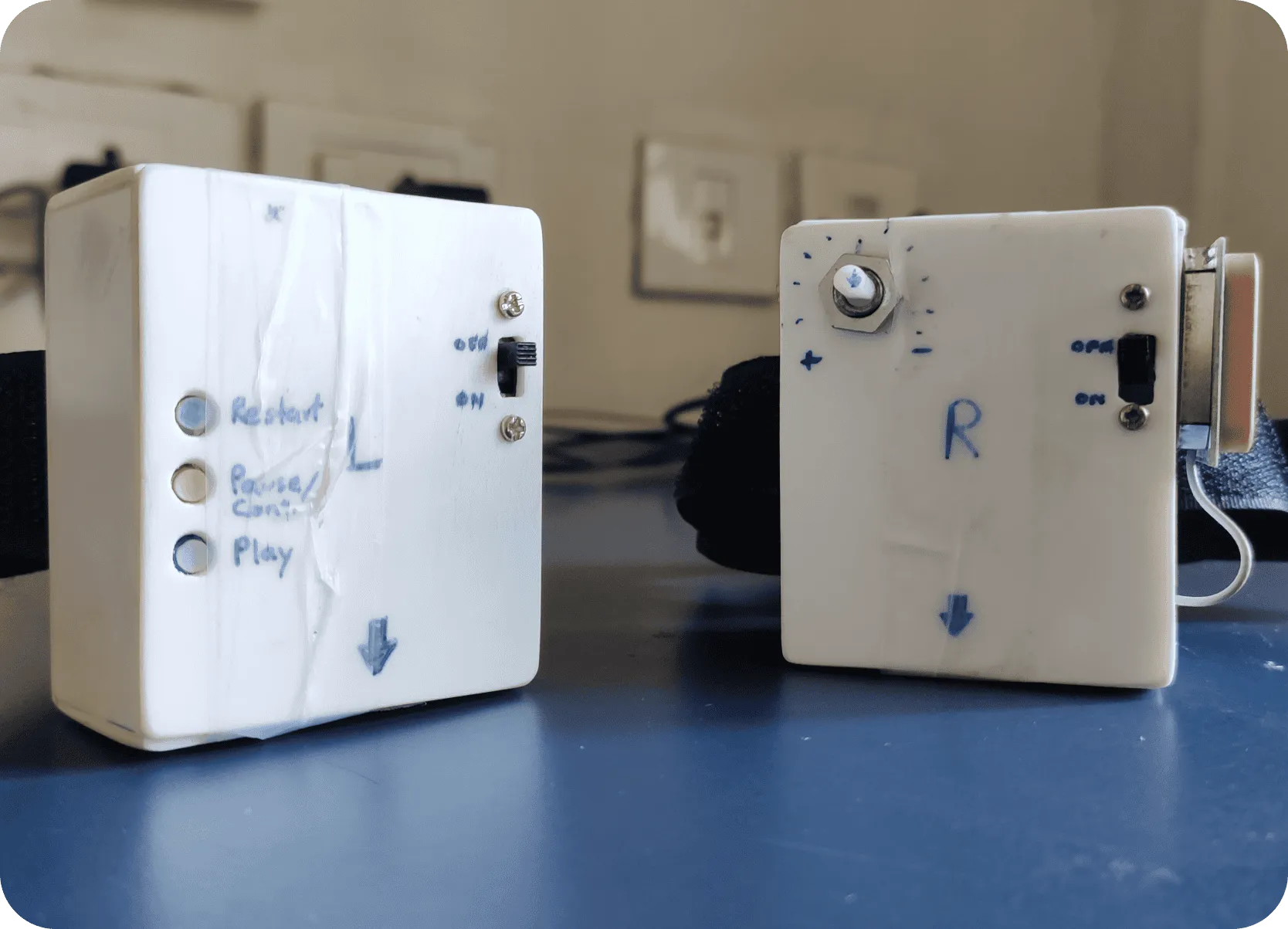

Prototyping Challenges: Size, Weight, Cost, and Feasibility Analysis
A key prototyping challenge was fitting all components (GPS, Bluetooth, IMU, battery, SD card slot) into a compact, shoe-mountable form factor for runners, while remaining cost-effective.
To validate our design goals, we benchmarked our pre-final prototype against the Mi Band v1 (minimalist, ₹999) and Samsung Gear Sport (feature-rich, ₹20k-₹22k). Our prototype (₹1800) successfully included GPS and significant SD storage, features absent in the Mi Band but present in the pricier Gear Sport.

While lacking the Gear Sport's display and using older Bluetooth, it proved affordable core performance tracking was achievable. The initial bulk, due to readily available parts, suggests a smaller final product (~60 x 44.6 x 11.6 mm, < 50 g) is achievable with a custom PCB.
Large-scale manufacturing could position it as a strong Mi Band competitor, offering more features at a similar price point, validating the potential for a capable yet affordable running tracker.
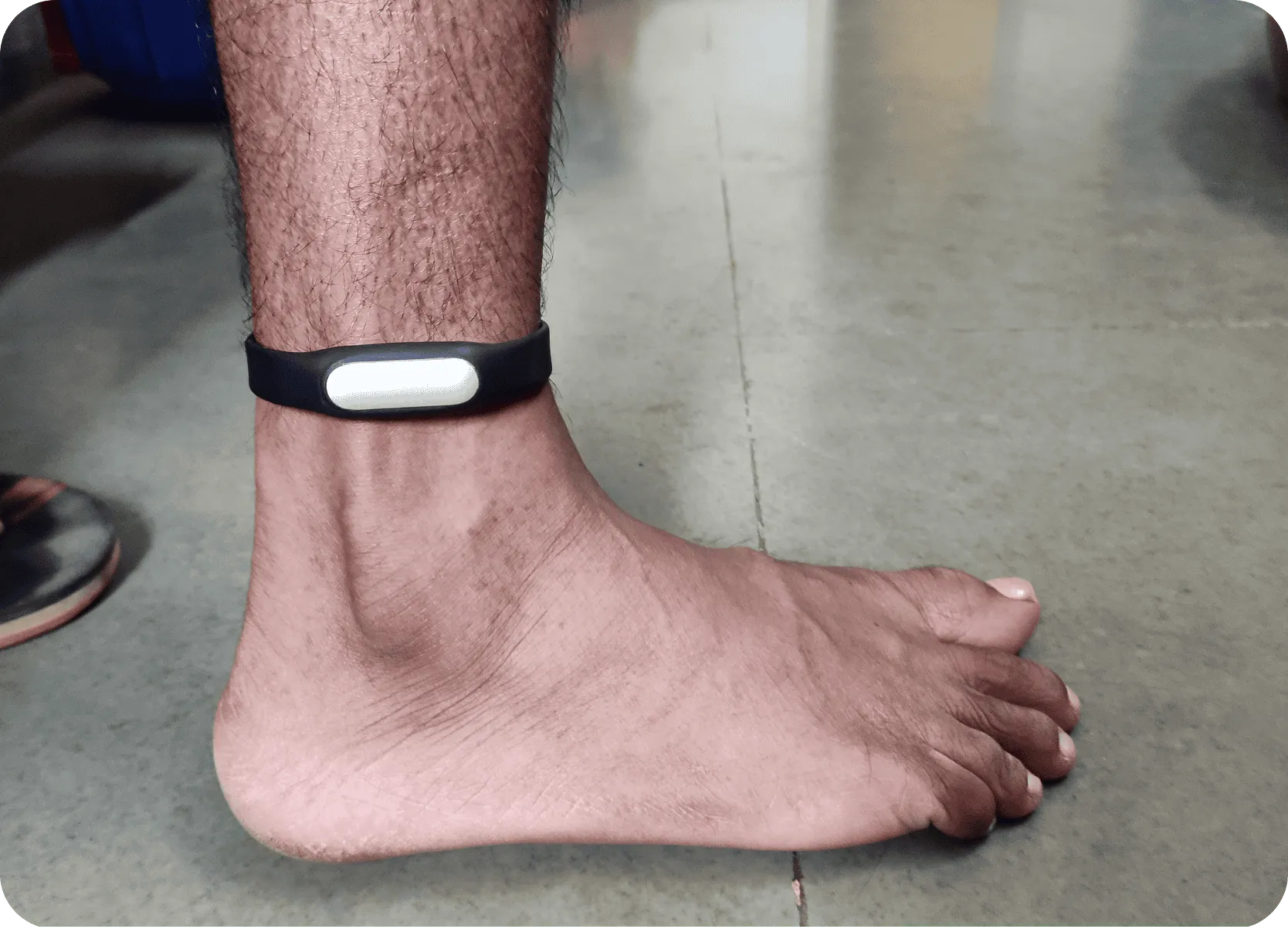
MI Band 1
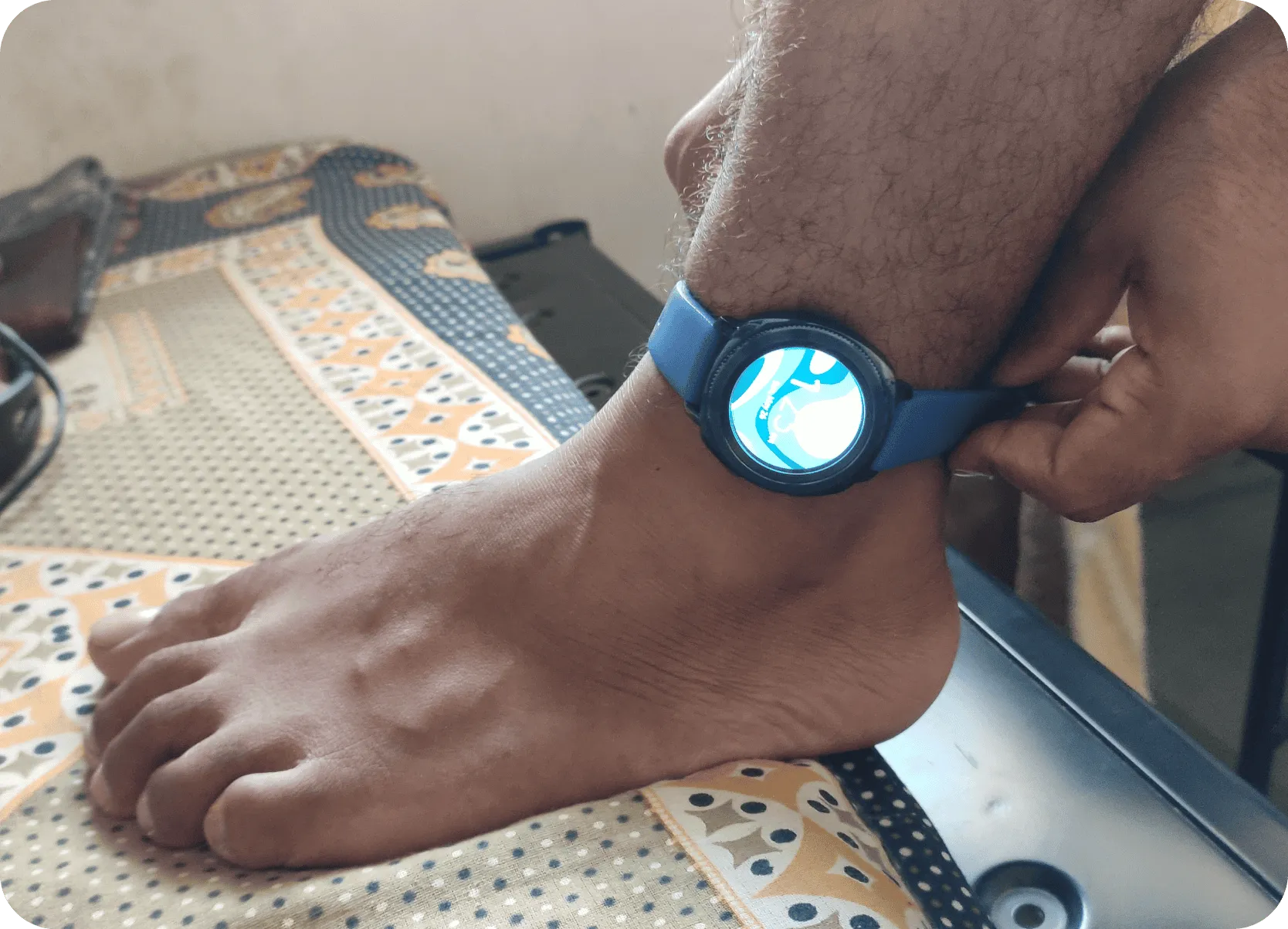
Samsung gear sports watch 2018
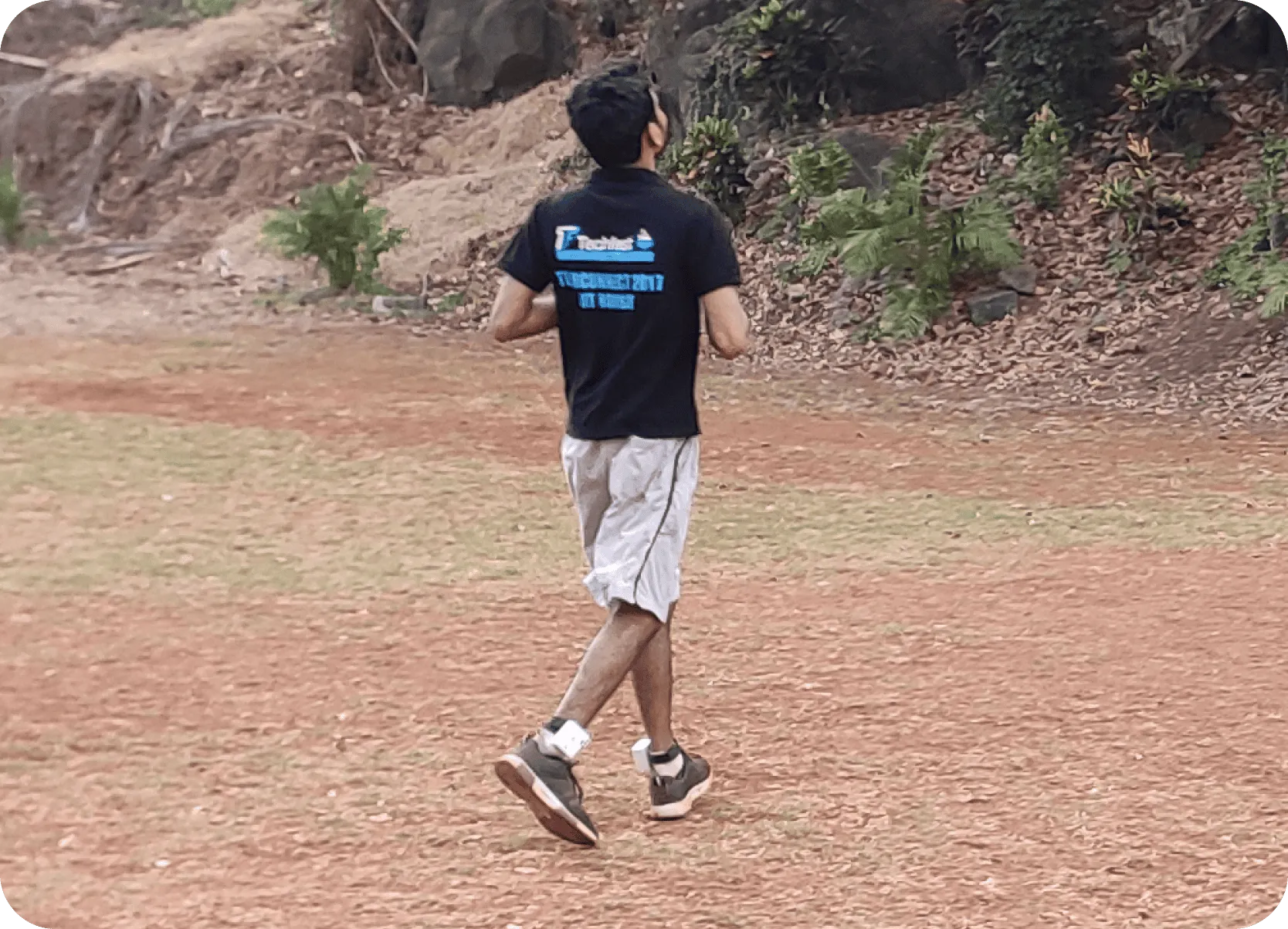
A distant view of Slingshot's initial prototype worn on foot
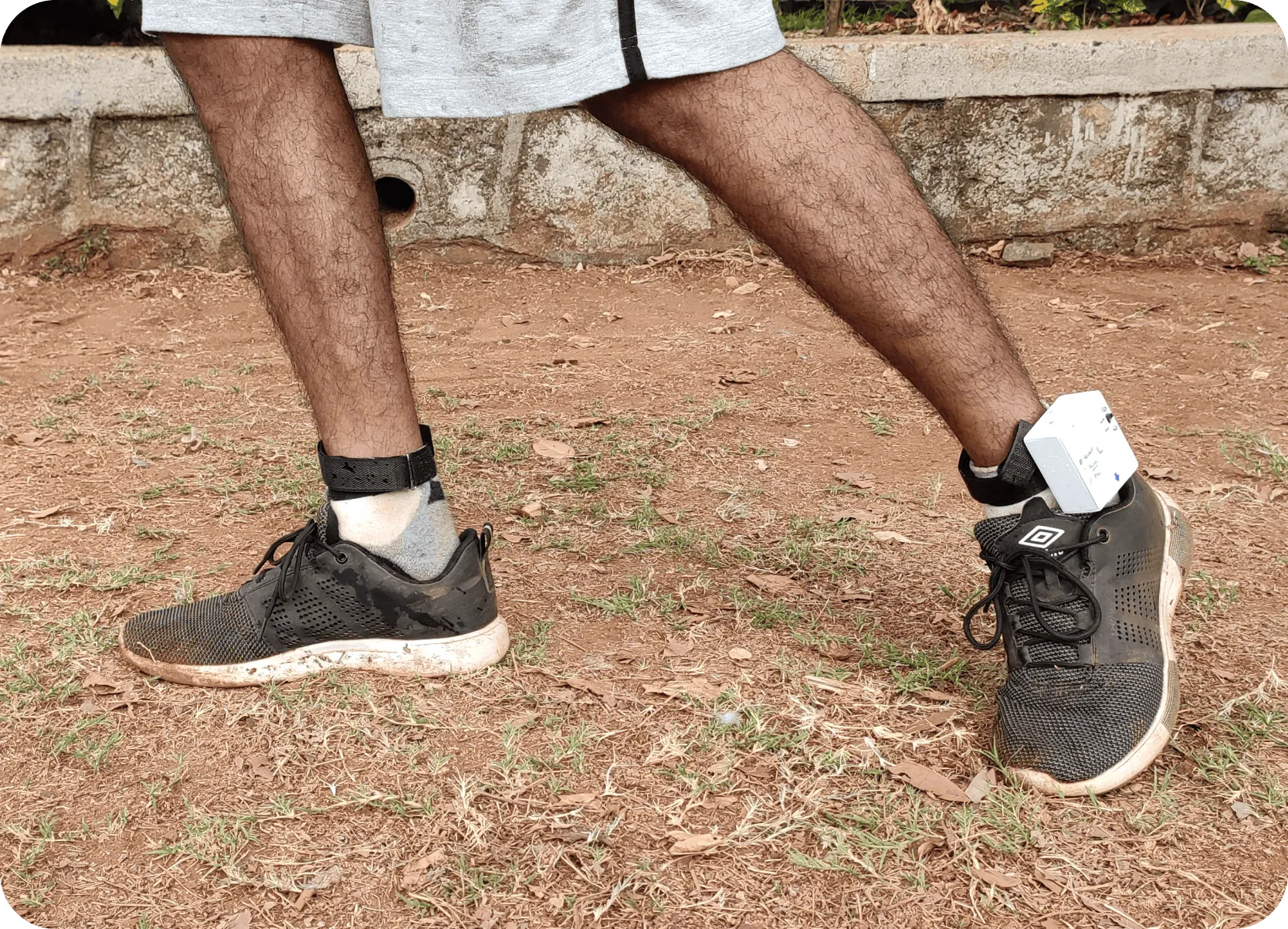
Slingshot's initial prototype worn on foot
Evaluation & User Feedback
Evaluated the pre-final prototype with two users (one regular, one general athlete) running on campus for 20 minutes. Measured gait parameters like heel lift, foot strike, and contact time, which were then displayed on the prototype website in data visualizations and basic running metrics.
-
Positive Feedback: Users found the detailed foot strike and fatigue data novel and valuable. The device weight was comfortable when worn on the ankle.
-
Comfort Issues: Straps were uncomfortable; easier mechanisms suggested.
-
Feedback Ineffectiveness: Vibrational feedback was noticeable during walking but not during running when worn on the ankle, failing to guide technique as intended. Body vibrations likely masked the device feedback.
-
Visualization Clarity: The regular athlete understood the app, but the general athlete found graphs unclear (specifically axis representation).
-
Suggestions: Live feedback indicator (showing device is working) and displaying key results on the device itself were requested.
Key Takeaways:
Visualization needs improvement for broader understanding. Ankle-based vibration is ineffective for running; alternative feedback methods (wrist vibration, audio cues via headphones) need exploration, though they require extra devices. Strap design needs improvement. Despite issues, the core concept generated user interest.
Conclusion & Future Scope
Slingshot demonstrates the potential for foot-worn wearables to provide runners with valuable gait analysis insights currently lacking in wrist-based trackers. This can empower athletes with a deeper kinematic understanding, leading to more efficient and safer running.
While initial evaluations showed promise and user interest, particularly regarding the unique gait data, key areas require further development:
-
Enhanced User Experience: Based on user feedback, data visualization should be refined to be more intuitive for all users. The physical design should also be improved, particularly the strap comfort and consideration of an on-device display.
-
Optimized Feedback Mechanisms: The ineffectiveness of ankle-based vibration during running suggests a need to explore alternative feedback methods, such as auditory cues or different vibration placements/intensities.
-
Expanded Fartlek Integration: Further research should focus on optimizing Fartlek guidance and fatigue mapping features to maximize their impact on training.
By addressing these areas, Slingshot can become a powerful tool for runners seeking to improve their technique, manage fatigue, and enhance overall performance.
Slingshot continues to evolve! Development has progressed to v7, featuring a smaller form factor, improved strap design, and an evolving demo website. For the latest updates and technical details, please visit Playground.
Featured in D'source
This project is featured in D'source, an OPEN DESIGN initiative by the Industrial Design Centre (IDC) at IIT Bombay in
collaboration with India's Ministry of Human Resource Development as part of the National
Mission in Education through Information and Communication Technology. D'source serves as
India's premier 'Creating Digital Learning Environment for Design' also called 'e-kalpa',
preserving traditional crafts while advancing contemporary design education nationwide.
Content licensed under Creative Commons Attribution-NonCommercial-ShareAlike 4.0 International License.
Born from my passion for design and running, and evolving from my earlier work on visualizing
footwear's impact on movement, "Slingshot" is a wearable device I aimed to create in 2019 to
unlock a runner's potential through gait analysis.
Now, having tackled twelve 10k races and four half marathons since Feb 2024, I deeply
appreciate the need for precise data and effective feedback. Acknowledging the significant
expansion of the running wearables market (Stryd, Coros Pod, Garmin Dynamics Pod, Milestone
Pod), I've revisited "Slingshot" with a runner's perspective, integrating personal insights
and technical design knowledge. This project represents my journey as an athlete designing for
athletes, bridging the gap between user experience and product development.
References
• Francisco Kiss, Konrad Kucharski, Sven Mayer, Lars Lischke, Pascal Knierim, Andrzej
Romanowski, Paweł W. Wo ́zniak. RunMerge: Towards Enhanced Proprioception for Advanced
Amateur Runners. 2017. Provocations & Works in Progress. DIS 2017, June 10-14, 2017,
Edinburgh, UK. http://dx.doi.org/10.1145/3064857.3079144
• Christina Strohrmann, Holger Harms, Gerhard Troster, Stefanie Hensler, Roland Muller. Out
of the Lab and Into the Woods: Kinematic Analysis in Running Using Wearable Sensors. 2011.
Paper Session: On the Move. UbiComp'11 / Beijing, China.
• Tim Op De Beéck, Wannes Meert, Kurt Schütte, Benedicte Vanwanseele, and Jesse Davis. 2018.
Fatigue Prediction in Outdoor Runners Via Machine Learning and Sensor Fusion. In KDD '18:
The 24th ACM SIGKDD International Conference on Knowledge Discovery & Data, Mining, August
19-23, 2018, London, United Kingdom. ACM, New York, NY, USA, 10 pages.
https://doi.org/10.1145/3219819.3219864
• Maheshya Weerasinghe, G.K.A Dias, Anuja Dharmaratne, Damitha Sandaruwan, Aruni Nisansala,
Chamath Keppitiyagama, Nihal Kodikara. Computer Aid Assessment of Muscular Imbalance for
Preventing Overuse Injuries in Athletes. 2016. ICCIP '16, November 26-29, 2016, Singapore,
Singapore. DOI: http://dx.doi.org/10.1145/3018009.3018023
• Jari Parkkari, Urho M. Kujala and Pekka Kannus. Is it Possible to Prevent Sports
Injuries?. 2001. Sports Med 2001; 31 (14): Pg 985-995.
and 30+ research papers and articles...
Up next

Cyclux—Reinventing bike security with tech
✨ Research, Product, UX
/
2018

Elevating JioMeet's Digital Front Door
🏆 Research, Redesign, Website, UX
/
2021 - 2022

McJio Celebrations: Next-Gen Virtual Parties
✨ Research, Pitch, Concept, UX
/
2022 - 2023

JioMeet PIP & Screenshare Refresh
Research, Redesign, Feature, UX
/
2022

Driving Innovation and Enhancements at Jio
UX, Collection, Showcase
/
2019 - 2024
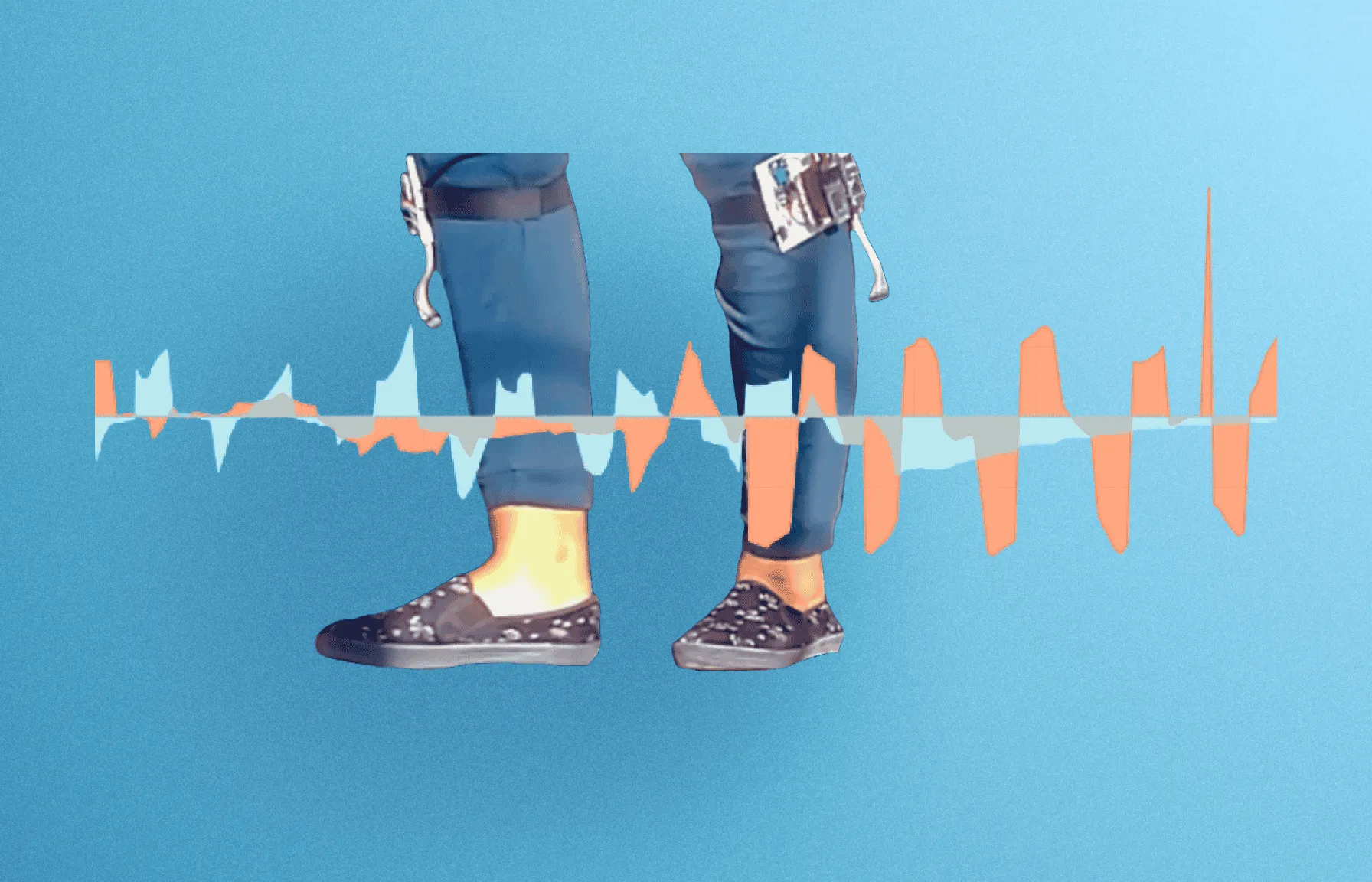
Visualizing Footwear's Impact on Movement
Academic, Research
/
2019